Inbox and Environment News: Issue 606
November 19 - 25, 2023: Issue 606
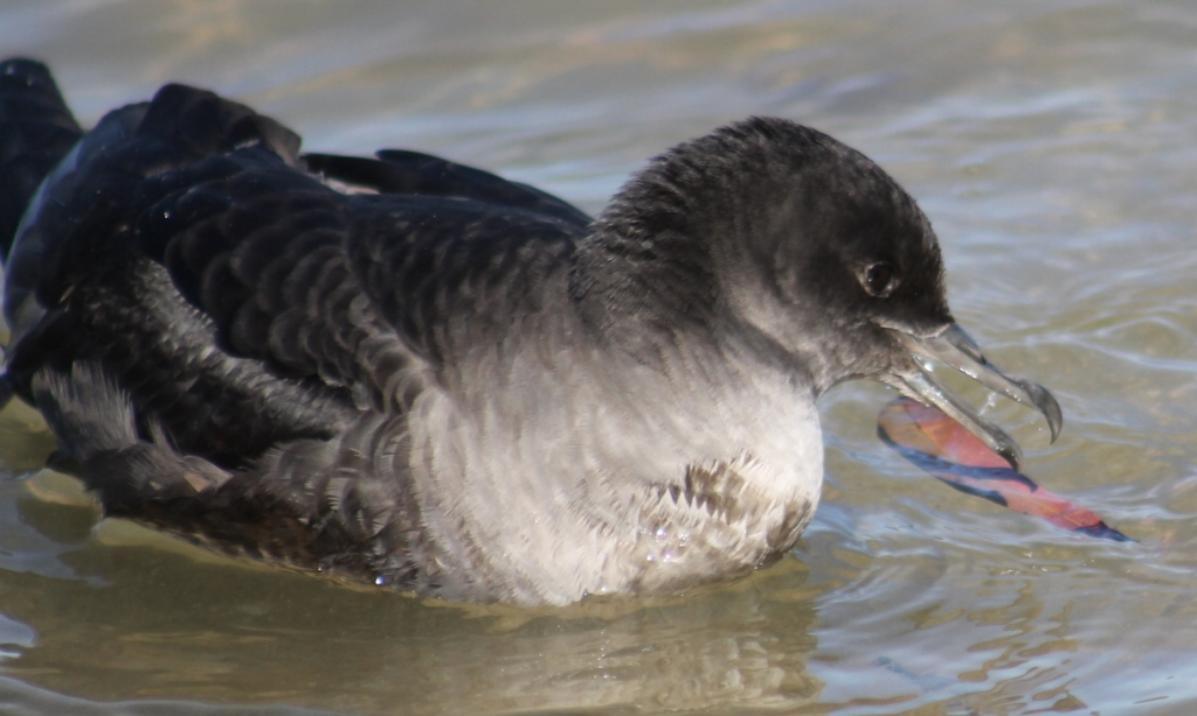
PNHA: Invertebrate Night Life In McCarrs Creek Reserve November 25 - All Welcome - Part Of Great Southern BioBlitz 2023

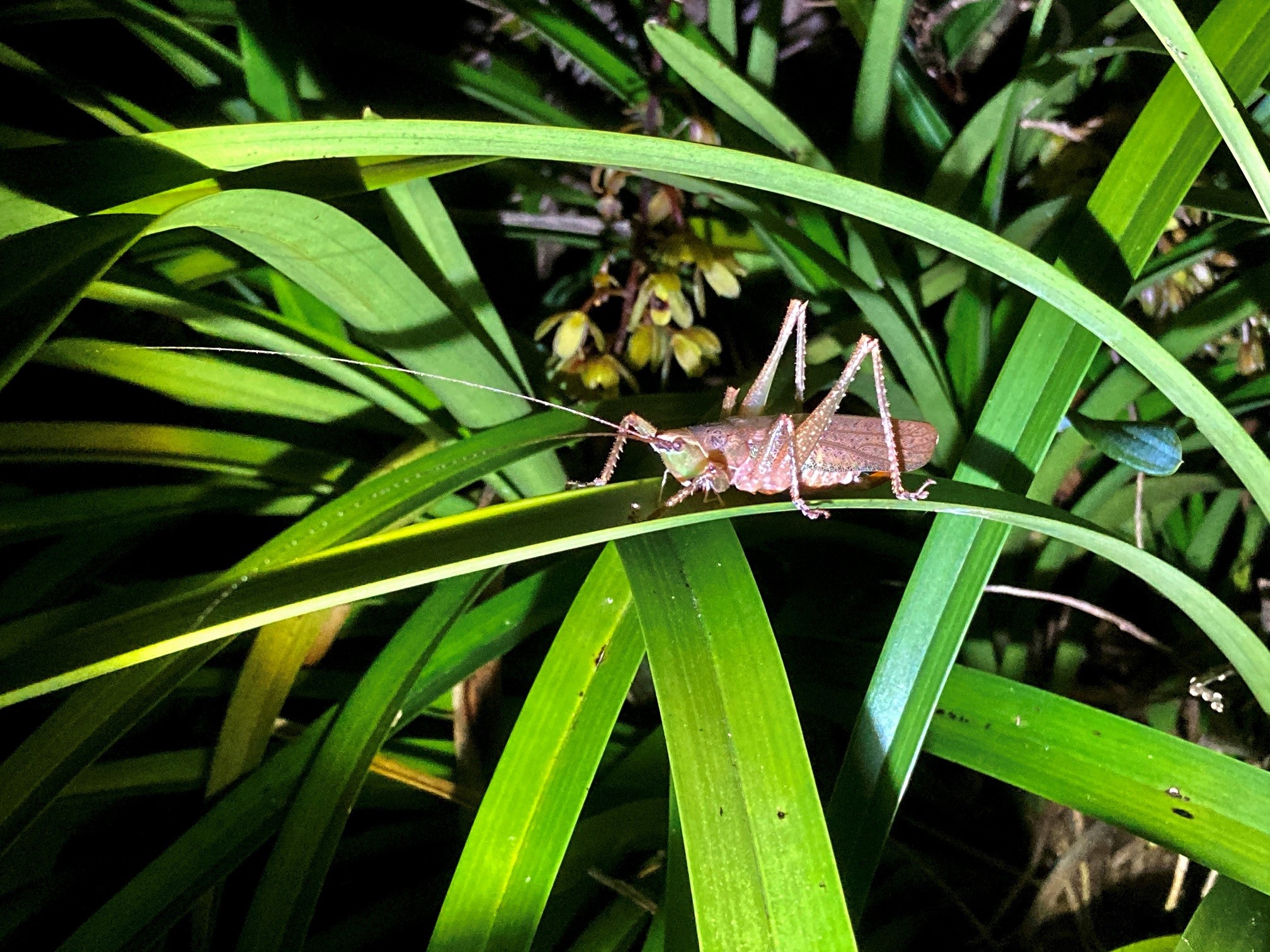

Collaroy Beach Coastal Works: Have Your Say - Closes December 3
- completing the submission form here
- emailing council@northernbeaches.nsw.gov.au
- writing to council at Northern Beaches Council, PO Box 82 Manly NSW 1655.
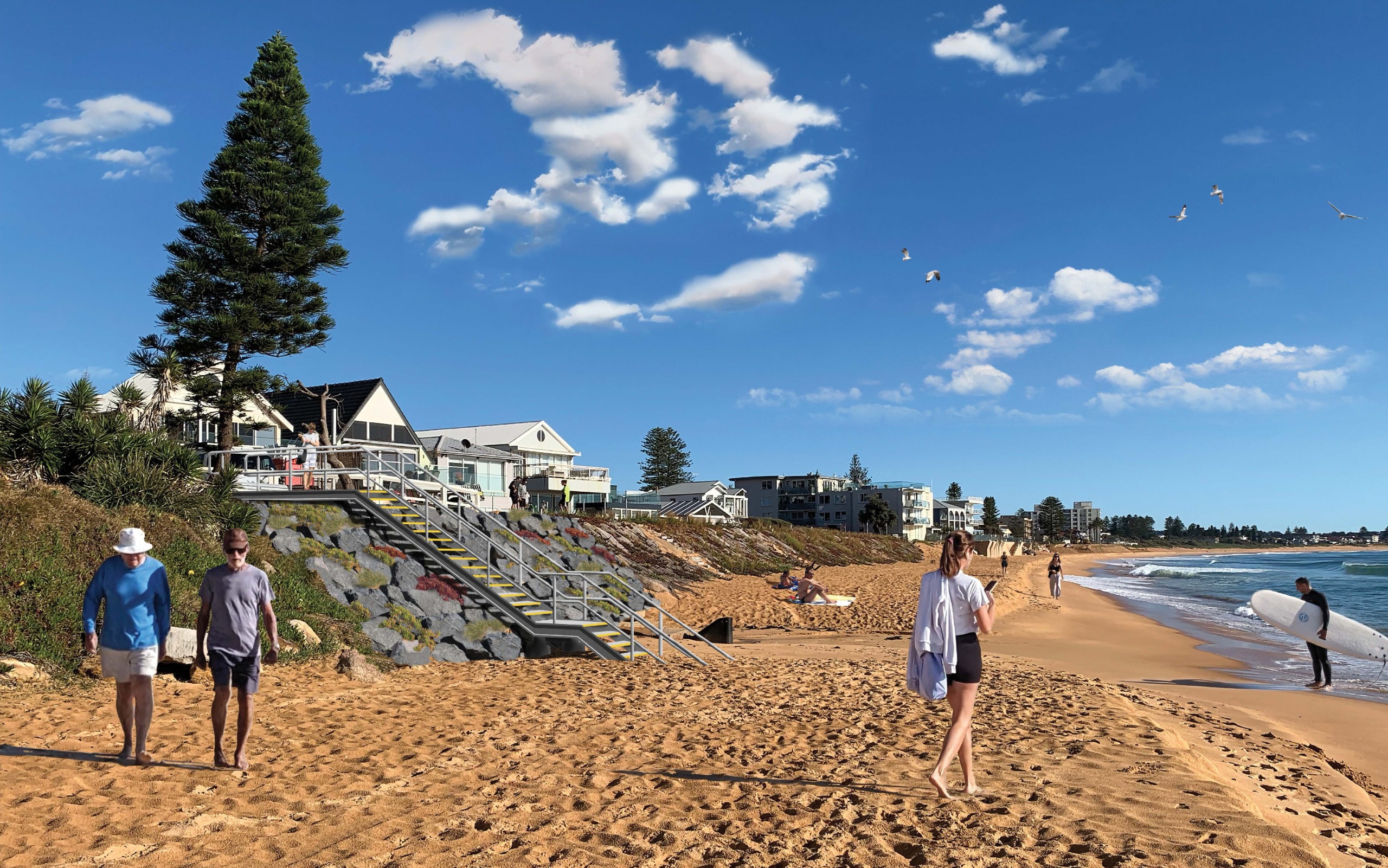
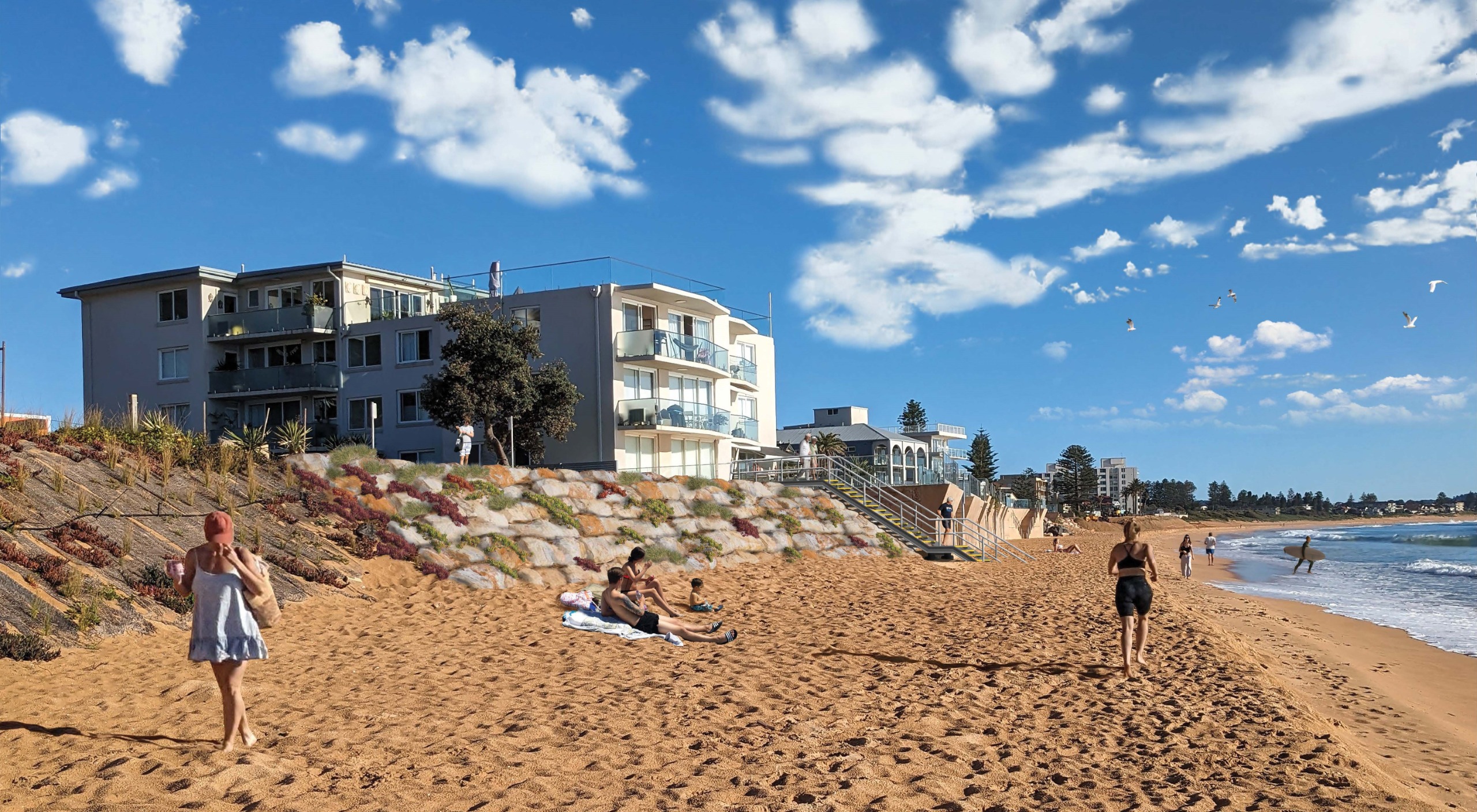
Yardbirds
West Head Lookout Update
- >reinstatement of the previous sandstone paving and the bronze map plinth
- > installation of the stainless-steel balustrade along the lower retaining wall
- > planting of native species in the garden beds.

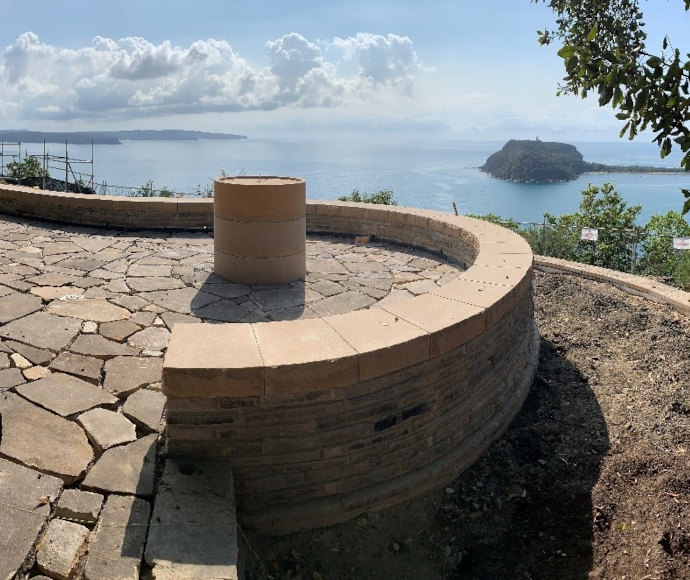
Norah Head Community Group Has Long Standing Connections
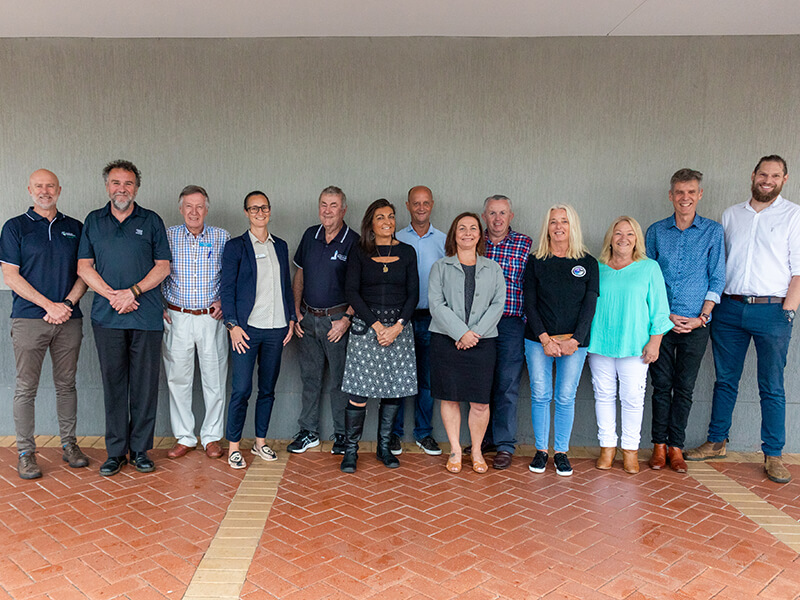
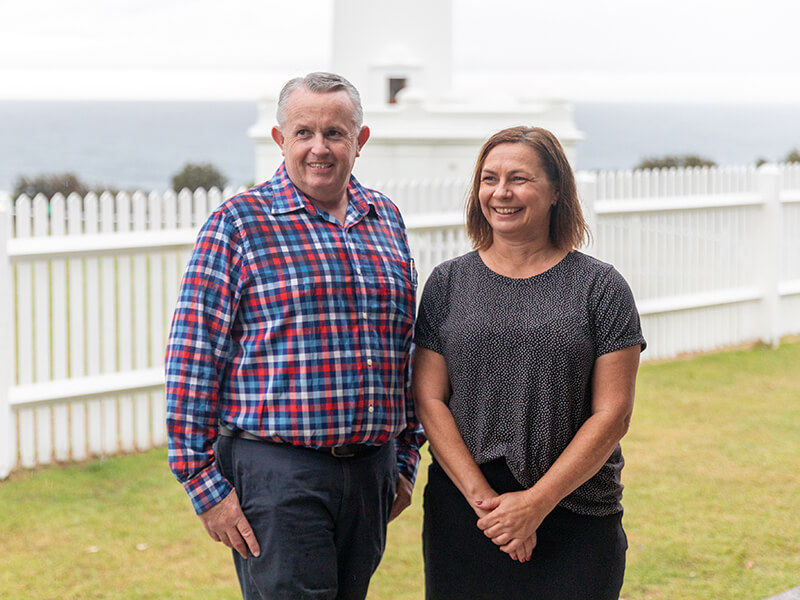
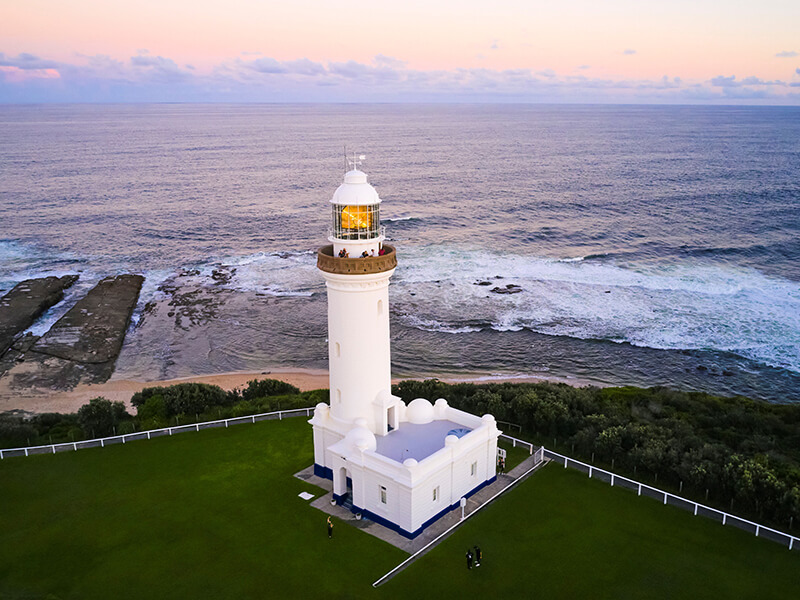
Communities And Industry To Have Their Say As NSW Accelerates Renewable Energy Transition
Next Steps To Beat Plastic Pollution In NSW: Have Your Say
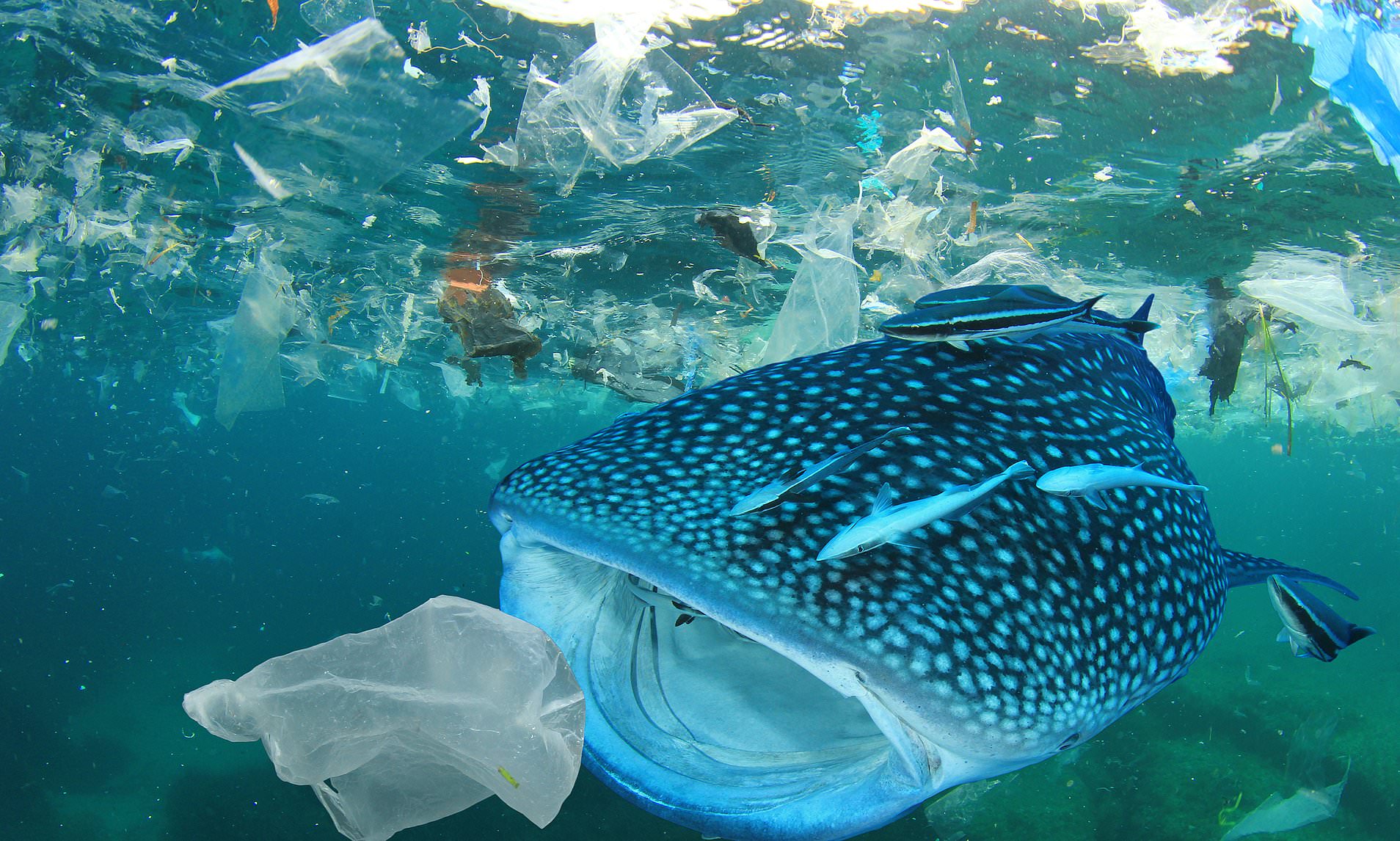
- Are frequently littered or release microplastics into the environment;
- Contain harmful chemical additives; or
- Are regulated or proposed to be in other states and territories.
- Items containing plastic such as lollipop sticks, cigarette butts, bread tags and heavyweight plastic shopping bags are some of the problematic products that could be redesigned or phased out.
Upcoming Workshop With Permaculture Northern Beaches + 2023 AGM + 2023 Raffle
 Gardening for a Long Hot Summer
Gardening for a Long Hot Summer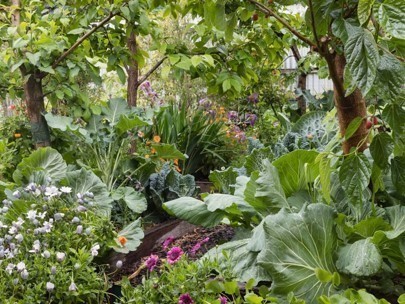
Finding Frogs In Warriewood Wetlands
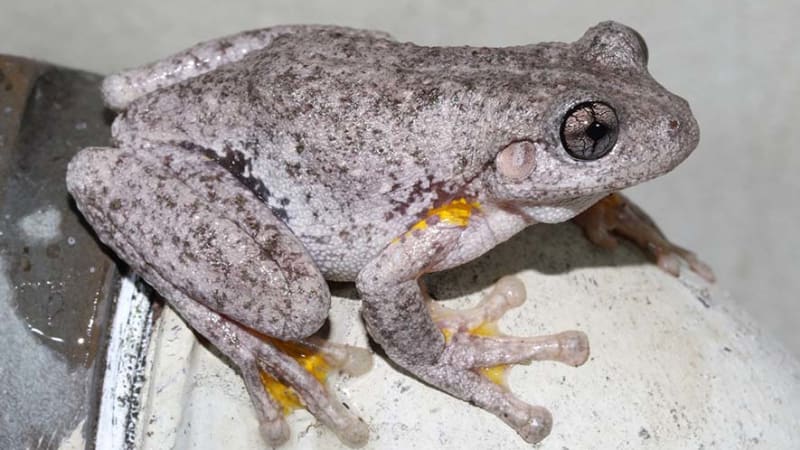
Creative Christmas: Making Natural Christmas Decorations At Narrabeen + Avalon
 Saturday, 2 December 2023 - 10:00 am to 01:00 pm
Saturday, 2 December 2023 - 10:00 am to 01:00 pmJoin The Avalon Christmas Tree Decoration Program
Wakehurst Parkway Update: REF For Proposed Works Available - Feedback Closes December 6
Sydney Local Native: Pittwater Edition Published
- average maximum height and width
- a description of the plant's form
- flower colour and flowering season
- an overview of the plant's best features
- its preferences for soil, water and light
- where it is naturally distributed.
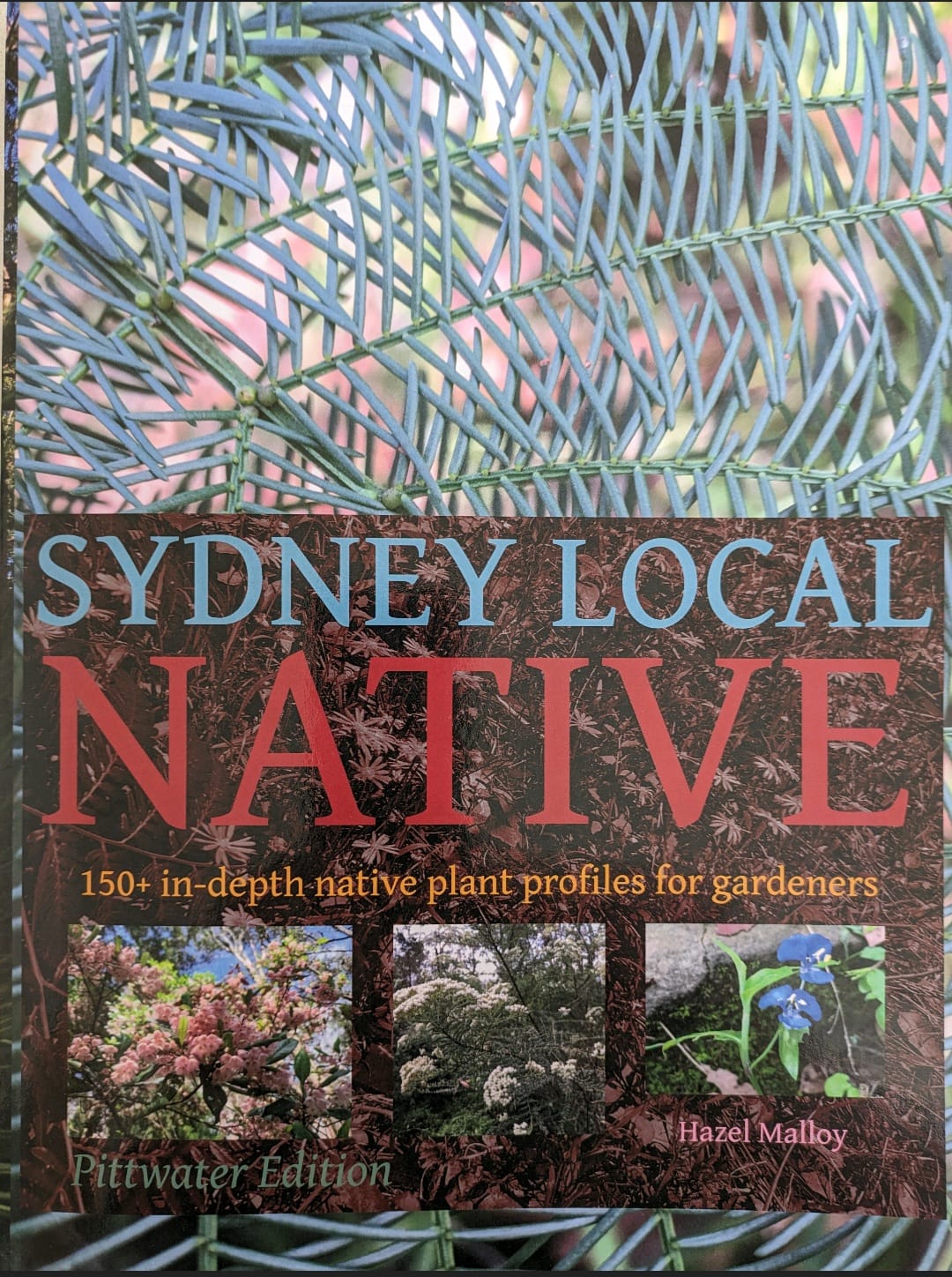
Please Look Out For Wildlife During Heatwave Events

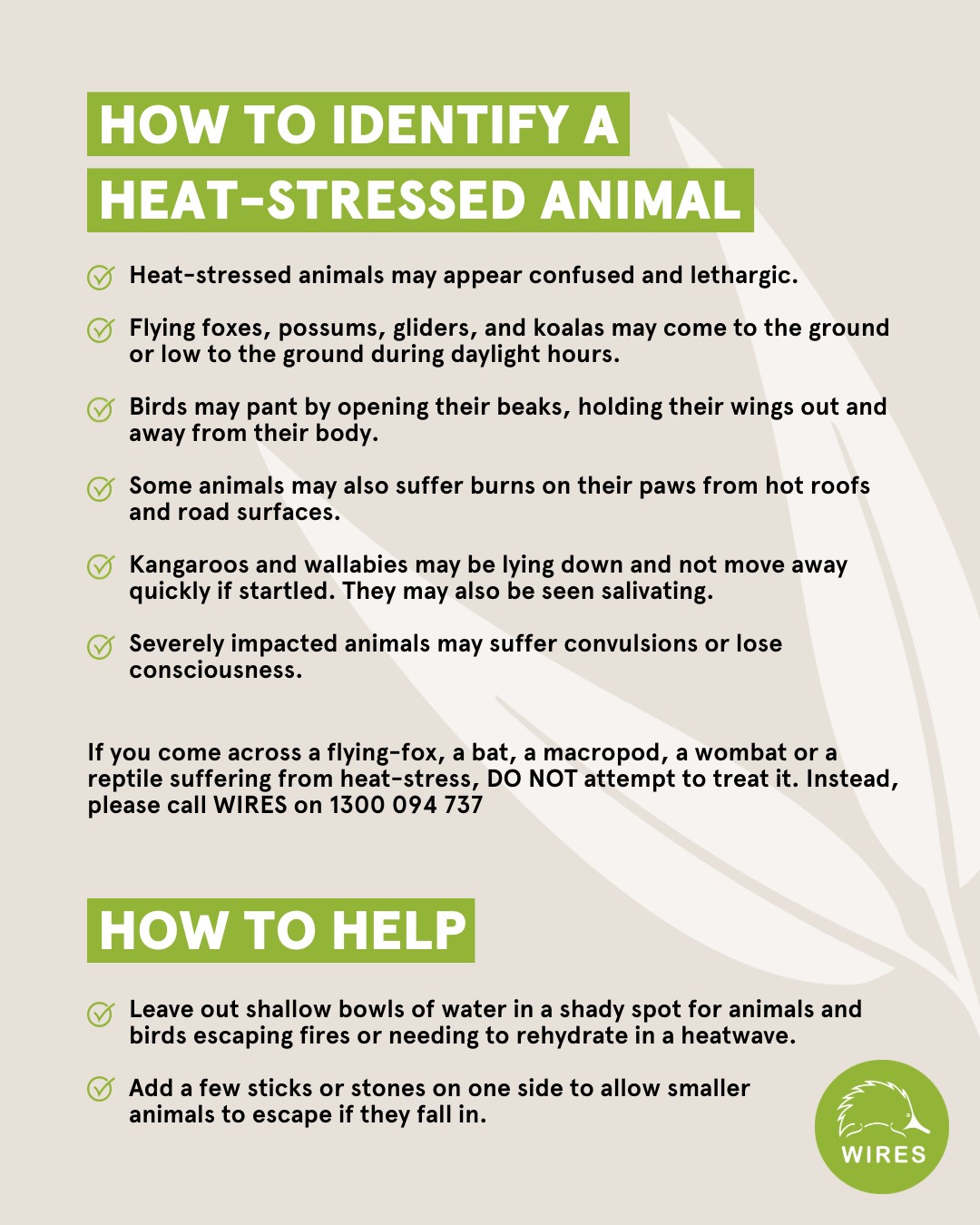
AER Releases Social Licence For Electricity Transmission Directions Paper
- What expectations should be held of transmission businesses in undertaking community engagement
- What outcomes need to be achieved from engagement
- When and how social licence issues can be factored into regulatory tests for the approval of and recovery of cost for new transmission development
- What evidence is needed to justify transmission network expansion and associated expenditure.
- clearly identify the information that is the subject of the confidentiality claim
- provide a non-confidential version of the submission in a form suitable for publication.
Bushwalk Fundraiser
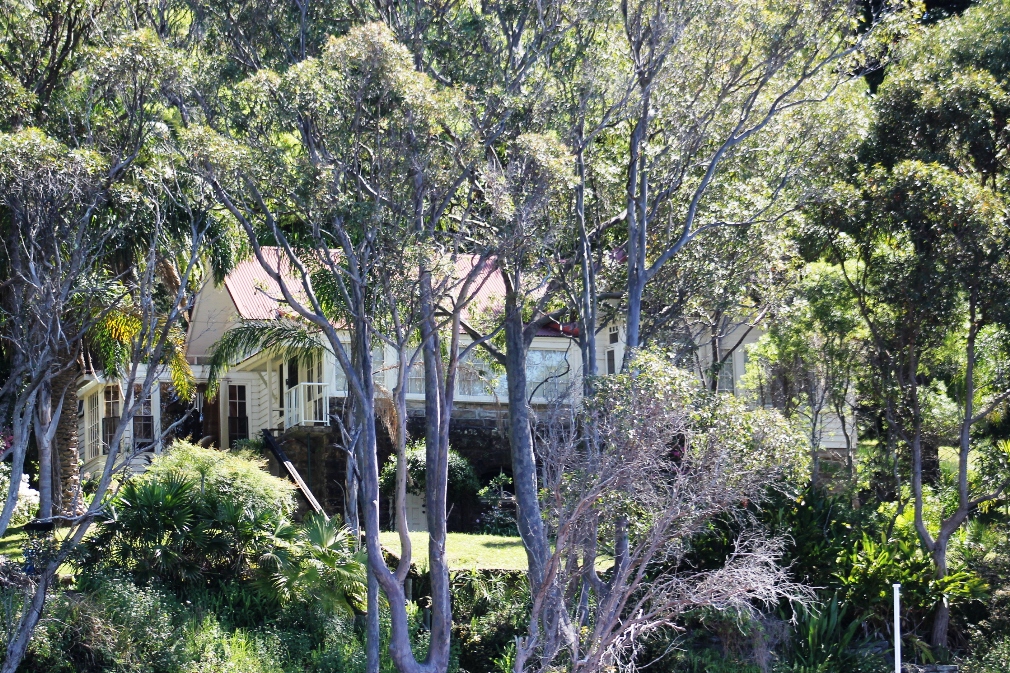
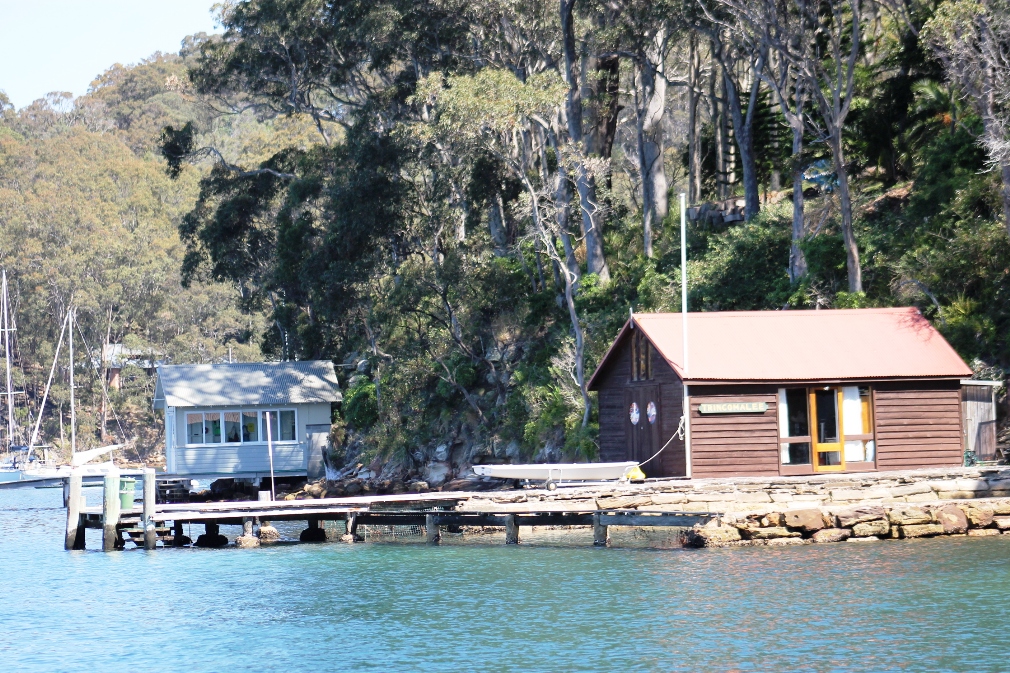
- Friday 8 December
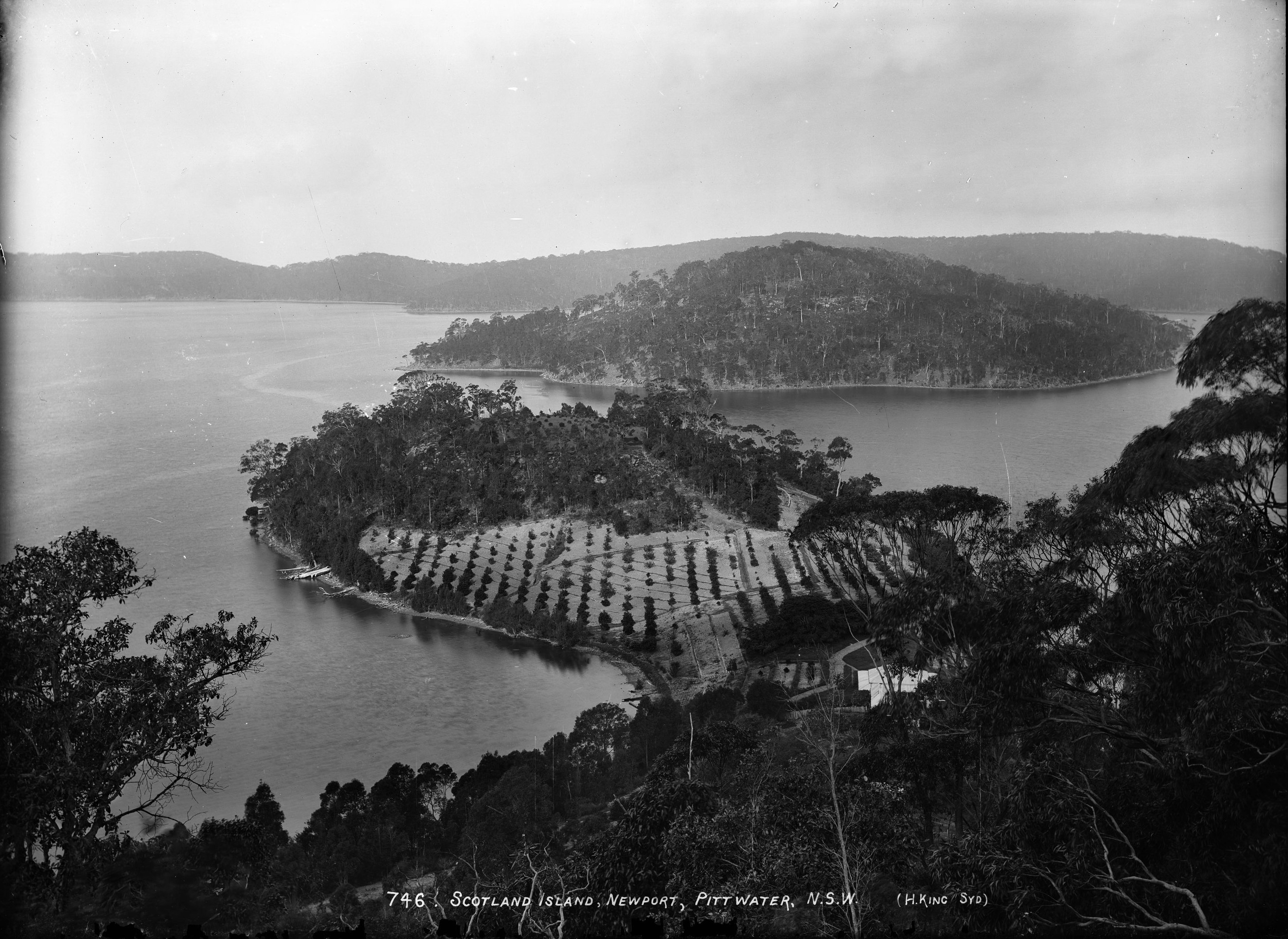
'Scotland Island, Newport, Pittwater, N.S.W.', photo by Henry King, Sydney, Australia, c. 1880-1886. and section from to show cottage on neck of peninsula at western end with no chimneys through roof. From Tyrell Collection, courtesy Powerhouse Museum
Palmgrove Park Avalon: New Bushcare Group
 Palmgrove Park Avalon is a remnant of the Spotted Gum forest that was once widespread on the lower slopes of the Pittwater peninsula. This bushland’s official name and forest type is Pittwater and Wagstaffe Endangered Ecological Community, endangered because so much has been cleared for suburban development. Canopy trees, smaller trees and shrubs, and ground layer plants make up this community. Though scattered remnant Spotted Gums remain on private land, there is little chance of seedlings surviving in gardens and lawns. More information HERE
Palmgrove Park Avalon is a remnant of the Spotted Gum forest that was once widespread on the lower slopes of the Pittwater peninsula. This bushland’s official name and forest type is Pittwater and Wagstaffe Endangered Ecological Community, endangered because so much has been cleared for suburban development. Canopy trees, smaller trees and shrubs, and ground layer plants make up this community. Though scattered remnant Spotted Gums remain on private land, there is little chance of seedlings surviving in gardens and lawns. More information HERE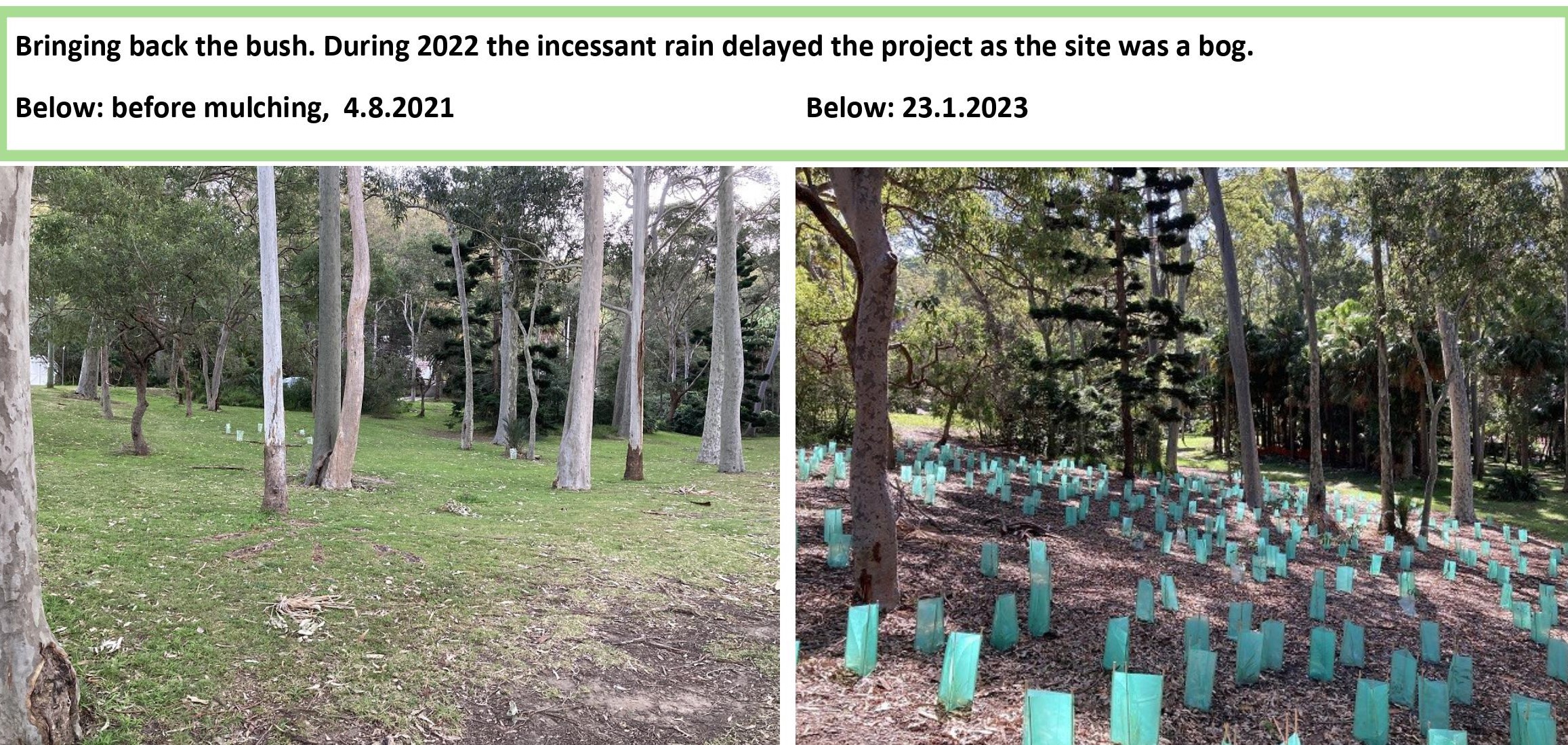
PNHA Guided Nature Walks 2023
Our walks are gentle strolls, enjoying and learning about the bush rather than aiming for destinations. Wear enclosed shoes. We welcome interested children over about 8 years old with carers. All Welcome.
So we know you’re coming please book by emailing: pnhainfo@gmail.com and include your phone number so we can contact you if weather is doubtful.
The whole PNHA 2023 Guided Nature Walks Program is available at: http://pnha.org.au/test-walks-and-talks/
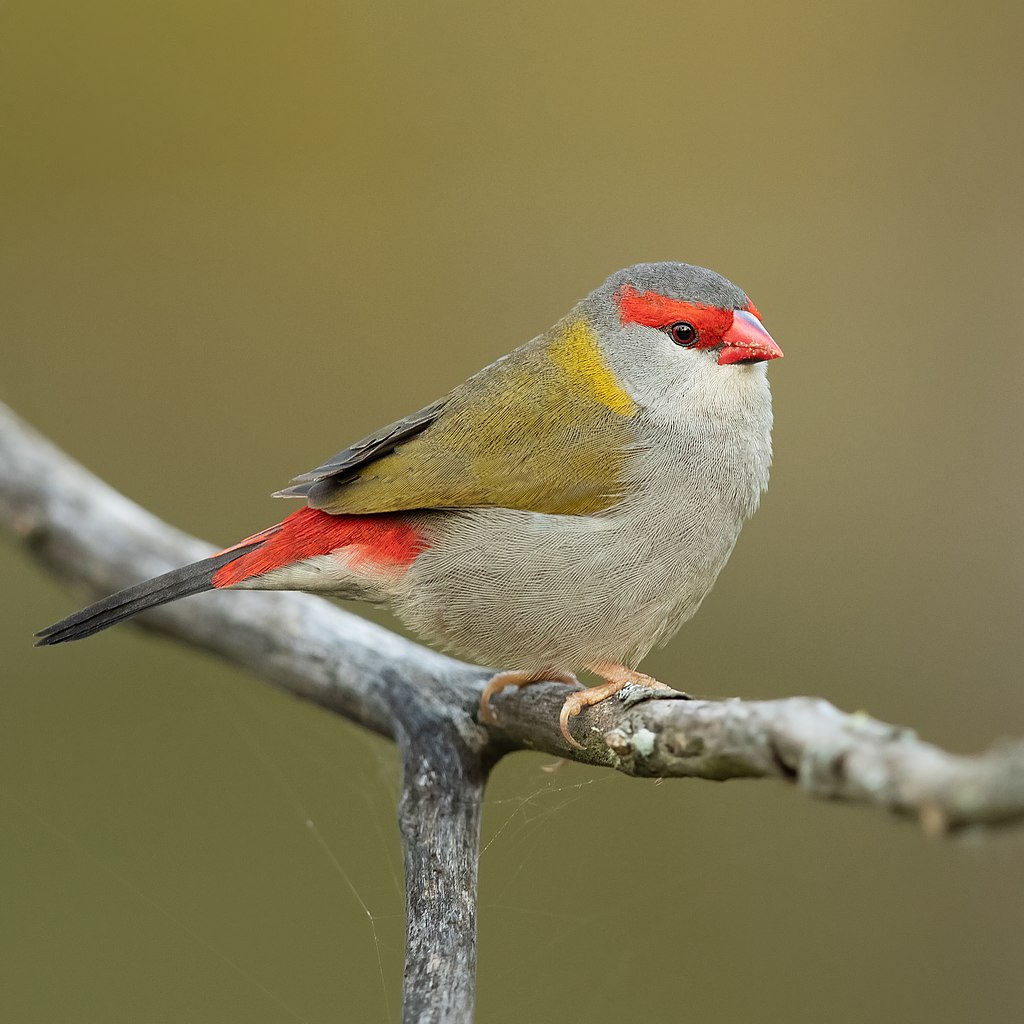
Red-browed finch (Neochmia temporalis). Photo: J J Harrison
Report Fox Sightings
%20(1).jpg?timestamp=1675893929686)
Marine Wildlife Rescue Group On The Central Coast
A new wildlife group was launched on the Central Coast on Saturday, December 10, 2022.
Marine Wildlife Rescue Central Coast (MWRCC) had its official launch at The Entrance Boat Shed at 10am.
The group comprises current and former members of ASTR, ORRCA, Sea Shepherd, Greenpeace, WIRES and Wildlife ARC, as well as vets, academics, and people from all walks of life.
Well known marine wildlife advocate and activist Cathy Gilmore is spearheading the organisation.
“We believe that it is time the Central Coast looked after its own marine wildlife, and not be under the control or directed by groups that aren’t based locally,” Gilmore said.
“We have the local knowledge and are set up to respond and help injured animals more quickly.
“This also means that donations and money fundraised will go directly into helping our local marine creatures, and not get tied up elsewhere in the state.”
The organisation plans to have rehabilitation facilities and rescue kits placed in strategic locations around the region.
MWRCC will also be in touch with Indigenous groups to learn the traditional importance of the local marine environment and its inhabitants.
“We want to work with these groups and share knowledge between us,” Gilmore said.
“This is an opportunity to help save and protect our local marine wildlife, so if you have passion and commitment, then you are more than welcome to join us.”
Marine Wildlife Rescue Central Coast has a Facebook page where you may contact members. Visit: https://www.facebook.com/profile.php?id=100076317431064
- Ph: 0478 439 965
- Email: marinewildlifecc@gmail.com
- Instagram: marinewildliferescuecc

Watch Out - Shorebirds About
.JPG.opt1460x973o0,0s1460x973.jpg?timestamp=1663629195339)
Possums In Your Roof?: Do The Right Thing

Aviaries + Possum Release Sites Needed

Bushcare In Pittwater
Where we work Which day What time
Avalon
Angophora Reserve 3rd Sunday 8:30 - 11:30am
Avalon Dunes 1st Sunday 8:30 - 11:30am
Avalon Golf Course 2nd Wednesday 3 - 5:30pm
Careel Creek 4th Saturday 8:30 - 11:30am
Toongari Reserve 3rd Saturday 9 - 12noon (8 - 11am in summer)
Bangalley Headland 2nd Sunday 9 to 12noon
Bayview
Winnererremy Bay 4th Sunday 9 to 12noon
Bilgola
North Bilgola Beach 3rd Monday 9 - 12noon
Algona Reserve 1st Saturday 9 - 12noon
Plateau Park 1st Friday 8:30 - 11:30am
Church Point
Browns Bay Reserve 1st Tuesday 9 - 12noon
McCarrs Creek Reserve Contact Bushcare Officer To be confirmed
Clareville
Old Wharf Reserve 3rd Saturday 8 - 11am
Elanora
Kundibah Reserve 4th Sunday 8:30 - 11:30am
 Mona Vale
Mona Vale Mona Vale Beach Basin 1st Saturday 8 - 11am
Mona Vale Dunes 2nd Saturday +3rd Thursday 8:30 - 11:30am
Newport
Bungan Beach 4th Sunday 9 - 12noon
Crescent Reserve 3rd Sunday 9 - 12noon
North Newport Beach 4th Saturday 8:30 - 11:30am
Porter Reserve 2nd Saturday 8 - 11am
North Narrabeen
Irrawong Reserve 2nd Saturday 2 - 5pm
Palm Beach
North Palm Beach Dunes 3rd Saturday 9 - 12noon
Scotland Island
Catherine Park 2nd Sunday 10 - 12:30pm
Elizabeth Park 1st Saturday 9 - 12noon
Pathilda Reserve 3rd Saturday 9 - 12noon
Warriewood
Warriewood Wetlands 1st Sunday 8:30 - 11:30am
Whale Beach
Norma Park 1st Friday 9 - 12noon
Western Foreshores
Coopers Point, Elvina Bay 2nd Sunday 10 - 1pm
Rocky Point, Elvina Bay 1st Monday 9 - 12noon
Friends Of Narrabeen Lagoon Catchment Activities

Gardens And Environment Groups And Organisations In Pittwater
Australia’s New Nature Positive Laws: Public Webinars On EPBC Act Reforms Run November 23 & 28 - Register Now
5 things we need to see in Australia’s new nature laws

Australia’s abysmal rates of extinctions and land clearing since European colonisation are infamous globally. Our national environmental legislation has largely failed to protect biodiversity, including many threatened plants, animals and ecological communities. But change is afoot.
The federal government is reforming our national environmental law. Following a scathing review in 2021, the legislation is being rewritten. While amendments to the Environment Protection and Biodiversity Conservation Act 1999 (EPBC Act) are yet to be tabled in parliament, the government says “rolling consultation” has begun.
About 30 environment, business and industry groups attended “targeted stakeholder workshops” last month. Public consultation begins with two webinars, on November 23 and 28. Government officials are offering to “explain how the proposed changes are designed to work and how they compare to existing laws”. But they are not sharing the draft legislation yet.
How can we assess whether these new laws can prevent further species loss and habitat destruction? Here’s an essential checklist of five things the law must include if we are to avoid calamity and hasten environmental recovery.
1. A Climate Trigger
The EPBC Act does not explicitly discuss and account for climate change and its impacts. So the federal environment minister is not legally bound to consider – or authorised to refuse – new or expanded coal mines and fossil gas fields based on their future climate impacts.
But climate change clearly threatens biodiversity and special places such as the Great Barrier Reef, as well as human communities and culture.
2. Habitat Means Homes For Wildlife
Protection of sufficient and connected habitat must be central to Australia’s national environmental law. If homes for swift parrots, koalas, greater gliders and other threatened species continue to be destroyed and fragmented, it is all but guaranteed Australia will fail in its stated quest to avoid further extinctions.
Northern Australia is home to exceptional but declining biodiversity that is increasingly threatened by development of pastoral, cotton and fracking industries.
Significant increases in land clearing and water extraction are seldom referred under the EPBC Act, let alone assessed.
Environmental law reform must stem the accelerating loss of biodiversity in this region and elsewhere. Reforms must include expanding the water trigger to apply to shale gas fracking, and ensuring significant land clearing is referred and assessed.
It is also crucial that federal approval powers are not devolved to states and territories, particularly in remote regions where so much damage occurs out of sight and out of mind.
3. Setting Clear Objectives And Measuring Outcomes
The new laws must state policy objectives such as no new extinctions and no actions that accelerate climate change.
Decision-makers must be required to address direct, indirect and cumulative threats that undermine these objectives.
The new National Environment Standards (the centrepiece of this law reform) must stipulate red lines not to be crossed, such as no clearing of any critically endangered ecological communities or critical habitat of threatened species.
We should always seek first to avoid harm, then keep harm to a minimum, and only as a last resort, offset remaining impacts – and then only with credible offset plans that fully account for uncertainties in delivering environmental compensation.
4. An Independent Umpire
We need a well-resourced, independent umpire, operating at arms length from government. This “independent cop on the beat” will need powers to prevent activities and developments deemed too harmful for biodiversity.
The government has vowed to create a national Environmental Protection Agency. The functioning and powers of such an entity risk being severely undermined if the environment minister of the day has the ability to “call-in” projects and make unilateral decisions over whether they can proceed. That would also create concern regarding industry influence and pressure on ministers to approve projects.
It’s essential ministers not only have regard for environmental standards but also follow them to the letter of the law.
5. A Voice For Country And Culture
Our national environment laws must make room for genuine Aboriginal and Torres Strait Islanders participation in how matters of cultural and environmental significance are managed.
Our new nature laws must interact with federal cultural heritage laws, which are also under reform. Entities of cultural significance, such as humpback whales and dingoes, must be cared for in a way deemed appropriate by Indigenous Australians. Such a mechanism must be co-designed with Aboriginal and Torres Straight Islanders.
Policy must continue to be developed in partnership with Aboriginal and Torres Strait islander people. We suggest a Land and Sea Country Commissioner, “a Voice for Country”, could lead this ongoing collaboration. We also need to ensure groups are adequately resourced and supported to Care for Country.
We Must Do Better
The time has come to lift our ambitions and truly protect our nation’s precious environment and biodiversity.
Australians want effective, urgent action from government. For cultural, social, economic and environmental reasons, biodiversity conservation should be treated as a public good and receive bipartisan support. It’s not an optional extra. We simply must invest in nature. We cannot afford not to.![]()
Euan Ritchie, Professor in Wildlife Ecology and Conservation, School of Life & Environmental Sciences, Deakin University; Jack Pascoe, Research fellow, The University of Melbourne; Kirsty Howey, , Charles Darwin University; Terry Hughes, Distinguished Professor, James Cook University, and Yung En Chee, Senior Research Fellow, Environmental Science, The University of Melbourne
This article is republished from The Conversation under a Creative Commons license. Read the original article.
As school students strike for climate once more, here’s how the movement and its tactics have changed
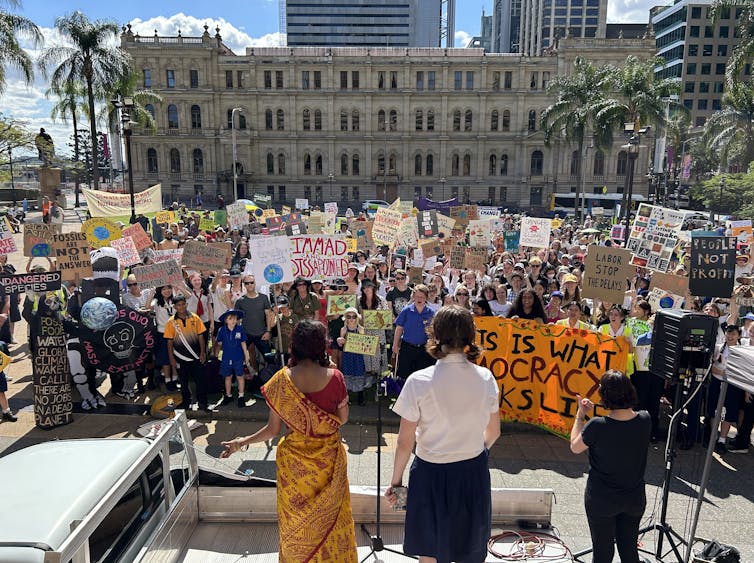
On Friday, students will once again down textbooks and laptops and go on strike for climate action. Many will give their schools a Climate Doctor’s Certificate signed by three leading climate academics.
These strikes – part of a National Climate Strike – mark five years since school students started walking out of schools to demand greater action on climate change. In 2018, the first students to strike defied calls by then prime minister Scott Morrison for “less activism” and to stay in school.
Last year, Australia voted out the Morrison government, in what was widely seen as a climate election. Teal independents won Liberal heartland seats on climate platforms, while the Greens recorded high votes. Labor came to office promising faster action on climate.
So why are school students still striking? Has the movement changed its focus? We have been researching these questions alongside young people involved in climate action in the ongoing Striking Voices project, as well as through the coauthor’s Sapna South Asian Climate Solidarity project.
We found the movement has expanded its demands from climate action to climate justice, stressing the uneven and unfair distribution of climate impacts. The movement itself has also become more diverse.
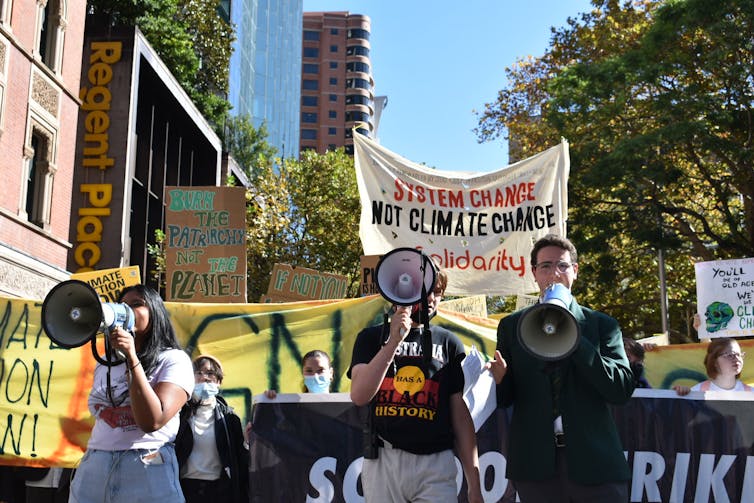
From Climate Action To Climate Justice
Across the world, young climate advocates such as those from School Strike 4 Climate are calling for “climate justice” alongside “climate action”.
Why? Because climate change doesn’t impact everyone equally. As the Australian Youth Climate Coalition puts it, it’s “often the most marginalised in our societies who are hit first and worst by climate impacts and carry the burden of polluting industries”.
Mere semantics? No. The idea of climate justice draws attention to existing social and ethical injustices which climate change amplifies. The phrase also points to the need for climate solutions that work for people in a transformative way and help create collective and just societies.
In Australia, calls for climate justice are intimately connected with justice for First Nations people and to protecting, defending and “heal[ing] Country”, as Seed Mob write, with First Nations-led solutions.
Climate justice is central to the messaging of groups such as Pacific Climate Warriors diaspora, and Sapna South Asian Climate Solidarity.
In our conversations with young people, climate justice appears highly compelling. High-school student Yehansa Dahanayake explained:
I think I’d always thought of climate change as sort of a 2D thing. I thought about it as the temperature rise, deforestation, and sea caps melting - and while that is definitely true, I think [when] I started to learn about the justice aspects of climate change, [it] made me realise that there are many other factors that tie in, such as the Global North/ Global South difference and how that relates.
High-school student Emma Heyink told us about the importance of what she called a “justice-centred lens”:
You can’t look at climate change without looking at all these other issues. It just becomes so much more interlinked and solutions become so much more obvious.
Diversifying Networks And Strategies
So who are these young people, and what have they been doing in recent years?
Swedish student Greta Thunberg is frequently credited as sparking the youth-led climate movement.
But the movement is much larger – and more diverse – than one person, and increasingly so in recent years.
As a report by Sapna points out, Australia’s youth-led climate justice networks are more likely to be racially diverse than mainstream climate movements.
Yet climate justice networks are not immune from the oppressive dynamics they protest against. When the coauthor interviewed 12 now-graduated school strikers of South Asian heritage, they reported sometimes feeling sidelined in climate spaces – which are often white-dominated – as well as in media opportunities. As one young person put it, it seemed “hard to tell a brown person’s climate justice story”.
There are signs of positive change. The upheaval of the COVID pandemic saw stronger connections emerge between social movements, and clearer links between intersecting crises and injustices, both globally and in youth-led climate networks.
As recent high-school graduate and school strike organiser Owen Magee explained:
at our strikes, we are platforming First Nations people, rural and regional people who’ve directly been affected by the climate crisis, directly being affected by fossil fuel greed and corporation greed. That in itself is focusing on the intersectional nature of climate justice.
You can see this cross-pollination in the support shown by young advocates across multiple climate justice networks in the Power Up gathering on Gomeroi Country in northwestern New South Wales to show solidarity with Traditional Owners fighting coal and gas projects on their lands.
The targets and tactics of youth-led climate justice networks have shifted and proliferated in recent years - for example, to the banks that finance fossil fuel companies.

When school strikers graduate, some move into different modes of climate-related action.
Some have taken part in strategic climate litigation in a bid to create legislation embedding a climate duty of care for young people in government decisions on issues such as fracking approvals.
Others are involved in non-violent direct actions, such as next week’s Rising Tide People’s Blockade of the world’s largest coal port in Newcastle.
Young climate advocates are battling for climate justice on a wide range of fronts. They are calling on politicians to do the same.
We would like to acknowledge and thank the Striking Voices project research associates, Natasha Abhayawickrama, Sophie Chiew, Netta Maiava and Dani Villafaña.![]()
Eve Mayes, Senior Research Fellow in Education, Deakin University and Ruchira Talukdar, Casual senior research fellow, Deakin University
This article is republished from The Conversation under a Creative Commons license. Read the original article.
How could Australia actually get to net zero? Here’s how

Every bit of warming matters if we want to avoid the worst impacts for climate change, as the latest report from the Intergovernmental Panel on Climate Change shows.
In 2020, we released modelling showing how Australia could get to net zero faster – and keep the Paris Agreement goal of holding warming to 1.5°C in play. Our new update shows this is still the case.
This week, we released our latest modelling based on cutting emissions in line with the 2015 Paris Agreement, which set an upper limit on warming of well below 2°C, with a commitment to strive for the lower harm limit of 1.5°C.
At present, the government’s 2030 goal is a 43% reduction from 2005 levels, with plans to set a further target for 2035 soon. Our new modelling of 1.5°C and well-below-2°C (1.8°C) pathways shows we must increase the pace of emissions cuts to between 48–66% for 2030 and 61%–85% for 2035.
This means Australia would reach net zero emissions by 2039, around a decade sooner than the current target of net zero by 2050. Our research shows this is possible.
So How Do You Actually Do This?
In July, the government announced the development of net zero plans for six sectors: electricity and energy, industry, built environment, agriculture and land, transport and resources. Treasurer Jim Chalmers recently said the government is preparing an ambitious policy agenda with big spending on green industries to help cut emissions, and to grow the economy as reliance on gas and coal falls.
These plans are now under development. Our modelling of these sectors shows which ones must cut emissions fastest – and how to do it for the least cost.
Electricity: In these 1.5°C and well-below-2°C least-cost scenarios, the electricity sector reaches near zero between 2034 and 2038. Renewable energy is already the least-cost way to generate power. In turn, clean electricity can help decarbonise the rest of the economy.
Industry and resources: In our scenarios, industrial emissions fall by 42% (well-below-2°C) or 54% (1.5°C) by 2035. By 2050, they fall by 54% and 67% respectively. Earlier and faster electrification and uptake of hydrogen technologies through the 2020s and 2030s drives more emissions reductions in the 1.5°C scenario.
Buildings: Rapid emissions reductions in the building sector come from electrification and improvements in energy performance in both scenarios. Housing energy efficiency improves by 41% by 2050 compared to today’s levels.
Agriculture and land: Cutting emissions in line with the 1.5°C goal will require much more removal of carbon dioxide from the atmosphere, mainly through sequestration in trees or soil. This can happen without damaging agricultural production.
How much CO₂ we need to pull from the air depends on our ambition. For the well-under-2°C scenario, we need to remove 1.4 billion tonnes (1.4 Gt). For 1.5°C, it’s 4.6 Gt. Farming emissions such as methane from livestock and nitrous oxide from fertilisers will take longer to cut, as emissions per, say, kilogram of beef falls while production increases overall. Adding algae to livestock feed and rolling out slow and controlled-release fertilisers may help lower emissions here.
Transport: Without strong action on transport, emissions will keep growing. Both scenarios show minimal change in total transport sector emissions until 2030. That’s because steady increases in vehicle use as our population and economy grows will prevent overall reductions – even as people go electric.
Under both scenarios, the transport sector changes markedly. Electric vehicles (EVs) become dominant, making up 73% of new car sales under the 1.5°C scenario or 56% in the well-below-2°C scenario. Our modelling doesn’t account for the additional potential benefits of shifting trips from cars to public transport, or from road to rail freight.
For Most Sectors, Net Zero Relies On Clean Electricity
Our modelling suggests it’s most cost effective for Australia to rapidly switch fossil fuel electricity to renewable sources and push beyond the current 82% clean energy target by 2030. We should instead aim for between 83 and 90%, and almost 100% by 2050.
Coal-powered electricity generation disappears before 2035 in our 1.5°C scenario, and by late 2030s in our well-below-2°C scenario. Gas-powered electricity falls sharply around the same time period.
By 2050, gas-fired power stations would contribute less than 1% of total generation, only firing up briefly to firm electricity supply to the grid.
Under both the 1.5°C and well-below-2°C scenarios, Australia’s electricity generation increases markedly. Renewable-powered electricity generation in 2030 would be greater than the total amount of electricity generated in 2020. By 2050, it is more than three times as great.
The Rise Of Hydrogen For Hard-To-Tackle Sectors
Support for green hydrogen has soared in recent years, both internationally and locally through government programs such as Hydrogen Headstart.
Why the change? Because of its potential uses in hard-to-green sectors. Industrial processes such as steelmaking rely on high temperatures. Traditionally coal has been used, but hydrogen is emerging as an alternative. It may have a role in transport, through fuel-cell vehicles, and to replace gas in those industries that rely on high-temperature heat.

Neither of our modelled scenarios show a role for hydrogen in buildings, passenger transport or short-haul freight. That’s because electrifying homes and using battery-electric vehicles is cheaper and more market-ready.
But our modelling shows hydrogen can play a role in industry, long-haul freight and maritime shipping – if it becomes commercially viable for these sectors.
In our scenarios, domestic hydrogen demand grows to between 383 and 465 petajoules by 2050 – around 12–16% of Australia’s energy demand.
Time Is More Precious Than Ever
Our latest analysis shows a 1.5°C least-cost pathway would see Australia reach net zero more than a decade earlier than the current goal of 2050.
If Australia and the rest of the world can cut emissions in line with the Paris Agreement goals, a safer and more prosperous future awaits.
But it’s only possible if Australia acts quickly, builds on the momentum towards net zero and seizes the enormous opportunities offered in fast decarbonisation.![]()
Anna Skarbek, CEO, Climateworks Centre; Anna Malos, Climateworks Centre - Country Lead, Australia, Monash University, and Michael Li, Research and Analysis Manager, Climateworks Centre, Monash University
This article is republished from The Conversation under a Creative Commons license. Read the original article.
Murray-Darling water buybacks won’t be enough if we can’t get water to where it’s needed
Avril Horne, The University of Melbourne and Andrew John, The University of MelbourneWhen it was clear the Murray-Darling Basin Plan could not be completed on time, Federal Water Minister Tanya Plibersek announced a new agreement (without Victoria) to deliver in full the plan’s aim of restoring the health of this vast river system.
The new agreement required changes to the Water Act to allow more water for the environment to be purchased from irrigators (water buybacks). Concerns about these changes prompted a Senate inquiry.
The report from that inquiry, released on Friday, supports buybacks but also makes key recommendations to remove “constraints” to water delivery. These are physical constraints or limits to the movement of water through the river system. Managers can only deliver so much water before it spills out of the river onto private land.
The report goes so far as to ask whether constraints should be removed before more water is recovered. This is a question we have been asking in our research. And our results suggest the answer is yes.
Currently, we cannot physically deliver all of the water recovered from other uses for the environment (known as environmental water) to where it’s needed without flooding private property along the way. And the government is not prepared to do that.
Basin Health Is Improving But Challenges Remain
Under the Basin Plan, about 20% of water used for irrigation a decade ago is now used for environmental purposes. This has improved river health, encouraging fish to spawn and plants to grow, and reduced salt levels in the Lower Lakes and Coorong.
These benefits rely on the river’s flow regime, not just the annual volume. Higher flows inundate wetlands, move sediment down the river, and provide natural triggers for various species to breed or migrate.
But raising water levels in the river channel isn’t enough to get environmental water everywhere it’s needed. Sometimes larger flows are required. Unfortunately, sending more water down the river runs the risk of inundating private property or damaging infrastructure such as low-lying pumps on floodplains.
Restoring the river’s health requires not only recovering water but also completing projects that allow more of this water to flow despite physical constraints such as a narrow stretch of river. These projects might involve modifying or improving infrastructure such as low-lying roads and bridges, as well as working with communities to limit damage and compensate for flooding of private property.
The Senate inquiry report highlights the challenges for these projects. It also supports improving the approach to delivering these projects across the southern basin.
Challenges, Priorities And Solutions May Differ
Our research on the Goulburn River in Victoria’s part of the Murray-Darling Basin shows recovery of additional water for the environment does not guarantee environmental outcomes.
This is because the amount of water that can be sent down the river is constrained. So having more environmental water at your disposal does not help, because it is physically impossible to get all the water to where it is needed, when it is needed, without risking inundation of private property.
Current river system operations, including rules and physical constraints, prevent the full volume of environmental water held in Goulburn River being delivered at the right time and in the right way to achieve the best environmental outcomes.
Narrow sections of the river and adjacent private development limit releases from Lake Eildon. River managers are not allowed to deliberately inundate the floodplain if it risks private property.
So the volume of environmental water available in the Goulburn River is not the issue – delivering this water is the challenge. In this regard, Victoria’s refusal to sign up to the new basin deal is understandable, because more water buybacks would potentially cause more pain to the local community than gain to the local environment.
However, neither Victoria nor New South Wales has addressed these capacity constraint issues, significantly limiting the ability to get better environmental outcomes with less water. So the challenge is much more complex than simply redistributing entitlements and buying back environmental water.
The Elephant In The Room: Climate Change
Temperature, rainfall and streamflow have already changed in parts of the Murray-Darling Basin. Over the coming decade these changes will become more pronounced, widespread and entrenched, causing more frequent floods and droughts.
While the precise consequences for water availability remain to be seen, the impact on the basin will be immense.
But climate change simply adds to the need to have difficult conversations around the future of communities along the Murray-Darling. Focusing on whether buyback targets have been achieved does not resolve this. In many regions, there will not be enough water, with or without buybacks, to achieve current management objectives.
Buybacks should be placed in the context of this imminent threat. In rivers like the Goulburn, addressing capacity constraints provides the single best climate adaptation option to improve environmental outcomes in the short and medium term.
Removing these constraints would allow more water onto the lower Goulburn River floodplain, with due care for land and infrastructure that could be affected. For example, projects may offer landholders options to avoid or compensate for any water damage and associated costs.
This is because removing constraints gives river managers more flexibility, which can increase the resilience of the environment to a wider range of future climates. More water from buybacks provides very limited additional benefit because it doesn’t change how environmental water can be delivered.
The senate report emphasises the need to embed consideration of climate change in the Water Act and Basin Plan. The decisions we are making now on water recovery and constraints relaxation will have big impacts on communities.
Our work shows considering climate change is essential to ensuring lasting benefits and resilient outcomes for the rivers and communities that rely on them.
The first basin plan took a big step towards sustainable management of the vast Murray-Darling river system. But it was always meant to be the first step in an adaptive policy process. Priorities and solutions will look different across the basin. We need a holistic approach where buybacks may very well be part of the solution, but are not the whole solution. We also need to ensure we can deliver this water where and when the environment needs it. ![]()
Avril Horne, Research fellow, Department of Infrastructure Engineering, The University of Melbourne and Andrew John, Research fellow, The University of Melbourne
This article is republished from The Conversation under a Creative Commons license. Read the original article.
COP28: a year on from climate change funding breakthrough, poor countries eye disappointment at Dubai summit
Lisa Vanhala, UCLAt the COP27 summit in Sharm El-Sheikh, Egypt, an agreement to establish a loss and damage fund was hailed as a major breakthrough on one of the trickiest topics in the UN climate change negotiations. In an otherwise frustrating conference, this decision in November 2022 acknowledged the help that poorer and low-emitting countries in particular need to deal with the consequences of climate change – and, tentatively, who ought to pay.
This following year has seen more extreme weather records broken. Torrential rains created flooding which swept away an entire city in Libya, while wildfires razed swathes of Canada, Greece and the Hawaiian island of Maui.
As these events become routine worldwide, the case grows for an effective fund that can be set up quickly and help those most vulnerable to climate change. But after a year of talks, the fund has, so far, failed to materialise in the way that developing countries had hoped.
I’m writing a book on UN governance of loss and damage, and have been following the negotiations since 2013. Here’s what happened after the negotiators went home and what to watch out for when they return, this time at COP28 in Dubai.
Big Questions
Many questions were raised and left unresolved in Sharm El-Sheikh. Among them: who will pay into this new fund? Where will it sit? Who will have power over it? And who will have access to the funding (and who won’t)?
A transitional committee with 14 developing country members and 10 developed country members was appointed by the UN to debate these questions after COP27. The committee has met regularly over the last year, but at its fourth meeting at the end of October – scheduled as the last session – important questions surrounding the fund, such as who should host and administer it, remained. Discussions broke down without an agreement.
In early November, less than a month before COP28, a hastily arranged fifth meeting presented committee members with a text cobbled together by the two co-chairs from South Africa and Finland as a take-it-or-leave-it agreement. Developing countries agreed to having the fund hosted by the World Bank for an interim period, despite reservations.
Developed countries also objected to the final text. The US wanted to add the adjective “voluntary” to any mention of contributions to the fund. Others argued that the pool of contributors to the fund should be widened to include some developing countries, such as Saudi Arabia, and also private sources of finance. These objections were noted but the text was adopted without them.
These recommendations must now be signed off at COP28, which begins on November 30. With almost 200 countries having to reach agreement on these arrangements and dissatisfaction widespread, the process isn’t likely to be straightforward.
The World’s Bank?
Developing countries have been sceptical of the World Bank as a potential host of the fund for several reasons.
Many delegates worry about the bank’s reputation, including the dominance of developed country donors, its emphasis on providing loans rather than grants, and the lack of climate-savviness in the bank’s operations. These concerns are likely to reemerge in Dubai.
The US is the biggest shareholder in the World Bank and traditionally, the bank’s president has been a US citizen nominated by Washington. Small-island developing states (among the most vulnerable to climate change due to sea-level rise) have argued for moving the fund away from a donor-recipient model, with all their usual power imbalances, towards a partnership founded on a shared commitment to protecting the planet.
This will require partial or total reform of the World Bank – and some argue this is already happening under its new president. But hosting the fund within the bank would still give donor countries disproportionate influence, despite recommendations by the transitional committee that the fund’s governing board be composed of a majority of developing country members.

High overhead costs are another concern. One board member of another fund hosted by the World Bank has suggested that the administrative fees the bank charges are rising and absorbing a larger share of aid. This could mean that, for every US$100 billion offered to countries and communities reeling from disaster, the World Bank will keep $US1.5 billion. This will be hard for an institution still funding the climate-wrecking oil and gas industry to justify.
The types of finance made available by the fund will need to be at odds with the bank’s traditional mode of loan financing, by offering grants and other forms of highly concessional lending. Developing countries have consistently argued that loss and damage funding should not increase a developing country’s debt burden.
The agreed text says the loss and damage fund will “invite financial contributions”, with developed countries expected to “take the lead”. Developing countries want developed nations (as the largest historical emitters) to provide funding, but rich nations have pushed back against any notion that they have an obligation to pay.
Rather, while making all the right noises on climate finance, they may gain short-term kudos by simply rebranding existing forms of climate finance or development aid, rather than offering any new money.
The Compensation Taboo
One thing you’re unlikely to hear at COP28 is “compensation”. While newspaper editors love headlines about reparations, liability and compensation when reporting on loss and damage, and a rise in climate litigation is making governments and polluting companies nervous, this language is still totally absent in discussion of the issue in the negotiations.
In fact, research has shown that mentions of compensation in state submissions to the UN declined dramatically after the establishment of the mechanism on loss and damage in 2013. The fine print of the 2015 Paris Agreement noted that loss and damage was “not a basis for liability or compensation”.
I have noticed a taboo emerging around the term within the COP process. Instead, countries are increasingly opting for language such as “solidarity” as the basis for finance. These word choices show where power lies.
All of this is to sound a note of caution going into COP28. Major agreements on loss and damage have historically not lived up to their promises due to bureaucratic forum-shifting (moving topics to venues outside of the UN Framework Convention on Climate Change), delays, and under-resourcing. The adaptation fund was established in 2001 but only approved its first funding in 2010.
How is the urgent need for support among vulnerable communities and countries going to be met when the pace of progress within the climate change negotiations is glacial at best, and tends to be particularly slow and unambitious on loss and damage finance?
At COP28, making the loss and damage fund real is a litmus test for the legitimacy of the entire climate change negotiation regime.

Don’t have time to read about climate change as much as you’d like?
Get a weekly roundup in your inbox instead. Every Wednesday, The Conversation’s environment editor writes Imagine, a short email that goes a little deeper into just one climate issue. Join the 20,000+ readers who’ve subscribed so far.![]()
Lisa Vanhala, Professor of Political Science, UCL
This article is republished from The Conversation under a Creative Commons license. Read the original article.
We can still prevent the collapse of the West Antarctic ice sheet – if we act fast to keep future warming in check
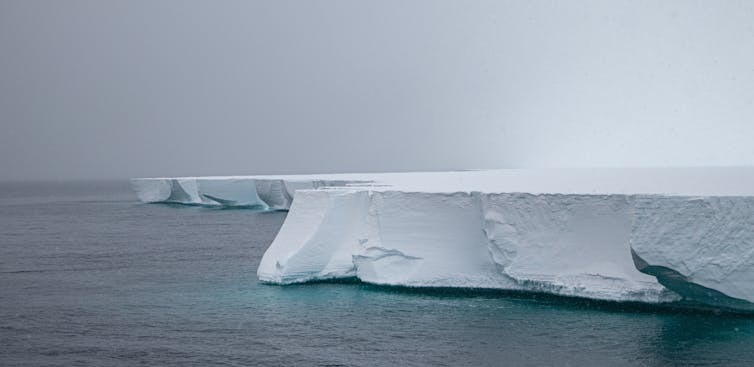
Projecting when and how fast the West Antarctic Ice Sheet will lose mass due to current and future global ocean warming – and the likely impact on sea level rise and coastal communities – is a priority for climate science.
We know deep water flowing towards and around Antarctica is warming, and the fringes of the West Antarctic Ice Sheet (WAIS) are increasingly vulnerable to ocean-driven melting.
Submerged continental shelves along large portions of West Antarctica, including offshore Pine Island and Thwaites glaciers in the Amundsen Sea, are already bathed by upwelling arms of this relatively warm water.
Ice shelves in this region – massive floating slabs of ice that flow out from the coast – are already losing mass. Because ice shelves float, their melting doesn’t affect sea levels. But they hold back land-based ice, which does.
Recent research suggests increasing flow of warm deep water in this area will speed up the melting of the WAIS over the coming decades, regardless of future anthropogenic greenhouse gas emissions.
This would mean global net-zero emissions targets cannot limit the amount of future sea-level rise caused by the melting of the WAIS. This poses significant challenges for coastal communities in low-lying regions as they plan for and adapt to unavoidable change.
Our project, an ambitious international collaboration known as the “Sensitivity of the WAIS to 2°C” (SWAIS2C), aims to retrieve sediments from the seafloor beneath the Ross Ice Shelf to explore how West Antarctica responded to warmer periods in Earth’s past – and what might happen in a warming future.
We May Have (Some) Time
While it may appear too late to slow or stop the retreat of the WAIS in areas where the ocean cavities beneath ice shelves are already “warm”, the inevitable demise of the entire WAIS is not so certain. There are also regions where ice shelf cavities are currently “cold”.
The Ross and Ronne-Filchner are Earth’s largest ice shelves and currently buttress and stabilise large regions of ice in the West Antarctic interior. The ocean cavity that lies beneath the Ross Ice Shelf is cold, generally characterised by temperatures at or below minus 1.8°C.
A recent ice sheet modelling study shows these large ice shelves and the WAIS will remain largely intact under low-emissions pathways which aim to keep warming close to or below 2°C above pre-industrial values.
Modelling experiments indicate an emissions pathway in line with the goals of the Paris agreement can still limit the total contribution to sea level rise coming from the Antarctic ice sheet to 0.12–0.44 metres by 2100 (0.45–1.57 metres by 2300).
Importantly, these experiments also show that spatial patterns of ice thinning and retreat in the Amundsen Sea region are similar for 2100 compared to 2015 (see figure below) under both low and high emissions.
The clearest contrasts between the scenarios occur in the Ross Sea sector, where the grounding line of the ice shelf advances in low-emissions (“sustainable”) scenarios but the shelf ice thins or even collapses in high-emissions (“fossil fuel intensive”) scenarios.
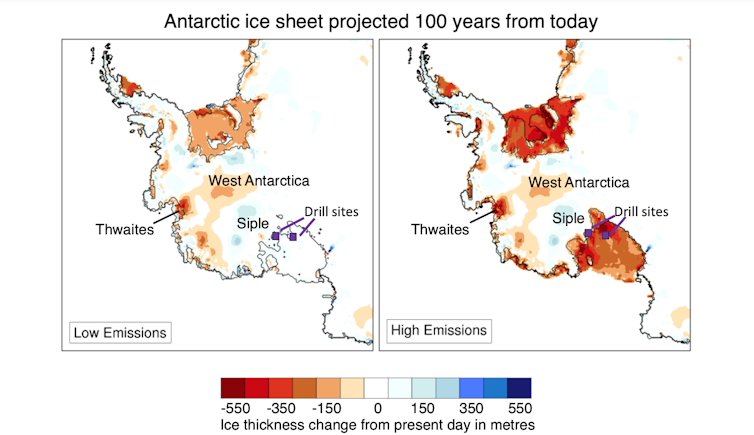
Observation Gaps From Key Antarctic Regions
Global surface temperature is likely to exceed 1.5°C above pre-industrial values by the early 2030s. It may warm by as much as 4.4°C by the end of this century.
Our current global policy and action trajectory will yield 2.7°C of warming by the end of century, but more ambitious pledges and targets could keep global warming to 2.0°C. We need to know how sensitive the large, cold-cavity ice shelves are to these increases in global temperature.
Ice sheet modelling suggests rapid cuts in emissions can still limit WAIS melt, but we lack direct observations to support these findings. Collecting new data from locations around the WAIS margin will offer insights into present-day changes and a possible future response to warming.
Significant effort to address data gaps has been made in the Amundsen Sea around the Thwaites Glacier region, but observations beneath the Ross Ice Shelf, especially near the point where the WAIS begins to float, are limited. The SWAIS2C project aims to address this knowledge gap.
Tapping The Geological Record
SWAIS2C is an international collaboration involving scientists, drillers, engineers and science communicators. Our team will travel to the Siple coast, close to the centre of West Antarctica, to melt holes through the ice shelf at two sites.
Oceanographic measurements and geophysical observations at each site will improve our understanding of current ocean mechanics and ice sheet dynamics. But to understand the potential future contribution to sea-level rise from melting of the WAIS, we will need to turn to the geological record.
Seafloor sediments from beneath the Ross Ice Shelf represent an archive of climate information from warmer periods in Earth’s history and offer a means to “see” how the ice shelf and ice sheet responded to past warmth.
We will drill up to 200 metres below the seafloor to recover a geological record of changing rock types that reflect environmental conditions at the time they formed.

These data will allow us to identify previous episodes when the ice shelf thinned and disintegrated, driving retreat of the WAIS interior. Environmental data from these intervals will identify the regional climatic conditions that drove this retreat and help determine the sensitivity of the system to increases in global mean temperature.
SWAIS2C builds on other successful international scientific drilling programmes in the Ross Sea region, including ANDRILL and IODP and is supported by ICDP.![]()
Richard Levy, Principal Scientist/Environment and Climate Research Leader, GNS Science; Dan Lowry, Ice Sheet & Climate Modeller, GNS Science; Denise Kulhanek, Professor of Marine Micropaleontology, University of Kiel; Gavin Dunbar, Senior Lecturer in Palaeoclimate, Te Herenga Waka — Victoria University of Wellington; Huw Joseph Horgan, Research Scientist, Swiss Federal Institute of Technology Zurich; Molly Patterson, Assistant Professor in Geology, Binghamton University, State University of New York; Nick Golledge, Professor of Glaciology, Te Herenga Waka — Victoria University of Wellington, and Tina van de Flierdt, Professor of Isotope Geochemistry, Imperial College London
This article is republished from The Conversation under a Creative Commons license. Read the original article.
Australia’s offer of climate migration to Tuvalu residents is groundbreaking – and could be a lifeline across the Pacific
Jane McAdam, UNSW SydneyFor many years, I have been calling for the Australian government – along with other governments – to play its part in assisting Pacific communities affected by the adverse impacts of climate change and disasters.
Our region is already experiencing some of the most drastic effects of climate change. Pacific communities are showing enormous innovation and resilience in the face of these challenges, but as a matter of international solidarity and climate justice, additional support and cooperation is needed.
One way of providing assistance is by creating migration pathways for people who wish to move. Australia’s recent Pacific Engagement Visa is one such example – enabling up to 3,000 workers and their families from the Pacific and Timor-Leste to migrate permanently to Australia each year.
In addition, the announcement this week of an Australia–Tuvalu Falepili Union Treaty is groundbreaking. Under this deal, Australia will provide migration pathways for people from Tuvalu facing the existential threat of climate change. It is the world’s first bilateral agreement on climate mobility.
How The New Visa Program Will Work
Based on the principles of “neighbourliness, care and mutual respect”, the treaty is a result of a request by Tuvalu for Australia to support and assist its efforts on climate change, security and human mobility.
According to Australian Prime Minister Anthony Albanese, “developed nations have a responsibility to provide assistance” to countries like Tuvalu that are deeply impacted by climate change.
Under the treaty, Australia will implement a special visa arrangement to allow Tuvaluans to work, study and live in Australia. This is not a refugee visa, but rather will allow up to 280 Tuvaluans (from a population of around 11,200) to migrate to Australia each year – presumably on a permanent basis.
They will be able to access Australian education, health care, and income and family support on arrival. This is a welcome development that will provide people with both legal and psychological security. Despite longstanding “promises” that Australia would not sit by as disasters continue to affect the Pacific, this program provides the long-awaited security that many have wanted.
Historically, most Pacific visa programs in Australia (and the region) have been tied to labour mobility. And none has specifically referenced climate change as a driving rationale. In contrast, the measures announced this week are deliberately framed in the context of climate change and – furthermore – are not tied purely to work.
Indeed, it remains to be seen just how far the special visas may extend. Beyond “work” and “study”, the treaty says Tuvaluans can also come to Australia to “live”. This implies the visa may potentially provide a humanitarian pathway for people who want – or need – to move. This would include older people, who would not qualify for existing Pacific labour migration programs.
Despite the threats posed by climate change, however, most Pacific peoples do not want to leave their homes. Being dislocated from home is one of the greatest forms of cultural, social and economic loss people can suffer. It can often lead to inter-generational trauma.
The treaty itself recognises Tuvaluans’ “deep, ancestral connections to land and sea”, and pledges Australia will work with Tuvalu to help people “stay in their homes with safety and dignity”. At the same time, people want to know they have safe options to move if they need to – with dignity and choice.
How Novel Is The New Treaty?
While there are other programs in the Pacific that facilitate mobility, this is the first to do so specifically in the context of climate change. It also operates differently from arrangements implemented by New Zealand and the United States.
As part of the “realm” of New Zealand, for instance, people from the countries of Niue, Tokelau and Cook Islands are considered New Zealand citizens, so they have the right to move there if they wish.
New Zealand has also long had its “Pacific Access” visa category and the Samoa quota resident visa, which together enable around 2,400 people to move from the Pacific to New Zealand on a permanent basis each year.
The United States, meanwhile, has compacts of free association with the Marshall Islands, Federated States of Micronesia and Palau, which enable eligible citizens to enter the US visa-free and live and work there indefinitely. However, those migrants do not have access to many government benefits and can easily fall through the cracks.
Last year, Argentina announced a special humanitarian visa program for people displaced from 23 countries in Latin America and the Caribbean due to disasters. Unlike the Australia–Tuvalu treaty, which allows for migration in anticipation of climate-related disasters, access to the Argentinian program is only available after displacement has occurred. As yet, no one has used the scheme.
For at least two decades, Pacific governments have made perennial requests for special visa pathways or relocation to Australia for their citizens.
In 2019, former Prime Minister Kevin Rudd proposed that Australia accept people from Tuvalu and other Pacific countries on account of projected climate impacts – but in exchange for “their territorial seas, their vast exclusive economic zones, including the preservation of their precious fisheries reserves”.
He was shot down by the then-prime minister of Tuvalu, Enele Sopoaga, who labelled it “imperial thinking”.
What Could Come Next?
Last week, Pacific Leaders endorsed a world-first Pacific framework on climate mobility, which has gone relatively unnoticed, despite the Australia–Tuvalu announcement.
I had the privilege of working and consulting with Pacific governments and communities to draft the early versions of the framework. It will hopefully inspire the creation of further visa arrangements and other concrete mobility mechanisms to ensure Pacific peoples have dignified pathways to move when they wish, as well as support and assistance to remain in place when possible.
Earlier this year, Samoan Prime Minister Fiame Naomi Mata’afa suggested the Pacific could create a European Union-like entity, “based on cooperation and integration”, that would enable free movement across the region.
If enacted, it would follow a similar agreement signed by leaders in eastern Africa that specifically allows people in that region to cross borders in anticipation of or in response to disasters.
Though this is still a long way off in the Pacific, the agreement between Australia and Tuvalu could help pave the way for similar mobility pathways across the region and – ultimately – a broader regional scheme. If, and when, that time comes, the choice, agency and dignity of affected communities must be front and centre.![]()
Jane McAdam, Scientia Professor and Director of the Kaldor Centre for International Refugee Law, UNSW Sydney
This article is republished from The Conversation under a Creative Commons license. Read the original article.
Here’s how a TV series inspired the KeepCup revolution. What’s next in the war on waste?
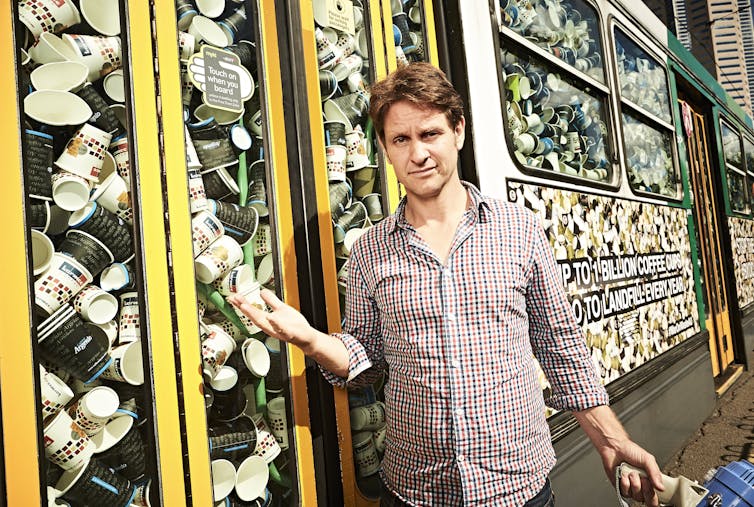
Changing habits can be hard. So when a single episode of an Australian television show prompted a national shift in behaviour, as behavioural researchers, we took notice.
The first (2017) and second (2018) seasons of the ABC TV program War on Waste reached audiences of 3.8 million and 3.3 million viewers, respectively. That’s one in seven Australians. It inspired action, slashing the waste footprint of hundreds of Australian organisations. So it remains a valuable example of TV driving social change, and one we can still learn from today.
Through focus groups conducted in 2018, we explored how the first season encouraged Melbourne millennials’ to adopt reusable coffee cups. Then, when the COVID pandemic prompted greater use of disposable consumer products, we revisited the data and delved deeper into behavioural science.
Our analysis revealed people were drawn to the engaging storytelling, confronting visuals and prankster ex-Chaser host Craig Reucassel. He demonstrated, step-by-step, how to minimise waste in a relatable and guilt-free way. Our research, recently published in the journal Communication Research and Practice, can guide others to achieve similar success in behavioural change.
Educational Entertainment
In War on Waste, Reucassel confronts Australia’s many waste-management problems and potential solutions.
The series is an example of what behavioural psychologists call “entertainment-education interventions”.
In one episode, Reucassel staged a stunt on a Melbourne tram during peak hour, proclaiming it was filled with 50,000 disposable coffee cups – the amount sent to landfill every 30 minutes in Australia.
Almost overnight, KeepCup sales quadrupled, crashing the company’s website. Membership of a Responsible Cafes initiative promoting reusable coffee cups spiked from 400 cafes to 1,800.
An ABC study found more people of all ages bought coffee in reusable cups after War on Waste aired (up from 37% to 42%).
The survey also revealed millennials (aged 18-34 in 2017) were generally less likely to adopt waste-reduction behaviours compared with other age groups. But they excelled in using reusable coffee cups.
Why was the show so successful in encouraging people, and specifically millennials, to use reusable coffee cups?
If we can explain why this behaviour was so readily adopted, perhaps we can promote other sustainable behaviours at scale, in other entertainment-education interventions.
Our research uncovered five tactics used by the show to get these results.
1. Use A Relatable Host
Humans relate to people on TV. Research shows celebrities and people we consider engaging and credible are more likely to influence us.
Reucassel is a popular host with celebrity status. One focus group participant said:
A lot of films […] feel very preachy. It’s often either an expert, or just a narrator, who clearly didn’t know anything about the topic beforehand, who has now researched things, who is telling you things. Whereas in the case of the War on Waste, it felt more like he [Reucassel] was learning it with you, at the same time.
In the first season, we watched as Reucassel sorted the contents of a recycling bin, sharing the learning experience with the viewer. Research shows we are more likely to adopt a new behaviour if we’re shown how to do it rather than told what to do.
2. Mix Statistics With Confronting Visuals
High-impact visuals have lasting effect. Reucassel’s many stunts served not only as an engaging way to present statistics, but also a way to connect with viewers by stirring up emotions. This approach builds audience knowledge and willpower, making a change in behaviour more likely.
As one focus group participant put it:
My favourite thing about the show was all the stunts that Craig pulled – it’s classic Chaser stuff. Like the big rolling ball of plastic bags and the tram full of coffee cups. I thought that aspect of it was the most hard-hitting and interesting.
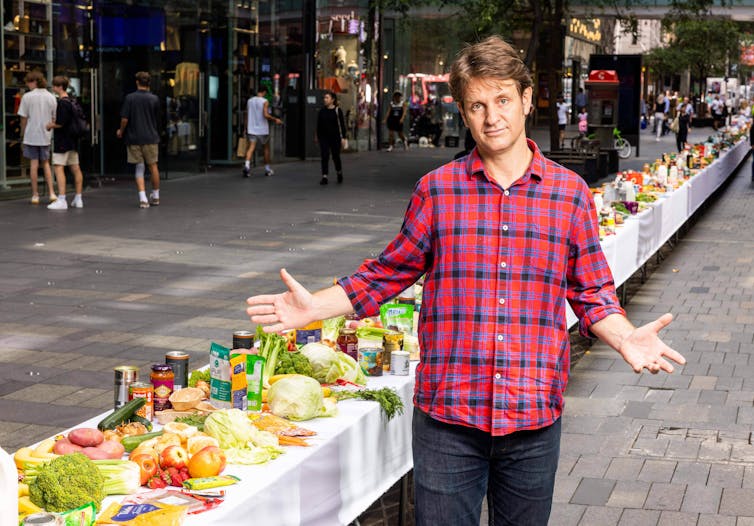
3. Promote Widespread Community Action
A common problem with behaviour change initiatives is a person will only change their behaviour if they feel like others are going to change their behaviour too. This often leads to “the tragedy of the commons”, where no one ends up taking action.
The opposite was true for War on Waste. Focus group participants felt the show created a groundswell for environmental change, so they were more inspired to take action because they felt others were taking action too. In the words of one:
I really enjoyed how it was a mix of personal actions [and] more systemic changes […] like getting Coles and Woolworths to change cosmetic standards [for fresh produce] but also the episode with the fast fashion, about getting the teenage girls to consider their own personal choices.
4. Choose Behaviours With An Easy Learning Curve
Reducing waste may never be “easy”, but by choosing behaviours perceived to be low-cost with little inconvenience, we have a better chance of success.
Swapping the disposable coffee cup for a reusable cup was considered relatively easy with a “quick learning curve” – compared to composting or having a worm farm – and so became more readily adopted than other behaviours demonstrated in War on Waste.
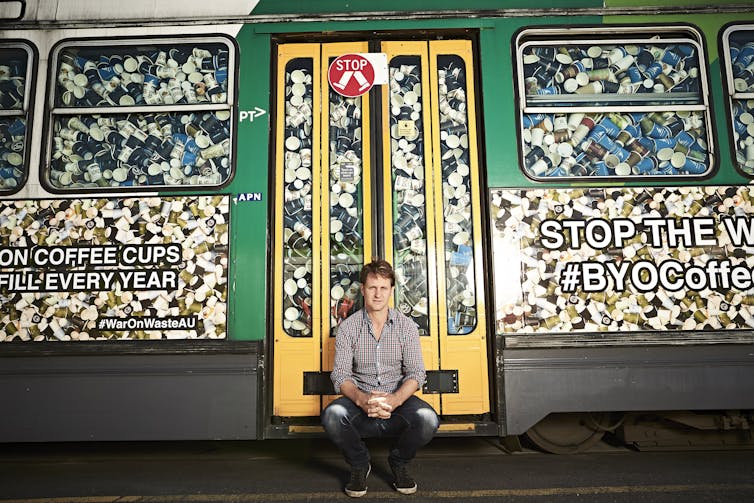
5. Show How Behaviour Can Reveal Social Identity
People from all generations prefer to act in accordance with what society deems acceptable. So pro-environmental behaviours are more likely to be adopted when social pressure is placed on them.
War on Waste placed social pressure on us all to reduce our waste. Adopting a reusable coffee cup became a visible symbol for millennials to demonstrate to others that they were doing their bit, while expressing their environmental values.
As one participant said:
I think it’s just a trendy, convenient way to maybe look and feel like you are doing something that’s […] the right step.
What Can We Learn From This, And What’s Next?
Many of the strategies we identified as successful in season one reappeared this year in season three, such as confronting visual stunts, shared learning experiences and targeting easy behaviours.
Based on the findings from our research, we expect to see further positive change generated from this season.
Our research also presents an opportunity to practitioners wanting to create behaviour change at scale by providing them with behavioural science strategies to embed in entertainment-education interventions. ![]()
Danie Nilsson, Behavioural Scientist, CSIRO and Rachael Vorwerk, Science Communicator, ARC Centre of Excellence in Optical Microcombs for Breakthrough Science (COMBS), RMIT University
This article is republished from The Conversation under a Creative Commons license. Read the original article.
We need a global treaty to solve plastic pollution – acid rain and ozone depletion show us why
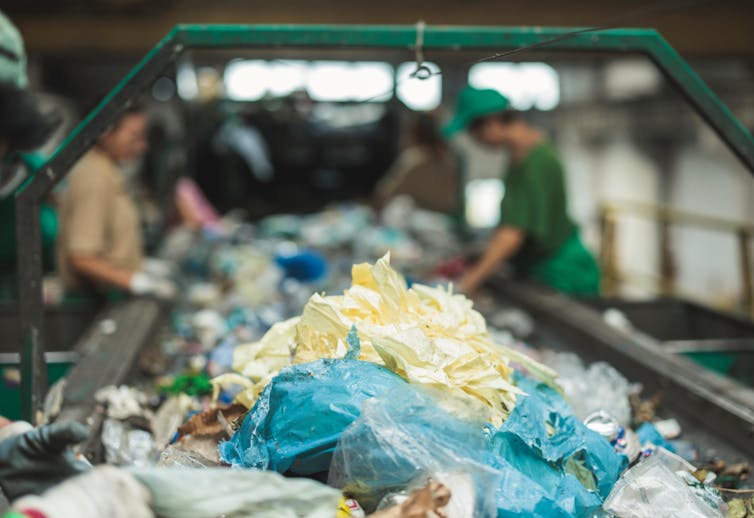
After years of discussion, international negotiations on a global plastics treaty resume this week in Nairobi, Kenya, at the UN Environment Programme headquarters.
The third session of the UN Intergovernmental Negotiating Committee on Plastic Pollution will take place from today until Sunday November 19.
The committee’s goal is to develop a legally binding agreement, finalised in 2024, to address the full life cycle of plastics – including their production, design and disposal.
Involving 175 nations, the treaty aims to transform plastic waste management, paving the way for new technologies and industries.
The problem of plastic pollution is too big for any one nation to handle. That’s why we need a global approach. It’s worked before with the ozone layer and acid rain and it can work again with plastic.
How We Repaired The Ozone Layer
At CSIRO I lead the Ending Plastic Waste Mission, which aims to change the way we make, use, recycle and dispose of plastic. Our work aligns with the aims of the proposed UN plastic treaty, so I have been following the negotiations closely.
Multilateral agreements have helped create significant change in the past. The Montreal Protocol shaped environmental and industrial landscapes globally. Enacted in 1987, the protocol’s objective was to phase out substances causing ozone depletion.
The protocol is widely recognised for its global ratification – everyone got on board. And countries continued to adhere to the changes. This ongoing work has not only contributed to the tangible recovery of the ozone layer, but also prevented millions of potential cases of skin cancers and cataracts.
The protocol also sparked chemical industry innovation. Industries had to transition away from ozone-depleting substances such as chlorofluorocarbons or CFCs to more environmentally friendly alternatives.
The earliest replacements – hydrofluorocarbons or HFCs – were quickly recognised as a potent greenhouse gas, resulting in the 2016 Kigali Amendment to the protocol to phase them out too and use climate-friendly alternatives. As a result of this global process, we now have safer chemicals for refrigeration and air conditioning.
Global Legislation Can Deliver Real Change
Clean air legislation is another example. Acid rain became a prominent environmental concern in the latter half of the 20th century. It happens when sulphur dioxide (SO₂) and nitrogen oxides are released into the atmosphere, typically from industrial processes and the burning of fossil fuels.
Once in the atmosphere, these pollutants react with water vapour to form sulphuric acid and nitric acid. As they fall to the ground mixed with rain or snow, the high acidity harms aquatic ecosystems, forests and even human-made structures.
In response, various countries enacted clean air legislation. For instance, the United States Clean Air Act of 1963, amended several times in the following decades, motivated change in industrial and automotive sectors.
The laws forced industries to transition to cleaner technologies and invest in advanced pollution-control equipment. This paved the way for a widespread adoption of catalytic converters and more fuel-efficient engines.
How Multilateral Agreements Can Force Change
Regulatory tools such as multilateral agreements introduce restrictions. Instead of doing business as usual, these restrictions then foster cleaner, more sustainable practices. They blend environmental responsibility with business imperatives. As a result, the regulatory changes open up new market opportunities.
Additionally, global collaborations driven by these agreements often encourage the transfer of technologies across borders. This speeds up the adoption of cleaner technologies.
Multilateral environmental agreements can drive technological progress and industrial innovation. By establishing high standards and fostering global collaboration, these agreements blend environmental stewardship with industrial evolution.
Now For The UN Plastic Treaty
The global plastic treaty will address the pervasive challenge of plastic pollution, which affects our oceans, marine life and carbon footprint. It is expected to usher in transformative regulations on waste management, reduce the use of single-use plastics and advocate for the circular economy principles of eliminating waste and keeping materials circulating in use.
We are already seeing a shift in plastics manufacturing towards more sustainable, biodegradable, or recyclable plastics. Industries are developing more circular business models that emphasise the reuse and recycling of products and reducing waste.
To reduce single-use plastics, the packaging industry is transitioning towards reduction, reuse and recyclability. Advanced recycling technologies and better bio-derived plastics are expected to emerge as industry standards.
The multilateral treaty and its implementation will help to reduce problematic and unnecessary plastics. It will also speed up the removal of harmful chemicals from product supply chains.
The UN plastic treaty is set to be finalised in 2024. If we can get a global agreement on this, we have a real opportunity to significantly reduce plastic waste for a sustainable future.![]()
Deborah Lau, Ending Plastic Waste Mission Director, CSIRO
This article is republished from The Conversation under a Creative Commons license. Read the original article.
Restoring ecosystems to boost biodiversity is an urgent priority – our ‘Eco-index’ can guide the way
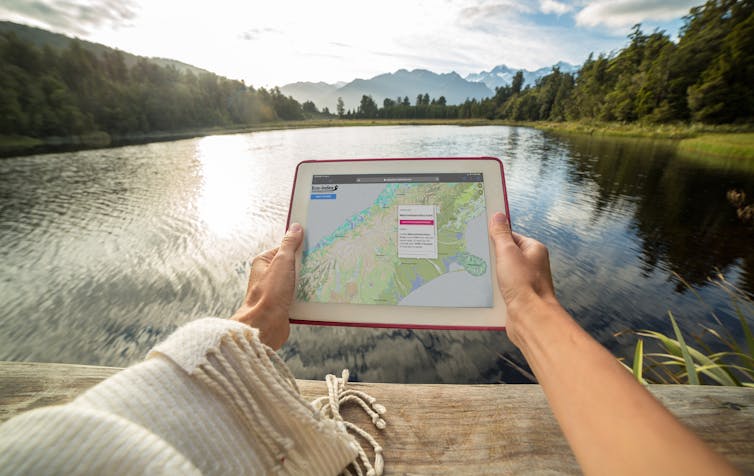
Biodiversity continues to decline globally, but nowhere is the loss more pronounced than in Aotearoa New Zealand, which has the highest proportion of threatened indigenous species in the world.
We hope our Eco-index initiative, which today launches an online ecosystem restoration map for New Zealand, will help change the story for nature.
Planning large-scale biodiversity restoration projects – whether they’re run by NGOs, governments or Indigenous groups – requires high-quality data.
Despite the rising demand, however, accessible biodiversity data have not been collected regularly or consistently. There are also challenges around the standardisation, storage and sharing of such data.
This means it has been difficult to quantify native ecosystems and biodiversity at scale. Cost-benefit analyses often have information gaps, meaning prioritising the various options for restoration projects can become guesswork.
Better Data With Help From New Technologies
Without accurate information, improving biodiversity becomes harder. But emerging technologies – such as remote sensing and artificial intelligence – are making it easier to gather better data.
The Eco-index Ecosystem Restoration Map provides New Zealand’s first public, open-access digital tool in this area. It aims to address information gaps in biodiversity restoration, and to show users which native ecosystems are appropriate to reconstruct in any given catchment area.
It also shows where the highest restoration priorities are – such as in areas with very low native ecosystem cover. And it allows anyone to view the restoration targets for each native ecosystem in any catchment.
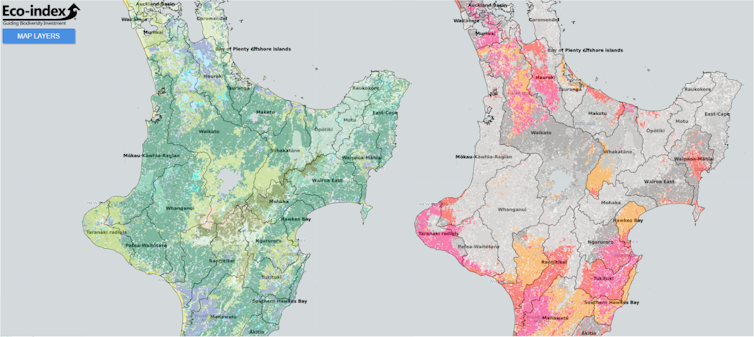
The map was developed with input from Indigenous leaders, rural professionals, community group leaders, government and industry bodies. Our goal is to share science-based information to support national discussion, policy and planning for ecosystem restoration.
It will be most useful when used alongside local information based on regional council guidance and local restoration expertise.
Ecological, economic, social and data science underpin the map’s development, as well as mātauranga Māori (Indigenous knowledge). The map will continue to be refined with data from new technologies and user feedback.
Biodiversity In Policy And Business
Internationally, there is growing interest in more strategic biodiversity support, including improved policy frameworks and sustainable finance.
New Zealand is addressing some national biodiversity issues through policy, such as the release of a national biodiversity strategy. The strategy encompasses three pillars, with objectives to improve systems that influence biodiversity, empower residents to take action, and protect or restore native biodiversity.
New Zealand’s National Policy Statement for Indigenous Biodiversity requires regional councils to safeguard native biodiversity and to “set a target of at least 10% Indigenous vegetation cover”.
The Eco-index has a minimum goal of 15% native ecosystem cover. It recommends land managers tackle ecosystem restoration from wherever they are now. This may mean aiming for 10% cover in the next ten years, followed by 15% in 15 years, and 30% in two decades.
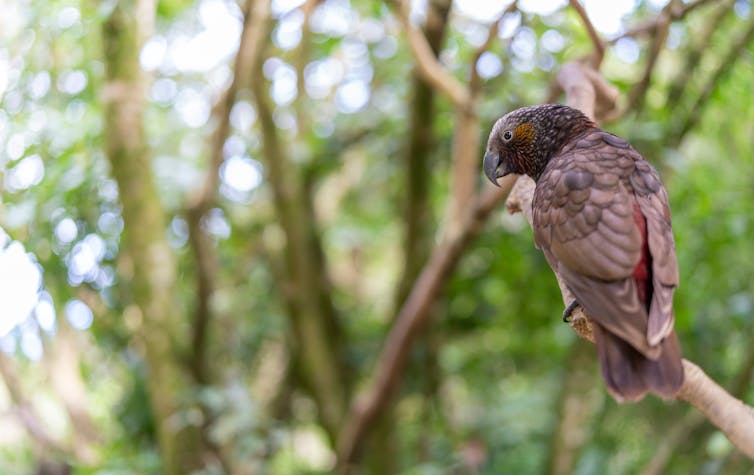
The rationale behind the 15% goal is that large tracts of native ecosystems support more native species than small, fragmented patches. Once an area drops below 10-20% of its original land cover, the number of species it can support declines suddenly.
Aotearoa New Zealand is also a signatory to the Kunming-Montreal Global Biodiversity Framework against which biodiversity strategy outcomes will be assessed and reported internationally.
Beyond this, global discussions focus on the development of biodiversity credit frameworks and include considerations such as the United Nations-supported Taskforce for Nature-related Financial Disclosures. The potential of these separate but aligned initiatives to create cumulative, positive impacts for nature is substantial.
Creating Change
The success of these policies and frameworks hinges on the availability of high-quality data to understand the current state and trends in biodiversity, and to monitor outcomes.
Initiated in 2020, the Eco-index group focuses on biodiversity in Aotearoa New Zealand being protected, restored and connected by 2121. This long term vision aligns with inter-generational land-management thinking. It acknowledges that it takes time to fully realise these native biodiversity ambitions.
Eco-index also claims the status of being the first digital public good in New Zealand. The interactive public map is the first publicly available tool, with other digital tools in development for release next year.
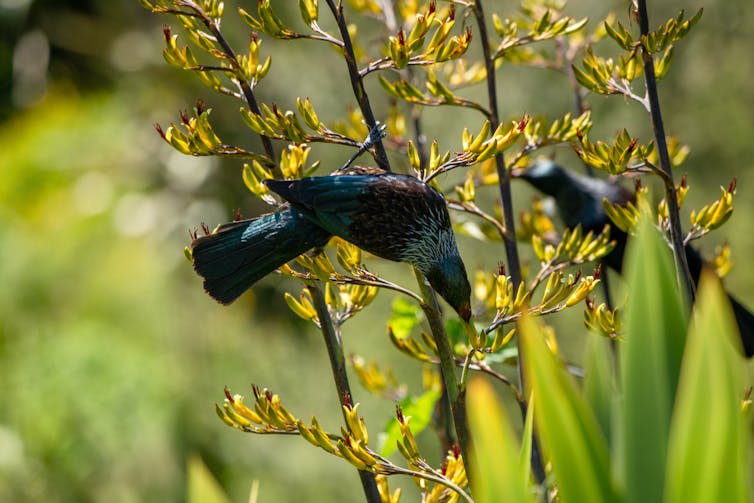
The wider toolkit aims to empower large-scale restoration planning with a range of customised spatial and economic tools. These can help identify the best locations for planting, inform costings, and provide valuations of ecosystem services.
They can also detect native ecosystems remotely, using satellite imagery and artificial intelligence.
If successful, the toolkit can be expanded for global use. It could also include specialised tools for natural hazard mitigation, such as the restoration of urban wetlands for flood control.
These tools are developed from the best information available, including Planet satellite imagery and data from Manaaki Whenua Landcare Research and Rongowai Science Payloads Operations Centre in partnership with the Geospatial Research Institute.![]()
Kiri Joy Wallace, Research Fellow in Restoration Ecology, University of Waikato; John Reid, Senior Research Fellow, University of Canterbury, and Penny Payne, Social Scientist, University of Waikato
This article is republished from The Conversation under a Creative Commons license. Read the original article.
Fire is consuming more than ever of the world’s forests, threatening supplies of wood and paper

A third of the world’s forests are cut for timber. This generates US$1.5 trillion annually. But wildfire threatens industries such as timber milling and paper manufacturing, and the threat is far greater than most people realise.
Our research, published today in the journal Nature Geoscience, shows that between 2001 and 2021, severe wildfires worldwide destroyed timber-producing forests equivalent to an area the size of Great Britain. Severe fires reach the tree tops and consume the forest canopy.
The amount of timber-producing forest burning each year in severe wildfires has increased significantly in the past decade. The western United States, Canada, Siberia, Brazil and Australia have been most affected.
Timber demand is expected to almost triple by 2050. Supplying demand is clearly going to be challenging. Our research highlights the need to urgently adopt new management strategies and emerging technologies to combat the increasing threat of wildfires.
What We Found
We combined global maps of logging activity and severe wildfires to determine how much timber-producing forest was lost to wildfire this century. Between 2001 and 2021, up to 25 million hectares of timber-producing forest was severely burned. The extent of fire has jumped markedly in the past decade, from an average of less than one million hectares a year up to 2015 to triple that since then.
At a national scale, the three countries with the largest absolute wildfire-induced losses of timber-producing forest were Russia, the US and Canada. When it comes to proportion of their forestry land lost, the nations with the highest percentages burnt were Portugal, followed by Australia.
Why Are More Forests Burning?
Climate change is a major driver of fire weather and fire behaviour. The increased risk of high-severity wildfire is an entirely expected outcome of warmer temperatures and, in some places, reduced rainfall.
However, it remains unclear why so much wood-production forest is being lost, and why the increase in burnt area has been so marked in the past decade.
One possible reason is logging makes forests more flammable. This has been documented in parts of southeastern Australia, where intact forest always burnt at lower severity than harvested forest across the entire footprint of the Black Summer fires. Forests that have been subject to thinning also are at risk of high-severity wildfire.
What Does This Mean For Us?
Whatever the reason, it is clear these fires in wood-production forests will have profound impacts on global timber supplies and all the industries associated with them. This is a huge problem for society and the environment, because timber demand is expected to triple by 2050, in part to facilitate the transition away from carbon-intensive cement in construction.
In many parts of the world, it typically takes 80–100 years or even longer to grow a tree to a size at which it can be a sawlog for products like furniture and floorboards. So the increased frequency of high-severity wildfire means fewer areas of forest will escape fire for long enough to reach timber harvesting age.
This is especially problematic where logging makes forests more prone to burning in a high-severity wildfire.
Furthermore, given the long-term nature of timber production, typically on cutting cycles ranging from 40 years to more than a century, future timber crops will face a very different climate as they mature.

Responding To The Challenge
If wood production from forests becomes increasing costly and timber is increasingly hard to source, there may be more pressure from industry and government to log other places, such as tropical forests, with high biodiversity and conservation value.
One way to tackle the problem is to grow more timber in plantations. Plantations already produce a third of the main forms of wood-producing timber – called industrial roundwood. They do this from just 3% of the area of natural forests.
Well managed plantations can grow a successful timber crop within a couple of decades. This is a lot shorter than the many decades and sometimes even centuries required to grow sawlogs in native forests. Having a shorter growing time in plantations increases the chances of harvesting trees before they are destroyed in a wildfire.
But plantations, like some logged and regenerated native forests, can be highly flammable. Fire risks need to be carefully managed. That includes planning, to avoid putting neighbouring areas and human communities at greater risk of being burnt.
Another key strategy to better protect timber resources will be to adopt new technologies to more quickly detect and then rapidly suppress ignitions such as those originating from lightning strikes.
Big fires start as small fires. The best time to suppress fires is when they are small, and as soon as ignition occurs. We have been involved in the development of drone fleets and unmanned aerial water and fire suppressant dispensing craft to more quickly detect and extinguish wildfires.
New technologies, as well as more, better planned and managed plantations will be crucial in not only protecting forests, but also safeguarding the flow of marketable timber and the industries dependent upon them. ![]()
David Lindenmayer, Professor, The Fenner School of Environment and Society, Australian National University; Chris Bousfield, Postdoctoral Research Associate, University of Cambridge, and David Edwards, Professor, University of Cambridge
This article is republished from The Conversation under a Creative Commons license. Read the original article.
Conflict pollution, washed-up landmines and military emissions – here’s how war trashes the environment
Stacey Pizzino, The University of Queensland; Jo Durham, Queensland University of Technology, and Michael Waller, The University of QueenslandWhen armed conflict breaks out, we first focus on the people affected. But the suffering from war doesn’t stop when the fighting does. War trashes the environment. Artillery strikes, rockets and landmines release pollutants, wipe out forests and can make farmland unusable.
One in six people around the world have been exposed to conflict this year, from civil war in Sudan to Russia’s war in Ukraine to the Israel-Hamas war.
War has returned. Conflicts are at their highest point since the second world war. Deaths are at a 28-year high. As we grapple with the immediate plight of people, we must not lose sight of what war leaves behind – the silent casualty of the environment.
What Damage Does War Do?
Armed conflict leaves a long trail of environmental damage, which in turn can worsen our health and that of other species.
Chemical weapons and pollution from weapons stay in the environment as a toxic legacy. Explosives release pollutants such as depleted uranium into soil, while landscapes can be destroyed by troop movement and the breakdown of infrastructure.
The damage can last far longer than you’d think. The bloody WWI Battle of Verdun in France left the once-fertile farmland contaminated. Over a century later, no one can live in the Red Zone due to the threat from unexploded bombs.
As the Russia-Ukraine war wears on, severe air pollution, deforestation and soil degradation have mounted.
Conflict also causes habitat loss and decreased biodiversity. Between 1946 and 2010, wildlife noticeably declined in African nations affected by armed conflict.
Landmines are particularly bad, as they are designed to remain in place until stepped on. Long after a war ends, they can still kill people or animals. Landmines also cause degradation and limit access to safe land, which can then become over-exploited. Landmines have been unearthed by flood waters in Libya, Ukraine, Lebanon and Bosnia Herzegovina.
Many explosive weapons are designed to withstand short periods of intense heat. But when high temperatures linger, unexploded bombs can detonate. As the world heats up, we may see more explosions – not just from remnant bombs, but from munitions dumps.
In the fast-heating Middle East, this is already happening. In Iraq, six arms depots exploded during intense heatwaves between 2018 and 2019. In Jordan, heatwaves have been blamed for a similar arms dump explosion in 2020.
At war’s end, weapons are often dumped in the ocean. From the first world war until the 1970s, out of date munitions and chemical weapons in the United Kingdom were dumped into the sea. It may have seemed like an easy solution, but the bombs haven’t gone away. Over 1 million tonnes of munitions litter the floor of a natural ocean trench between Northern Ireland and Scotland. These sometimes detonate underwater, while chemical weapons have washed up on beaches.
During the second world war, intense fighting took place on the Solomon Islands. Even today, people die or are wounded every year when uncovered bombs go off. Fishers have to be wary of underwater bombs.
Environmental exploitation such as illegal logging or diamond mining can accelerate during wartime, with profits used to buy weapons to fuel more fighting. At least 40% of civil war and internal conflicts between 1946–2006 were tied to natural resources such as teak and gold, according to the United Nations.
Sometimes, natural resources can become targets, as in the deliberate firing of oil wells in Kuwait or destruction of Ukraine’s Kakhovka Dam. These scorched-earth tactics do untold damage to the environment.
How Do War And Climate Change Interact?
The long-running war in Sudan’s Darfur region has been dubbed the world’s first climate change war due to its origins in drought and ecological crisis. While it’s difficult to clearly draw a link between the changing climate and an armed conflict, climate change is at minimum an indirect driver of armed conflict and can exacerbate existing social, economical and environmental factors. In turn, conflict worsens the damage done by climate change as it limits people’s ability to respond or cope with climate shocks.
Wars and extreme weather can both force people from their homes. At the end of last year, the number of people forced to seek refuge elsewhere in their own country was at an all time high. When people are forced to move, the disruption can add extra environmental damage through plastic and other types of waste.
When wars are raging, they take priority for governments. That, in turn, can limit efforts to reduce emissions or adapt to climate change.
That can make disasters worse. Colombia’s deadly 2017 landslide killed over 300 people. Why was it so deadly? In part, because many people had fled to the affected town, Mocoa, to avoid war and had built makeshift houses with no protection against disasters. We also know deaths from disasters increase in nations riven by armed conflict.
The world’s military forces are intense users of fossil fuels, accounting for 5.5% of global emissions. If we took the world’s military forces as one country, they would be the fourth highest emitter, after China, America and India.
We can no longer ignore the devastating coupling between war and environmental damage, including climate change. Wars make our ability to adapt to climate change worse, and environmental damage from conflict will exacerbate climate change.![]()
Stacey Pizzino, PhD Candidate, The University of Queensland; Jo Durham, Senior Lecturer in Disaster Risk Management and Health, Queensland University of Technology, and Michael Waller, Senior Lecturer Biostatistics, The University of Queensland
This article is republished from The Conversation under a Creative Commons license. Read the original article.
The unsafe Safeguard Mechanism: how carbon credits could blow up Australia’s main climate policy

This article is part of a series by The Conversation, Getting to Zero, examining Australia’s energy transition.
A time bomb is ticking inside the Albanese government’s climate policy. When it explodes, Australia will fall short of its climate targets and leave a gaggle of investors shirtless.
The problem arises from a poorly understood aspect of the net zero transition: carbon credits or offsets.
The centrepiece of Australia’s climate policy is a carbon pricing scheme known as the Safeguard Mechanism. It places caps on the emissions of around 220 of the country’s largest mining, gas and industrial facilities, based on the emissions intensity of their operations. Every year through to 2030 these caps will decline by between 1% and nearly 5%.
The facilities have two ways to keep their emissions within the caps. They can reduce them, or they can buy and surrender one of two forms of credits, the most significant being Australian carbon credit units (ACCUs) issued under Australia’s carbon offset scheme.
How The Offset Scheme Works
Under the scheme, landholders, energy users and other emitters can register projects that avoid emissions or sequester carbon dioxide in trees, soils or geological formations. Those who do so in line with specified rules receive ACCUs, a tradeable financial instrument.
Each carbon credit unit is supposed to represent additional and permanent abatement of greenhouse gas emissions equivalent to one tonne of CO₂.
Reducing the emissions of facilities covered by the Safeguard Mechanism is likely to be difficult and expensive, at least in the short term, as most are in the oil and gas, coal and other mining sectors. For some, the only viable way to significantly reduce emissions is to stop production.
Carbon credits enable these facilities to meet their obligations by effectively paying someone else who can cut emissions more cheaply. In theory, allowing facilities with high abatement costs to use offsets lowers the economy-wide cost of reducing greenhouse gases, without sacrificing climate outcomes.
But for the scheme to work, the ACCUs must have “integrity”: they must represent an actual reduction in emissions that would not have otherwise occurred. And to the extent the reduction involves sequestration of CO₂ in a sink (such as a forest), it must stay in the sink permanently.
Since the offset scheme started in 2011, 137 million ACCUs have been issued. Three-quarters of these have come from three project types: avoided deforestation in western New South Wales, combustion of methane from landfills (largely to create electricity), and human-induced regeneration of native forests in arid areas of inland Australia.
Our research shows that most of these projects have low integrity. People are getting carbon credits for not clearing forests that were never going to be cleared anyway, for growing trees that already exist, for growing forests in places that will never sustain them, and for operating electricity generators at landfills that would have operated anyway.
Putting Net Zero In Peril
These projects do serious damage to Australia’s emissions reduction efforts. They enable Safeguard Mechanism facilities to increase their emissions – and governments to approve new fossil fuel projects – on the grounds that carbon credits will provide offsetting reductions elsewhere. But credits with no integrity produce no offsetting reductions.
The flood of low-integrity credits in the ACCU market also artificially lowers the carbon price faced by the Safeguard Mechanism facilities. The lower price causes the facility operators to rely more heavily on offsets and delay onsite emission reduction efforts. It also warps the offset market by making high-integrity offset projects unviable – a form of Gresham’s Law, where bad projects drive out the good.
The situation with Australia’s offset scheme is not unique. Research on other offset schemes has found similar integrity problems. That’s because generating high-integrity credits is difficult.
Scheme regulators have a challenging job. Along with having to measure emissions and removals from dispersed and often naturally variable sources and carbon sinks, they must try to screen out phoney emissions reductions offered by project proponents.
The latter have both a huge information advantage over regulators and strong incentives to claim credits for doing what they were already doing or planning to do anyway – such as retaining forests they never intended to clear.
But regulators also have an incentive to increase the supply of credits, even if it risks reducing integrity. This is because low credit supply is taken as a sign of scheme failure.
Tight integrity standards reduce credit supply and push up credit prices, which in turn increases compliance costs for polluters and destabilises political support for carbon pricing schemes. Liquid markets built on a healthy supply of credits (regardless of quality) make regulators look good and keep emitters and politicians happy.
The Failings Of The Chubb Review
In 2022, the Albanese government commissioned former chief scientist Ian Chubb to lead a review of the ACCU scheme. The review’s report was confused and contradictory. It dismissed concerns about the scheme’s integrity, even those expressed by developers of offset projects.
Despite not analysing the performance of a single project, the review confidently concluded that the level of abatement credited under the scheme had not been overstated. Its evidence for this was limited to one sentence: “While the Panel was provided with some evidence supporting that position (that integrity problems existed), it was also provided with evidence to the contrary.” It gave no details of what that contrary evidence was.
The panel then recommended substantial changes, including an end to the untenable situation in which the Clean Energy Regulator, the statutory authority charged with implementing legislation to reduce emissions, was responsible for making and administering the scheme rules and then buying most of the credits. The panel also proposed repeal of the avoided deforestation offset.
These changes, while welcome, were carefully designed to leave existing projects untouched. For example, repeal of the avoided deforestation method will not affect 63 existing projects, which will generate credits for years to come.
Conveniently, this will ensure that the supply of ACCUs and their price remain in a politically acceptable range until at least 2030.
What The Government Must Do
Truly fixing the scheme requires the government to stop crediting low-integrity projects and methods. The credit tap must be turned off for all avoided deforestation projects and most human-induced regeneration projects, and crediting arrangements for landfill projects must be radically improved.
The government’s political problem is that it needs to keep the carbon price within a palatable range for Safeguard Mechanism facilities. If it stopped crediting low-integrity projects, prices would skyrocket and not enough high-integrity credits exist to meet demand.
The government could solve the problem by introducing a standard cap price into the Safeguard Mechanism. Instead of surrendering credits, facilities could pay, for instance, A$50 per tonne on excess emissions. But that would open the government to claims that the scheme is just another carbon tax.
Fixing these flaws is challenging. But by refusing to face the problems head-on, the government has sabotaged its own climate policy. Its failure could also permanently stain the reputation of offsets.
Like Robodebt, the scheme is badly designed, unethical, and destined to fail, albeit for different reasons. We can only hope that when it unravels, it doesn’t do Australia’s decarbonisation efforts permanent harm.![]()
Andrew Macintosh, Professor and Director of Research, ANU Law School, Australian National University and Don Butler, Professor, Australian National University
This article is republished from The Conversation under a Creative Commons license. Read the original article.
Farmers or foragers? Pre-colonial Aboriginal food production was hardly that simple
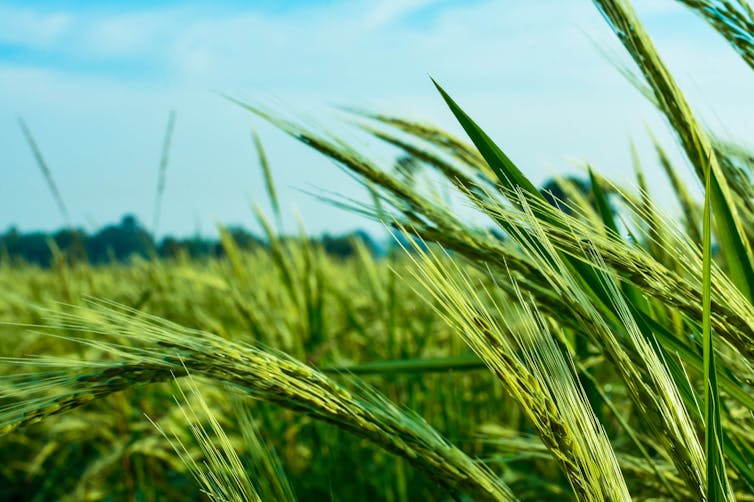
For almost ten years, debate has raged over the book Dark Emu by Aboriginal historian Bruce Pascoe. In it, Pascoe argues many pre-colonial Aboriginal groups were farmers, pointing to examples like eel aquaculture in Victoria, and grain planting and threshing of native millet in the arid centre.
The debate has drawn in everyone from academics to Aboriginal communities invested in food futures to shock jocks claiming it is a warping of history.
For our group of archaeologists and First Nations people, the fact this debate has raged so long suggests there are shortcomings in how we think of food production and how we investigate it in Australian archaeology.
Farmers versus foragers is a huge oversimplification of what was a mosaic of food production. After all, Australian landscapes differ markedly, from tropical rainforest to snowy mountains to arid spinifex country. For many Aboriginal people, the terms “farming” and “hunter-gatherer” do not capture the realities of 60 millennia of food production.
In our new research published in the Archaeology of Food and Foodways, we argue that to better understand millennia-old systems, archaeologists must engage deeply with fields such as plant genetics, ethnobotany, archaeobotany and bioarchaeology as well as listening more carefully to the views of Aboriginal people. Here’s how.
We Need To Use Better Methods
For decades, archaeologists have grappled with the task of understanding ancient food production. We are by no means the first to point to the lack of appropriate methods as a reason why this has proved hard.
Archaeobotanists Anna Florin and Xavier Carah have observed that food production systems in northern Australia are very similar to those in Papua New Guinea. While we accept Papuan food gardens, Australian archaeologists have been less eager to embrace this idea for Australia.
In part, this is a failure of terminology. Aboriginal food production was enormously varied.
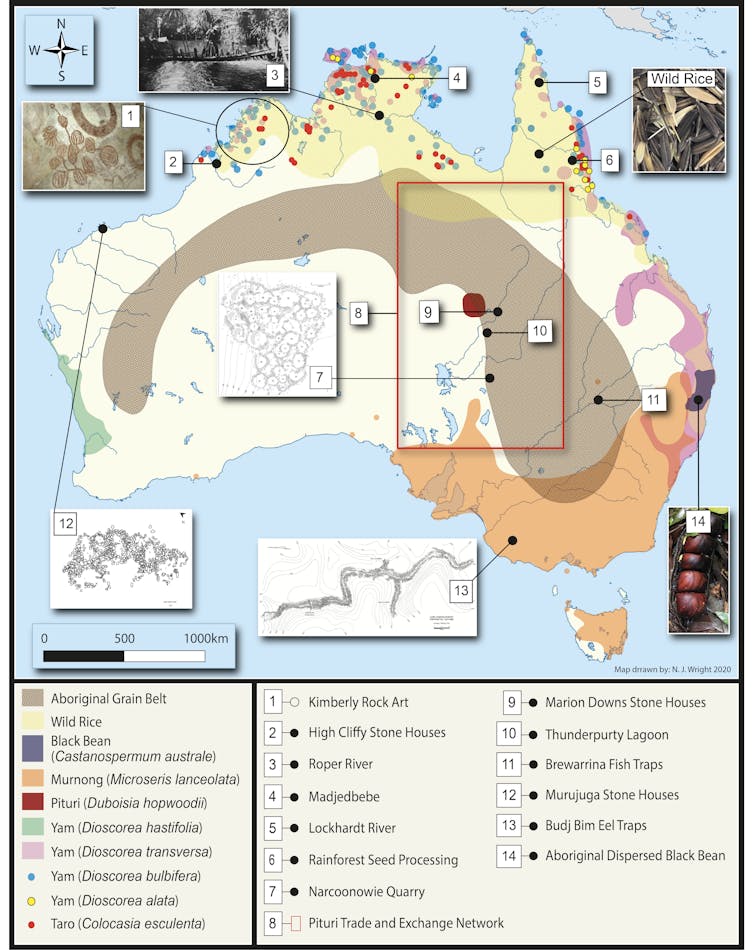
The solution lies in better methods. For instance, many Aboriginal groups lived semi-permanently in gunyah (bark hut) villages, as Dark Emu demonstrates by quoting colonial observers.
These settlement sites are vital to gaining a better understanding of how people lived. By excavating gunyah sites and fireplaces where food was prepared, we can recover seeds by sieving dirt and ash to find out which plants people used. The problem? Many of the sieves used were not fine enough to capture the tiny seeds of vital plants such as native millet. Most seeds used by Aboriginal groups were less than 1mm in radius.
This can be fixed. In south-west Asia, archeobotanists have long used fine mesh sieves to recover ancient seeds. You also need reference collections of seeds to be able to identify them from fireplaces.
Genetics – And Archaeology?
It might not sound like a natural fit. But around the world, combining plant genetics with archaeology has dramatically changed our understanding of how people used plants, how they moved them about the landscape and how they changed these plants into forms better suiting our use. The wild precursor of corn, for instance, looks almost nothing like what we moulded it into through selection.
Combining these approaches is only in its infancy in Australia. But early applications together with Aboriginal knowledge of plant use has revealed dramatic new insights into how Aboriginal people moved important species such as black bean Castanospermum australe around the landscape and cultivated them.
The legacy of these food production techniques may still be visible today. For instance, when we look at the four species of native rice, we would not expect them to have large seeds. But all four species do. For millennia, Aboriginal groups in Australia’s wet north farmed these floodplain grasses. They may well have provided some selective pressure that resulted in larger grains, as early farmers did elsewhere.
To date, we don’t know this for sure. But we can find out. Careful genetic analysis of remaining wild populations should tell us if these large grains came from human rather than natural selection. We can also analyse genetic diversity between wild rice populations, to see if Aboriginal groups were involved in spreading these useful plants further.
Stories From Ancestral Remains
Every bone tells a story. In your bones lie traces of how fast you grew, what you ate and how hard your life was.
Studying ancestral remains is a very sensitive issue due to the colonial practice of collecting Aboriginal remains for research. But when done sensitively and respectfully, it yields fresh insights.
Bones and teeth can tell us many things about life in Aboriginal Australia. Tracking changes in isotope ratios in teeth can tell us if people were shifting to a more sedentary way of living. Stress in bones can tell us about difficult food production techniques such as labour-intensive seed grinding.
The Past Can Shape The Future
Aboriginal culture is 60 millennia old, during which time the climate shifted several times. Sea levels rose, flooding the Bass Strait and the coastal plains connecting Cape York to Papua New Guinea.
For a culture to survive that long means it had to rely on sustainable food production. Finding out how exactly this was done could yield lost knowledge and make it possible for current-day Aboriginal groups to recapture these methods and crops.
To date, renewed interest in bushfoods has not spread far beyond boutique food industries such as gourmet breads and specialised plant foods like Kakadu plum and quandongs.
Learning more about drought-resilient crops such as native rice and native millet (Panicum decompositum) could help farmers adapt to climate change and diversify food production. In central Victoria, the Dja Dja Wurrung group is exploring the potential for kangaroo grass (Themeda triandra) for use as a food and as drought-resistant cattle fodder.
The better we understand ancient food production, the more likely we are to be able to bring this knowledge to bear on today’s challenges – and give a fuller answer to the questions raised by Dark Emu. ![]()
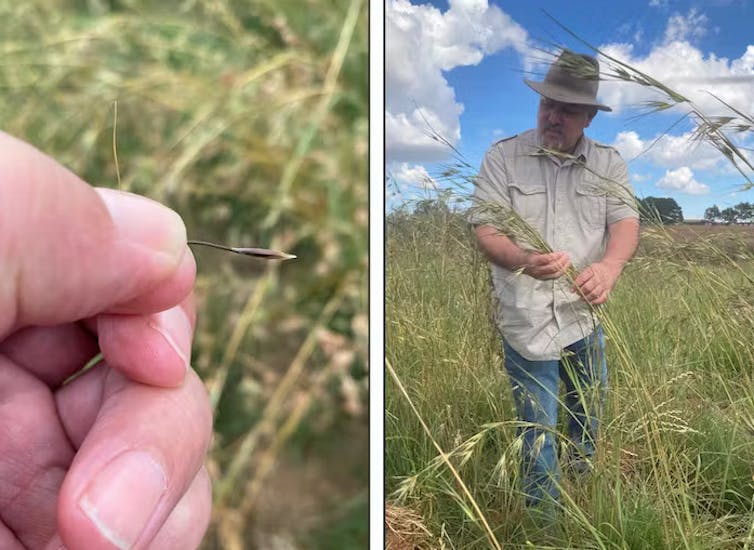
Michael Westaway, Australian Research Council Future Fellow, Archaeology, School of Social Science, The University of Queensland; Alison Crowther, Senior Lecture in Archaeology, The University of Queensland; Nathan Wright, Lecturer in archaeology, University of New England; Robert Henry, Director, Queensland Alliance for Agriculture and Food Innovation, The University of Queensland, and Rodney Carter, Traditional Owner, Indigenous Knowledge
This article is republished from The Conversation under a Creative Commons license. Read the original article.
History: Photos From Our Past - Narrabeen + Manly Corso
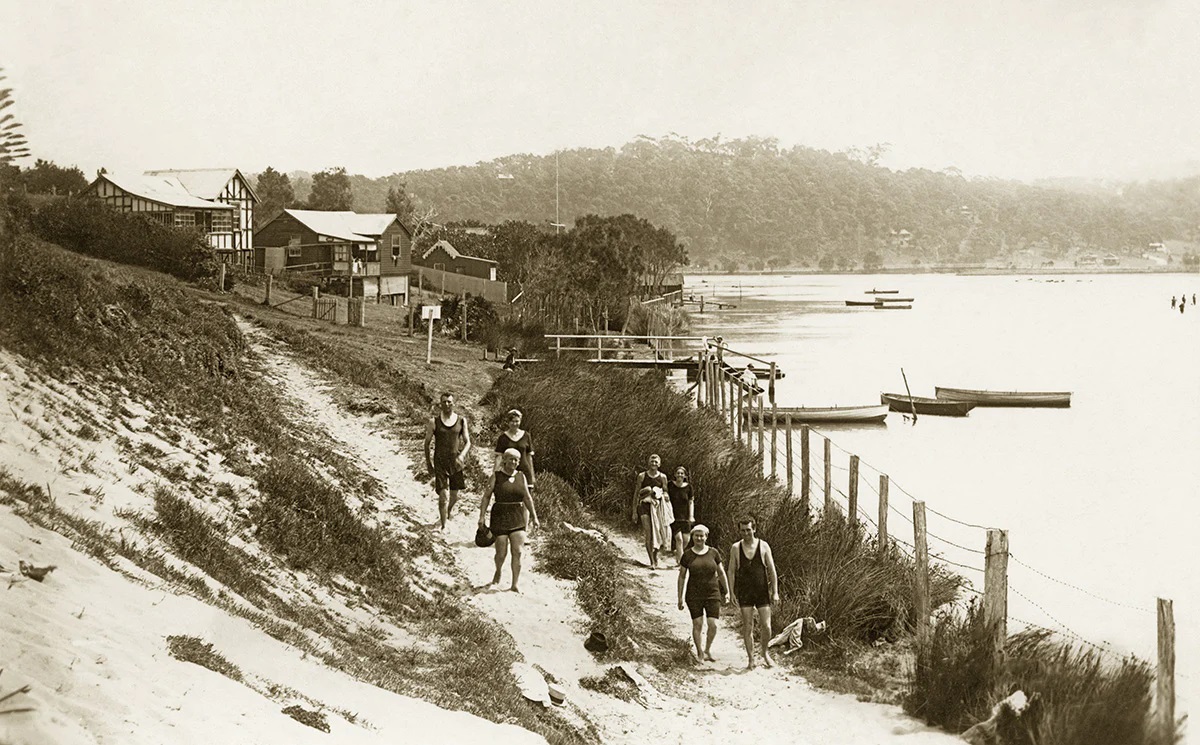
Narrabeen circa 1910 - off for a swim at the beach!; this is located alongside current day Birdwood Park
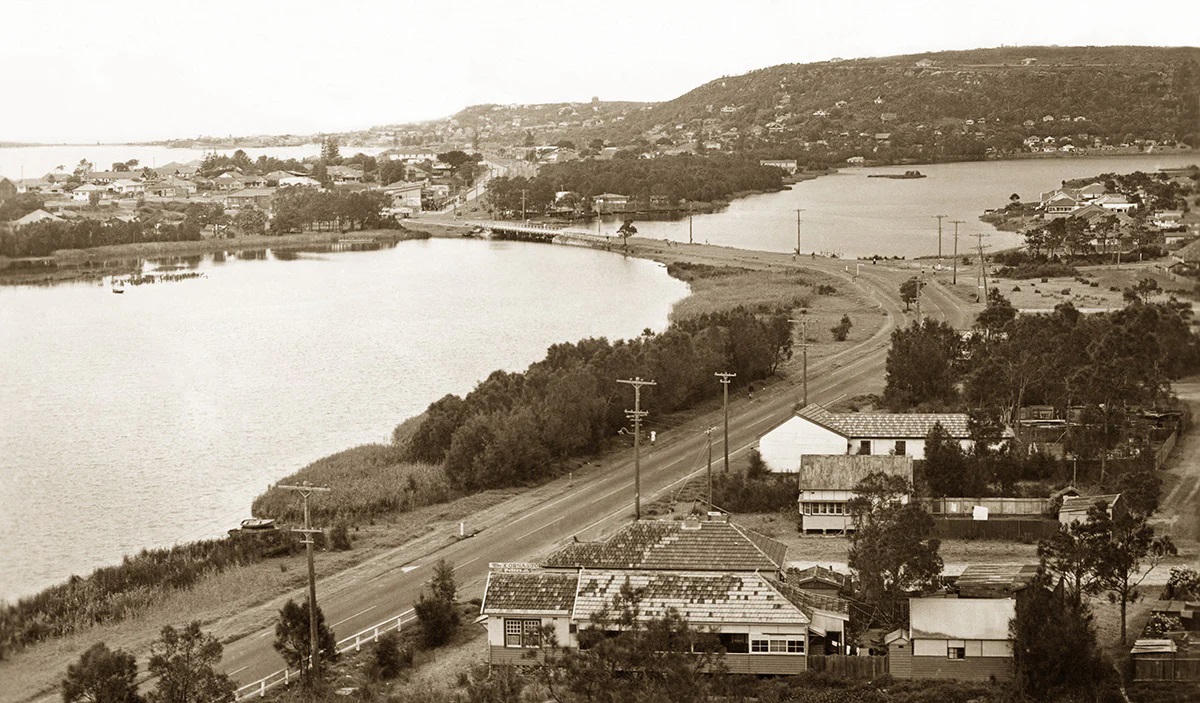
Narrabeen - the view south, circa 1936 - taken from what was then called 'Green Hills' (Elanora Heights

Many Corso circa 1927-1930


School Leavers Support
- Download or explore the SLIK here to help guide Your Career.
- School Leavers Information Kit (PDF 5.2MB).
- School Leavers Information Kit (DOCX 0.9MB).
- The SLIK has also been translated into additional languages.
- Download our information booklets if you are rural, regional and remote, Aboriginal or Torres Strait Islander, or living with disability.
- Support for Regional, Rural and Remote School Leavers (PDF 2MB).
- Support for Regional, Rural and Remote School Leavers (DOCX 0.9MB).
- Support for Aboriginal and/or Torres Strait Islander School Leavers (PDF 2MB).
- Support for Aboriginal and/or Torres Strait Islander School Leavers (DOCX 1.1MB).
- Support for School Leavers with Disability (PDF 2MB).
- Support for School Leavers with Disability (DOCX 0.9MB).
- Download the Parents and Guardian’s Guide for School Leavers, which summarises the resources and information available to help you explore all the education, training, and work options available to your young person.
School Leavers Information Service
- navigate the School Leavers Information Kit (SLIK),
- access and use the Your Career website and tools; and
- find relevant support services if needed.
Word Of The Week: Draft
Noun
1. a preliminary version of a piece of writing. 2. a written order to pay a specified sum. 3. US; A current of air, usually coming into a room or vehicle. 4. US; A dose (of medicine, alcohol, etc.).
Verb
1. prepare a preliminary version of (a document). 2. select (a person or group of people) and bring them somewhere for a certain purpose.
Adjective
US spelling of draught (adjective).
A phonetic spelling of draught, from Middle English draught, draght (“that which is pulled; that which is drawn up, a design”), from Old English dreaht, dræht, from Proto-West Germanic drahti, drahtu, from Proto-Germanic drahtuz (“a pulling, drawing”), equivalent to draw (“to draw, drag”) + -t. Cognate with Dutch dracht, German Tracht, Icelandic dráttur.
c. 1200, "act of pulling or drawing; quantity of liquid that one drinks at a time," from Old English *dreaht, *dræht, related to dragan "to draw, drag" (see drag (v.)). The oldest recorded sense besides that of "pulling" is of "drinking" (perhaps "so much as is drawn down the throat at once"); compare drag (n.) in reference to an inhaling on a cigarette. It is attested from c. 1300 as "that which is drawn or written." In British English, it retains the functions that did not branch off with draft.
c. 1500, a spelling variant of draught (q.v.) to reflect change in pronunciation. By the end of the 19c. it was the established form in the military, commercial, and many technical sentences, and it is now almost universal in American English as conforming to the pronunciation.
The meaning "rough copy of a writing" (something "drawn") is attested from 14c.; that of "preliminary sketch from which a final copy is made" is from 1520s; that of "flow of a current of air" is from c. 1770. Of beer from the 1830s, in reference to the method of "drawing" it from the cask. Sense in bank draft is from 1745. The meaning "a drawing off a group for special duty" is from 1703, in U.S. especially of military service; the verb in this sense first recorded 1714 although others cite "person conscripted for military purpose," 1864, American English, from draft + -ee.
Compare draught
Noun
1. a current of cool air in a room or other confined space. 2. a single act of drinking or inhaling. 3. the depth of a ship below the surface of the water
Adjective
1. denoting beer or cider served from a barrel or tank rather than from a bottle or can; "draught ale". 2. denoting an animal used for pulling heavy loads.
From Middle English (in the sense ‘drawing, pulling’; also ‘something drawn, a load’): from Old Norse dráttr, of Germanic origin; related to German Tracht, also to draw.
c. 1200, "act of pulling or drawing; quantity of liquid that one drinks at a time," from Old English *dreaht, *dræht, related to dragan "to draw, drag" (see drag (v.)). The oldest recorded sense besides that of "pulling" is of "drinking" (perhaps "so much as is drawn down the throat at once"); compare drag (n.) in reference to an inhaling on a cigarette. It is attested from c. 1300 as "that which is drawn or written." In British English, it retains the functions that did not branch off with draft
Compare draughts
The English name for checkers; draughts is a group of strategy board games for two players which involve diagonal moves of uniform game pieces and mandatory captures by jumping over opponent pieces. The term "checkers" derives from the checkered board which the game is played on, whereas "draughts" derives from the verb "to draw" or "to move".
From late Middle English: from draught; related to obsolete draught in the sense ‘move’ (in chess or any similar game); compare with French trait, from Latin tractus ‘a dragging’.
Similar games have been played for millennia. A board resembling a checkers board was found in Ur dating from 3000 BC. In the British Museum are specimens of ancient Egyptian checkerboards, found with their pieces in burial chambers, and the game was played by the pharaoh Hatshepsut. Plato mentioned a game, πεττεία or petteia, as being of Egyptian origin, and Homer also mentions it. The method of capture was placing two pieces on either side of the opponent's piece. It was said to have been played during the Trojan War. The Romans played a derivation of petteia called latrunculi, or the game of the Little Soldiers. The pieces, and sporadically the game itself, were called calculi (pebbles).

Two men in medieval clothing sit with a board balance between their knees. Two other men, one a knight in armour, the other perhaps a page boy, watch on. From: Knight, Charles: “Old England: A Pictorial Museum” (1845) from page 175
The draught of a ship's hull is the vertical distance between the waterline and the bottom of the hull (keel). The draught of the vessel is the maximum depth of any part of the vessel, including appendages such as rudders, propellers and drop keels if deployed. Draught determines the minimum depth of water a ship or boat can safely navigate. The related term air draught is the maximum height of any part of the vessel above the water.
The more heavily a vessel is loaded, the deeper it sinks into the water, and the greater its draught. After construction, the shipyard creates a table showing how much water the vessel displaces based on its draft and the density of the water (salt or fresh). The draught can also be used to determine the weight of cargo on board by calculating the total displacement of water, accounting for the content of the ship's bunkers, and using Archimedes' principle.
The closely related term "trim" is defined as the difference between the forward and aft draughts.
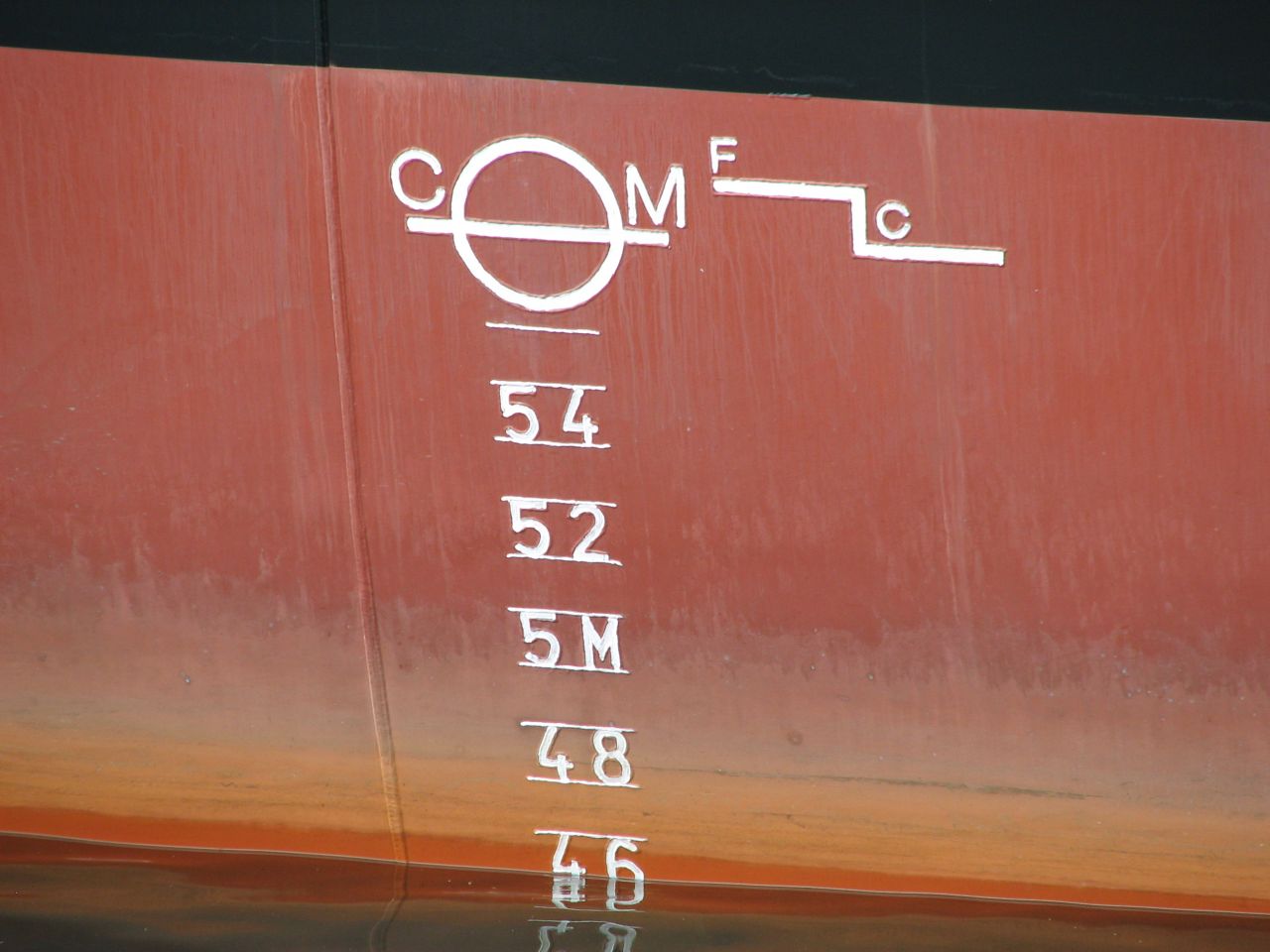
Load line mark and draught marks on the side of a ship
Archimedes' principle states that the upward buoyant force that is exerted on a body immersed in a fluid, whether fully or partially, is equal to the weight of the fluid that the body displaces. Archimedes' principle is a law of physics fundamental to fluid mechanics. It was formulated by Archimedes of Syracuse.
Archimedes of Syracuse (c. 287 – c. 212 BC) was an Ancient Greek mathematician, physicist, engineer, astronomer, and inventor from the ancient city of Syracuse in Sicily. Although few details of his life are known, he is regarded as one of the leading scientists in classical antiquity. Considered the greatest mathematician of ancient history, and one of the greatest of all time,[4] Archimedes anticipated modern calculus and analysis by applying the concept of the infinitely small and the method of exhaustion to derive and rigorously prove a range of geometrical theorems. These include the area of a circle, the surface area and volume of a sphere, the area of an ellipse, the area under a parabola, the volume of a segment of a paraboloid of revolution, the volume of a segment of a hyperboloid of revolution, and the area of a spiral.
Archimedes' other mathematical achievements include deriving an approximation of pi, defining and investigating the Archimedean spiral, and devising a system using exponentiation for expressing very large numbers. He was also one of the first to apply mathematics to physical phenomena, working on statics and hydrostatics. Archimedes' achievements in this area include a proof of the law of the lever,[9] the widespread use of the concept of center of gravity, and the enunciation of the law of buoyancy or Archimedes' principle. He is also credited with designing innovative machines, such as his screw pump, compound pulleys, and defensive war machines to protect his native Syracuse from invasion.
Archimedes died during the siege of Syracuse, when he was killed by a Roman soldier despite orders that he should not be harmed. Cicero describes visiting Archimedes' tomb, which was surmounted by a sphere and a cylinder that Archimedes requested be placed there to represent his mathematical discoveries.

Archimedes Thoughtful by Domenico Fetti (1620)
As school students strike for climate once more, here’s how the movement and its tactics have changed

On Friday, students will once again down textbooks and laptops and go on strike for climate action. Many will give their schools a Climate Doctor’s Certificate signed by three leading climate academics.
These strikes – part of a National Climate Strike – mark five years since school students started walking out of schools to demand greater action on climate change. In 2018, the first students to strike defied calls by then prime minister Scott Morrison for “less activism” and to stay in school.
Last year, Australia voted out the Morrison government, in what was widely seen as a climate election. Teal independents won Liberal heartland seats on climate platforms, while the Greens recorded high votes. Labor came to office promising faster action on climate.
So why are school students still striking? Has the movement changed its focus? We have been researching these questions alongside young people involved in climate action in the ongoing Striking Voices project, as well as through the coauthor’s Sapna South Asian Climate Solidarity project.
We found the movement has expanded its demands from climate action to climate justice, stressing the uneven and unfair distribution of climate impacts. The movement itself has also become more diverse.

From Climate Action To Climate Justice
Across the world, young climate advocates such as those from School Strike 4 Climate are calling for “climate justice” alongside “climate action”.
Why? Because climate change doesn’t impact everyone equally. As the Australian Youth Climate Coalition puts it, it’s “often the most marginalised in our societies who are hit first and worst by climate impacts and carry the burden of polluting industries”.
Mere semantics? No. The idea of climate justice draws attention to existing social and ethical injustices which climate change amplifies. The phrase also points to the need for climate solutions that work for people in a transformative way and help create collective and just societies.
In Australia, calls for climate justice are intimately connected with justice for First Nations people and to protecting, defending and “heal[ing] Country”, as Seed Mob write, with First Nations-led solutions.
Climate justice is central to the messaging of groups such as Pacific Climate Warriors diaspora, and Sapna South Asian Climate Solidarity.
In our conversations with young people, climate justice appears highly compelling. High-school student Yehansa Dahanayake explained:
I think I’d always thought of climate change as sort of a 2D thing. I thought about it as the temperature rise, deforestation, and sea caps melting - and while that is definitely true, I think [when] I started to learn about the justice aspects of climate change, [it] made me realise that there are many other factors that tie in, such as the Global North/ Global South difference and how that relates.
High-school student Emma Heyink told us about the importance of what she called a “justice-centred lens”:
You can’t look at climate change without looking at all these other issues. It just becomes so much more interlinked and solutions become so much more obvious.
Diversifying Networks And Strategies
So who are these young people, and what have they been doing in recent years?
Swedish student Greta Thunberg is frequently credited as sparking the youth-led climate movement.
But the movement is much larger – and more diverse – than one person, and increasingly so in recent years.
As a report by Sapna points out, Australia’s youth-led climate justice networks are more likely to be racially diverse than mainstream climate movements.
Yet climate justice networks are not immune from the oppressive dynamics they protest against. When the coauthor interviewed 12 now-graduated school strikers of South Asian heritage, they reported sometimes feeling sidelined in climate spaces – which are often white-dominated – as well as in media opportunities. As one young person put it, it seemed “hard to tell a brown person’s climate justice story”.
There are signs of positive change. The upheaval of the COVID pandemic saw stronger connections emerge between social movements, and clearer links between intersecting crises and injustices, both globally and in youth-led climate networks.
As recent high-school graduate and school strike organiser Owen Magee explained:
at our strikes, we are platforming First Nations people, rural and regional people who’ve directly been affected by the climate crisis, directly being affected by fossil fuel greed and corporation greed. That in itself is focusing on the intersectional nature of climate justice.
You can see this cross-pollination in the support shown by young advocates across multiple climate justice networks in the Power Up gathering on Gomeroi Country in northwestern New South Wales to show solidarity with Traditional Owners fighting coal and gas projects on their lands.
The targets and tactics of youth-led climate justice networks have shifted and proliferated in recent years - for example, to the banks that finance fossil fuel companies.

When school strikers graduate, some move into different modes of climate-related action.
Some have taken part in strategic climate litigation in a bid to create legislation embedding a climate duty of care for young people in government decisions on issues such as fracking approvals.
Others are involved in non-violent direct actions, such as next week’s Rising Tide People’s Blockade of the world’s largest coal port in Newcastle.
Young climate advocates are battling for climate justice on a wide range of fronts. They are calling on politicians to do the same.
We would like to acknowledge and thank the Striking Voices project research associates, Natasha Abhayawickrama, Sophie Chiew, Netta Maiava and Dani Villafaña.![]()
Eve Mayes, Senior Research Fellow in Education, Deakin University and Ruchira Talukdar, Casual senior research fellow, Deakin University
This article is republished from The Conversation under a Creative Commons license. Read the original article.
Black skies and raging seas: how the First Fleet got a first taste of Australia’s unforgiving climate
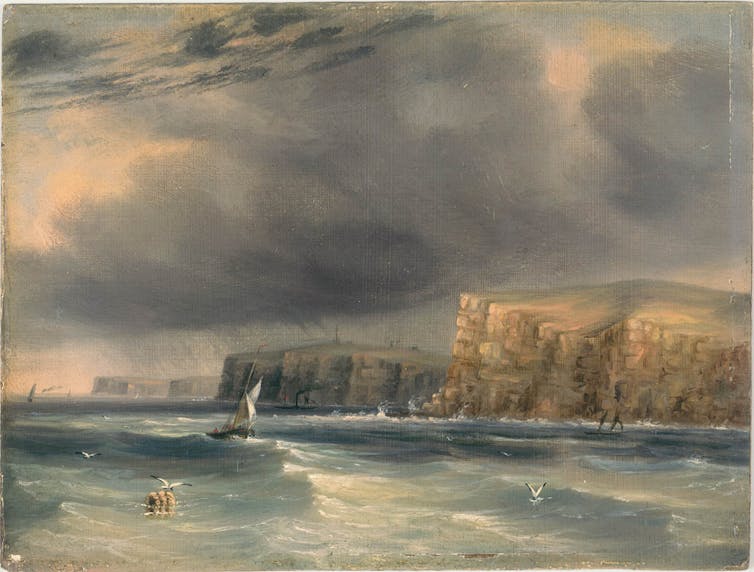
The women screamed as the huge waves crashed loudly on the wooden deck. Horrified, they watched the foaming torrent wash away their blankets. Many dropped to their knees, praying for the violent rocking to stop. The sea raged around them as the wind whipped up into a frenzy, damaging all but one of the heavily loaded ships.
The severe storm was yet another taste of the ferocious weather that slammed the First Fleet as it made its way across the Southern Ocean in December 1787. Now, after an eight-month journey from England in a ship riddled with death and disease, the passengers’ introduction to Australia was also far from idyllic. The unforgiving weather that greeted the First Fleet was a sign of things to come. More than once, intense storms would threaten the arrival of the ships and bring the new colony close to collapse.
So how did the early arrivals to Australia deal with such extreme weather? Have we always had a volatile climate? To answer these questions, we need to follow Australia’s colonial settlers back beyond their graves and trace through centuries-old documents to uncover what the climate was like from the very beginning of European settlement. By poking around in the settlers’ old diaries, letters and newspaper clippings, we can begin to piece together an idea of what the country’s climate was like long before official weather measurements began.
When the British sailed into Australian waters, they had no idea of what awaited them. Eighteen years before the arrival of the First Fleet, Captain James Cook had barely spent a week in Botany Bay. He didn’t even stop in for a quick stickybeak at Port Jackson, the settlement site that eventually came to be known as Sydney Cove. HMS Endeavour had only briefly skirted past modern-day Sydney Harbour in May 1770, so the British knew next to nothing of the land, its climate or its people. Perhaps they expected that life would resemble their other colonial outposts like India, or an undeveloped version of England. With enough hard work, surely the land could be tamed to support their needs. But when the First Fleet sailed into Sydney Cove, they unknowingly entered an ancient landscape with an unforgiving climate.
Violent Storms
Even before Governor Arthur Phillip set foot in Botany Bay, violent storms had battered the overcrowded ships of the First Fleet. During the final eight-week leg of the journey from Cape Town to Botany Bay, the ships had sailed into the westerly winds and tremendous swells of the Southern Ocean. Ferocious weather hit the First Fleet as it made its way through the roaring forties in November–December 1787. Although the strong westerlies were ideal for sailing, conditions on the ships were miserable. Lieutenant Philip Gidley King described the difficult circumstances on board HMS Supply: “strong gales … with a very heavy sea running which keeps this vessel almost constantly under water and renders the situation of everyone on board her, truly uncomfortable”. Unable to surface on deck in the rough seas, the convicts remained cold and wet in the cramped holds.
As Christmas approached, King noted the surprisingly chilly conditions off the southwestern coast of Western Australia: “The cold is in the extreme here as in England at this time of year, although it is the height of summer here.” Aboard HMS Sirius, Judge David Collins wrote about how the crew tried to celebrate in “mountains high” seas, to no avail. On New Year’s Day 1788, Arthur Bowes Smyth, a surgeon aboard the Lady Penrhyn, described how the sea poured into his cabin:
Just as we had dined, a most tremendous sea broke in at the weather scuttle of the great cabin and ran with a great stream all across the cabin, and as the door of my cabin happened not to be quite closed shut the water half filled it, the sheets and the blankets being all on a flow. The water ran from the quarterdeck nearly into the great cabin, and struck against the main and missen chains with such a force as at first alarmed us all greatly, but particularly me, as I believed [the] ship was drove in pieces. No sleep this night.
In a letter to his father, Sirius crew member Newton Fowell described the terrible weather that greeted the new year: “This year began with very bad tempestuous weather, it blew much harder than any wind we have had since our leaving England.” As the atrocious conditions continued, the First Fleet was forced to slow down to prevent the ships’ sails from tearing. Earlier in December 1787, the Prince of Wales had lost its topsail and a man washed overboard in what a sailor on the Scarborough described as “the heaviest sea as ever I saw”.
Captain John Hunter described how the rough seas made life on the Sirius very difficult for the animals on board:
The rolling and labouring of our ship exceedingly distressed the cattle, which were now in a very weak state, and the great quantities of water which we shipped during the gale, very much aggravated their distress. The poor animals were frequently thrown with much violence off their legs and exceedingly bruised by their falls.
It wasn’t until the first week of January 1788 that the majority of the First Fleet sailed past the southeastern corner of Van Diemen’s Land, modern-day Tasmania. As his boat navigated the coast, surgeon John White noted: “We were surprised to see, at this season of the year, some small patches of snow.” The fleet then began the 1,000-kilometre struggle up the coast of what would soon be called New South Wales, against a strong headwind and the East Australian Current. Newton Fowell wrote:
The wind variable and weather dark and gloomy, with a very troublesome high sea. About two o'clock p.m. we had one of the most sudden gusts of wind I ever remember to have known. In an instant it split our main-sail; and but for the activity shewn by the sailors, in letting fly the sheets and lowering the top-sails, the masts must have gone over the side… Fortunately for us the squall was of short duration, otherwise the ships must have suffered considerably from the uncommon cross sea that was running; which we had found to be the case ever since we reached this coast.
According to Bowes Smyth, faced with a “greater swell than at any other period during the voyage”, many of the ships were damaged, as were seedlings needed to supply the new colony with food. Bowes Smyth continued:
The sky blackened, the wind arose and in half an hour more it blew a perfect hurricane, accompanied with thunder, lightening and rain… I never before saw a sea in such a rage, it was all over as white as snow … every other ship in the fleet except the Sirius sustained some damage … during the storm the convict women in our ship were so terrified that most of them were down on their knees at prayers.
Finally, on January 19, the last ships of the First Fleet arrived in Botany Bay. But after just three days there, Phillip realised that the site was unfit for settlement. It had poor soil, insufficient freshwater supplies, and was exposed to strong southerly and easterly winds. With all the cargo and 1,400 starving convicts still anchored in Botany Bay, Phillip and a small party, including Hunter, quickly set off in three boats to find an alternative place to settle. Twelve kilometres to the north they found Port Jackson.
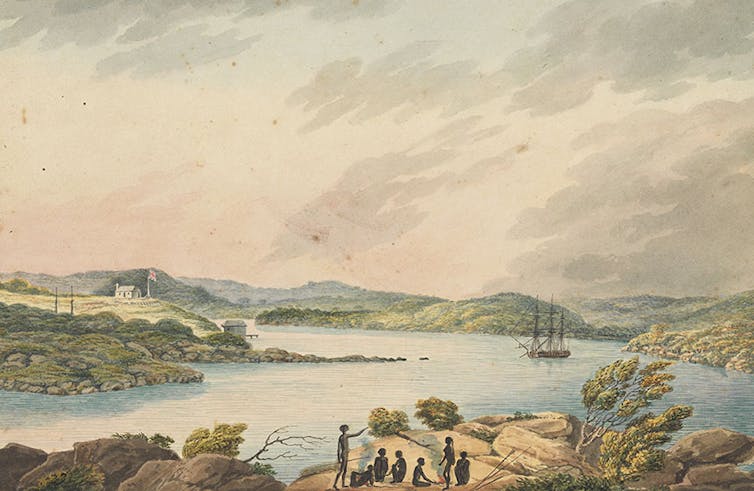
When the Endeavour had sailed past the location 18 years earlier, Cook had simply noted: “About two or three miles from the land and abreast of a bay or harbour wherein there appeared to be safe anchorage, which I called Port Jackson.” Early in the afternoon of the second day of their exploration, Phillip and his party discovered a large sheltered bay with a freshwater stream flowing into it. As Phillip later relayed to England, they “had the satisfaction of finding the finest harbour in the world”. It was decided that their new home would be here, not Botany Bay. It was named Sydney Cove after Lord Sydney, the home secretary of England at that time. John White was even more blown away by Port Jackson, gushing that it was “without exception, the finest and most extensive harbour in the universe”.
On 23 January 1788, Phillip and his party returned to Botany Bay and gave orders for the entire fleet to immediately set sail for Port Jackson. But the next morning, strong headwinds blew, preventing the ships from leaving the harbour. On 25 January, King wrote: “The wind blowing strong from the NNE prevented … our [the Supply] going out,” adding that they were obliged “to wait for the ebb tide and at noon we weighed and turned out of the harbour”. In the meantime, the rest of the fleet was still trying to sail out of Botany Bay. A surgeon, George Worgan, wrote about “the wind coming to blow hard, right in to the bay, the Sirius and the transports could not possibly get out”. A huge sea rolling into the bay caused ripped sails and a lost boom as the ships drifted dangerously close to the rocky coastline. According to Lieutenant Ralph Clark:
If it had not been by the greatest good luck, we should have been both on the shore [and] on the rocks, and the ships must have been all lost, and the greater part, if not the whole on board drowned, for we should have gone to pieces in less than half of an hour.
Finally, as Bowes Smyth described, the ships left the bay: “With the utmost difficulty and danger [and] with many hairbreadth escapes [we] got out of the harbour’s mouth … it was next to a miracle that some of the ships were not lost, the danger was so very great.” By 3 p.m. on January 26, 1788, all 11 ships of the First Fleet had safely arrived in Port Jackson. Meanwhile, while waiting for the others to arrive, Phillip and a small party from the Supply had rowed ashore and planted a Union Jack, marking the beginning of European settlement in Australia.
After such an epic journey, the whole ordeal was washed away with swigs of rum. Unknowingly, it marked the start of our rocky relationship with one of the most volatile climates on Earth.
This is an edited extract from Sunburnt Country: The History and Future of Climate Change by Joelle Gergis, published by Melbourne University Publishing. An edited version of this article has also appeared on Pursuit.![]()
Joelle Gergis, ARC DECRA Climate Research Fellow, School of Earth Sciences, The University of Melbourne
This article is republished from The Conversation under a Creative Commons license. Read the original article.
Feeling flight shame? Try quitting air travel and catch a sail boat
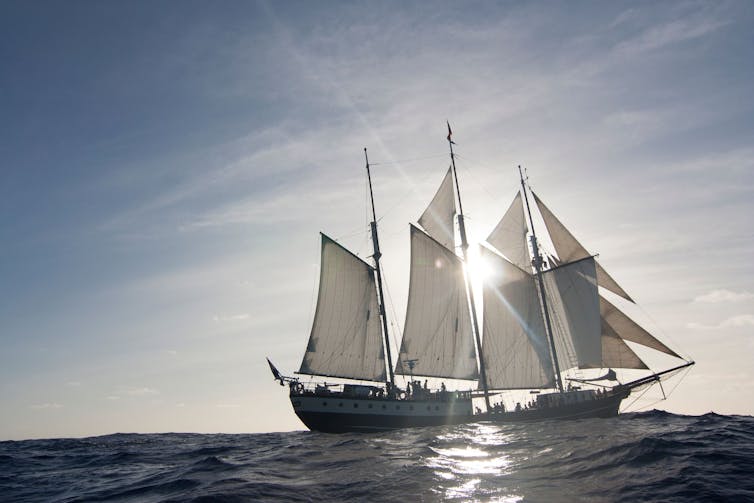
If you’ve caught a long haul flight recently, you generated more carbon emissions than a person living in some developing countries emits in an entire year.
If that fact doesn’t ruffle you, consider this: worldwide, 7.8 billion passengers are expected to travel in 2036 - a near doubling of current numbers. If business as usual continues, one analysis says the aviation sector alone could emit one-quarter of the world’s remaining carbon budget - the amount of carbon dioxide emissions allowed if global temperature rise is to stay below 1.5°C.
The world urgently needs a transport system that allows people to travel around the planet without destroying it.
A group of European climate activists are sending this message to world leaders by sailing, rather than flying, to a United Nations climate conference in Chile in December.
The Sail to the COP initiative follows Greta Thunberg’s high-profile sea voyage to attend last month’s United Nations climate summit in New York. The activists are not arguing global yacht travel is the new normal - in fact therein lies the problem. We need to find viable alternatives to fossil-fuelled air travel, and fast.

Why Aviation Emissions Matter
A study conducted for the European Parliament has warned that if action to reduce flight emissions is further postponed, international aviation may be responsible for 22% of global carbon emissions by 2050 - up from about 2.5% now. This increasing share would occur because aviation emissions are set to grow, while other sectors will emit less.
In Australia, aviation underpins many aspects of business, trade and tourism.
The below image from global flight tracking service Flightradar24 shows the number of planes over Australia at the time of writing.

Federal government figures show the civil aviation sector, domestic and international, contributed 22 million tonnes of carbon dioxide-equivalent emissions in 2016.
The number of passenger movements from all Australian airports is set to increase by 3.7% a year by 2030-31, to almost 280 million.
To Change, Start With A Jet Fuel Tax
While airlines are taking some action to cut carbon emissions, such as introducing newer and more fuel efficient aircraft, the measures are not enough to offset the expected growth in passenger numbers. And major technological leaps such as electric aircraft are decades away from commercial reality.
Emissions from international flights cannot easily be attributed to any single country, and no country wants to count them as their own. This means that international civil aviation is not regulated under the Paris Agreement. Instead, responsibility has been delegated to the International Civil Aviation Organisation (ICAO).
The Sail to the COP initiative is calling for several actions. First, they say jet fuel should be taxed. At present it isn’t - meaning airlines are not paying for their environmental damage. This also puts more sustainable transport alternatives, which do pay tax, at a disadvantage.
Research suggests a global carbon tax on jet fuel would be the most efficient way to achieve climate goals.
But instead, in 2016 ICAO established a global scheme for carbon offsetting in international aviation. Under the plan, airlines will have to pay for emissions reduction in other sectors to offset any increase in their own emissions after 2020.
Critics say the strategy will not have a significant impact - pointing out, for example, that the aviation industry is aiming to only stabilise its emissions, not reduce them.
In contrast, the international shipping sector has pledged to halve its emissions by 2050, based on 2008 levels. Some small shipping companies are even using zero-emissions sail propulsion as a sustainable means of cargo transport.
Sail to the COP is also seeking to promote other sustainable ways of travelling such as train, boat, bus or bike. It says aviation taxes are key to this, because it would encourage growth in other transport modes and make it easier for people to to make a sustainable transport choice.
A growing number of people around the world are already making better choices. In Thunberg’s native Sweden for example, the term “flygskam” - or flight shame - is used to describe the the feeling of being ashamed to take a flight due to its environmental impact. The movement has reportedly led to a rising number of Swedes catching a train for domestic trips.
Can We Sail Beyond Nostalgia?
Many will dismiss the prospect of a revival in sea travel as romantic but unrealistic. And to some extent they are right. Sailing vessels cannot meet current demand in terms of speed or capacity. But perhaps excessive travel consumption is part of the problem.
The late sociologist John Urry has outlined a number of possible futures in a world of oil scarcity.
One is a shift to a low-carbon, and low-travel, society, in which we would “live smaller, live closer, and drive less”. Urry argues we may be less rich, but not necessarily less happy.
Meantime, the challenges for passenger ocean travel remain many. Not least, it can be slow and uncomfortable - Thunberg likened it to “camping on a rollercoaster”.
But one Sail to the COP organiser, Jeppe Bijker, thinks it’s an option worth exploring. He developed the Sailscanner tool where users can check if sailing ships are taking their desired route, or request one.
A trip from the Netherlands to Uruguay takes 69 days, at an average speed of 5km/hour.
Some ships might require you to help out with sailing. Other passengers may be required to work look-out shifts. Of course, some passengers may become seasick.
But the site also lists the advantages. You can travel to faraway places without creating a huge carbon footprint. You have time to relax. And out on the open water, you experience the magnitude of the Earth and seas.![]()
Christiaan De Beukelaer, Senior Lecturer, The University of Melbourne
This article is republished from The Conversation under a Creative Commons license. Read the original article.
Master and Commander at 20: how a film about men fighting at sea is actually a safe harbour of positive masculinity
Matilda Hatcher, Australian National UniversityAt 20, Peter Weir’s 2003 masterpiece Master and Commander remains a captivating historical drama – and an emblem of wholesome masculinity.
A deeply detailed film set in the British Royal Navy during the Napoleonic Wars, Master and Commander follows Captain “Lucky” Jack Aubrey (Russell Crowe) and his men aboard HMS Surprise. Accompanied by the eccentric amateur naturalist Stephen Maturin (Paul Bettany), the crew are hunting the French ship Acheron through the Pacific Ocean.
Its depiction of life at sea is gritty and brutal: intense battle scenes; Maturin performing surgery on himself; Hollom’s suicide. And yet Master and Commander delivers a nostalgic, idealised lifestyle that still has many men dreaming of ditching their office jobs and sailing the high seas.
But it is not necessarily the masculine, nautical adventures that appeal to men so much as the film’s healthy and loving male relationships.
Gentle, Subtle And Lifelike
Jack Aubrey is a classic masculine hero. In the face of apparently impossible odds, he simply remarks: “well then, there’s not a moment to lose.”
Fighting against the tyranny and oppression of the French, his is the classic underdog tale. Acheron has twice the guns and twice the men. Taking it on is a test of nerve, discipline and courage.
The performances of the protagonists are gentle, subtle and lifelike. Crowe gives a rugged and charismatic performance as the tradition-loving Aubrey. Bettany as the charmingly lubberly Maturin is the perfect complement to Aubrey, even as he differs from his book counterpart, his role as an intelligence agent being conspicuously absent from the script.
The portrayals of these two men and their friendship – their abiding love for each other overcoming differences of politics and personality – carry the film. At times, Weir’s film seems to be a pure character study; the Acheron’s chase and capture matter much less than the development of this key male friendship.
Director Taika Waititi has called it his comfort film as well as his favourite romance movie, saying their relationship is “palpable”.
It is this aspect of the film, among a surplus of amputation, hard tack, hierarchy and public flogging, that has great appeal to men.
The Dangers Of The Manosphere
Men are increasingly facing issues of loneliness, mental ill health and disenfranchisement.
The online “manosphere” can seem like an opportunity for some men to deal with their very real issues of hopelessness and isolation. These online communities say they are looking to combat feminism and restore the role of traditional male dominance in society, offering men a space of connection and comradeship.
But this online masculine ideal is rigid and conservative, emphasising toughness, hypersexuality, aggression, control and self-sufficiency.
Rather than offering a positive community, these online spaces have been increasingly associated with toxic masculinity characterised by violence, hostility to women and emotional repression. These ideals create harm towards men themselves and those around them.
The HMS Surprise offers an alternative picture of male camaraderie. On board Surprise, the masculine environment is a supportive one. It allows men to feel their differences while still inspiring and caring for each other. From gentle, scientific sorts to burly able seamen, all take pride in their community on board their “little wooden world”.
Online, 20 years after the film’s release, many men are finding comfort and inspiration in this contrasting picture of what masculinity can look like.
Wholesome Masculinity
Master and Commander’s intimate study of male friendship makes the film a touchstone of wholesome masculinity. Memes abound attesting to audiences’ yearning for a life of honest work and male companionship.
One meme captions a heroic picture of Jack Aubrey standing against the sea asking: “is the cure to male loneliness sailing the high seas with your bros?”
A tweet announces the “hot new bachelor party activity” is historic gunnery exercises, with the “boys hooting and hollering as they drink grog firing three broadsides in two minutes”.
One Reddit commenter, explaining its popularity, describes it as a “wholesome bromance, which is the ultimate catnip for straight dudes”.
This admiration of the Surprise’s masculine community, where different kinds of men are celebrated, serves as a positive counter model to the angst and toxicity of the manosphere.
At sea, men like Jack Aubrey enact traditional masculine values without the fear of losing power and without restrictive gender norms: they share joy, grieve together, and play music together.
Despite epic battles and award-winning cinematography, by far the most iconic scenes in Master and Commander are quiet examples of our protagonists’ friendship: Jack and Stephen playing a duet, or doubly delighting and exasperating each other with various puns.
By the closing frame, the HMS Surprise and her men are no closer to capturing their prize than when they started out. And yet, as Jack and Stephen strum their instruments companionably, the Surprise’s endless drift into the future is a promise of an unending life of adventure, community and companionship.
It is this promise that keeps men returning, two decades later, to Master and Commander. Much like Stephen’s flightless bird, it’s not going anywhere.![]()
Matilda Hatcher, PhD Candidate, Australian National University
This article is republished from The Conversation under a Creative Commons license. Read the original article.

Optus has revealed the cause of the major outage. Could it happen again?
Mark A Gregory, RMIT UniversityAround 4.05am on Wednesday November 8 2023, Optus suffered a nationwide network outage lasting well into the evening, more than 12 hours later.
Now, Optus has released some information on what happened, stating “we now know what the cause was and have taken steps to ensure it will not happen again”.
As a telecommunications expert, I believe we should have no confidence in this statement, because the poorly worded explanation leaves many questions unanswered.
Could a similar outage happen again? We don’t know – but there are ways to make it less likely.
How Did The Outage Unfold?
The Optus outage caused all services to go offline. Landlines, mobile phones, home internet, small business and enterprise, and cloud connections all dropped out.
The most serious impact of the outage was that Optus landlines couldn’t dial 000 and Optus mobile phones were unable to connect to the 000 emergency call service unless the connection occurred through Telstra or Vodafone infrastructure.
More than 10 million Optus customers were affected by the outage that brought Melbourne’s trains to a halt and left Optus’s small business customers unable to carry out EFTPOS transactions.
So, What Went Wrong With Optus?
Optus has revealed that a “routine software upgrade” triggered a cascading failure in the Optus internet protocol (IP) core network – the central backbone of their network that authorises device access and provides customer management.
Optus has provided a brief answer on why the entire network went offline:
“These routing information changes propagated through multiple layers in our network and exceeded preset safety levels on key routers which could not handle these. This resulted in those routers disconnecting from the Optus IP Core network to protect themselves.”
Routing information is used to find a path from one location on the internet to another – a router is a device that manages the traffic flows.
The explanation provided by Optus points to human error. This confirms what industry experts suspected had happened. The resulting flood of “routing information changes” overwhelmed key routers in the core network causing them to disconnect, thereby bringing the entire network to a halt.

Should The Outage Have Been Preventable?
Outages of this kind are not uncommon – human error has led to major companies going offline in the past.
But an entire telecommunications network going offline is unusual. The network should be designed in such a way that redundancy (backups) and resiliency are built in from the outset.
Before a software upgrade occurs, there should be modelling, testing and several layers of sign-off.
In case something goes wrong, there should be infrastructure and system redundancy. An automated or manual procedure should exist to ensure the redundant systems become operational within a few minutes.
In 2021, Facebook, WhatsApp and Instagram disappeared from the internet for roughly six hours due to an incorrect routing configuration.
Meta’s lengthy and informative statement at the time provides an example of the level of detail that we should expect Optus to provide.
With the Optus outage and similar incidents at other companies that have led to major outages, in nearly every case the outage was preventable and highlighted deficiencies in the organisation.
What Should Optus Do Now?
The national outage means the Optus network is not fit for purpose.
It can be assumed Optus has a number of deficiencies, such as problems with engineering capability, testing, procedures, network redundancy and resilience.
Optus states they are “committed to learning from what has occurred” and will continue to work to “increase the resilience” of their network.
For this to lead to an effective outcome, Optus will need to carry out a review and put in place new processes, infrastructure and systems to prevent a similar outage in the future.
How Do We Know A Similar Outage Won’t Happen Again?
We don’t.
We need enhanced government regulation of the Australian telecommunications network operators to provide improved visibility of the redundancy and resilience of their networks. The Senate has commenced an inquiry into the Optus outage.
Telecommunications is an essential service. Australians should be able to connect to the 000 emergency call service at all times. Reliable access to medical services, EFTPOS and the internet are vital.
If necessary, penalties should be introduced into the Telecommunications Act 1997 to ensure telecommunications network operators implement and maintain “best practice” related to network operation, redundancy and resilience.![]()
Mark A Gregory, Associate Professor, School of Engineering, RMIT University
This article is republished from The Conversation under a Creative Commons license. Read the original article.
Generational tensions flare as Japan faces the economic reality of its ageing baby boomers
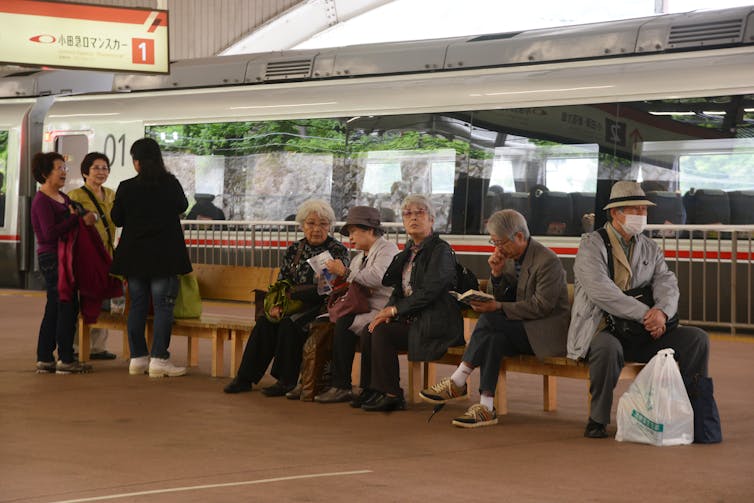
In 2024, the youngest of Japan’s baby boomers will turn 75. The boomers are called the “bunched” generation in Japan because they were born in a short spurt in the late 1940s, in the aftermath of the end of the second world war.
The sheer size of this cohort has made it a lightning rod for many of the thorny social and economic debates in Japan today. Japanese boomers are variously criticised for generational wealth disparity, national debt, and even the environmental crisis.
Historically, the boomers’ experience is very much the story of Japan’s postwar success. But were the boomers just lucky free-riders? And how have they shaped contemporary Japan?
The Children Of War Defeat
Japan was under US-led occupation and struggling with a tattered economy when the boomers were born. Millions of soldiers and settlers had flooded back from the colonies and battlefields. As the Japanese began to rebuild their nation, they also enthusiastically procreated. From 1947 to 1949, Japan recorded around 2.7 million births annually, with a fertility rate exceeding 4.3.
Never again would Japan witness such stunning fertility. Apart from a short-lived uptick in the 1970s, annual births have been declining precipitously.
In 2020, Japan recorded its lowest number of annual births at 840,835 with a fertility rate of just 1.33. This is not the lowest in Asia, but it is well beneath the replacement rate of 2.1.
The Protest Generation
Japan’s boomers were both the engines and beneficiaries of the country’s economic miracle of the 1950s to 1970s, when GDP growth regularly hit the double digits.
In an age when most youth finished education in their teens, the boomers provided labor for Japan’s heavy, chemical, automotive, and electronics industries. Many migrated to cities like Tokyo, taking up jobs in small factories and retail stores.
The small percentage of boomers lucky enough to enter universities in the 1960s became the flagbearers of youth protest. They rallied against Japan’s subservience to America and its involvement in the Vietnam War. They demanded universities lower fees and give students a greater voice.
Beyond protest, they fashioned new cultures in music and art. Indeed, they were actors in the great theatre that was the “global 1960s”.
As student protest descended into violence in 1970s Japan, public opinion turned against the young boomers. A handful embraced murderous left-wing terrorism, but the majority chose the safety of corporate Japan.
Boomers Fashion Japan’s Economic Miracle
In 1975, the youngest of Japan’s boomers were in their mid-20s. Japan was recovering from a massive hike in oil prices in 1973 and would face another petroleum shock in 1979.
It was the hardworking boomers who sustained Japan through these troubled economic times. In an age of rigidly defined gender roles, boomer men became Japan’s corporate and industrial warriors, while boomer women raised children and cared for elderly parents. Accordingly, they orchestrated Japan’s second – and last – postwar baby boom in the 1970s.
When Japan emerged as an economic superpower in the 1980s, it was the boomers who reaped the rewards. Although not all benefitted equally, Japanese baby boomers, now in their 30s, enjoyed relatively secure employment, a thriving economy, and superior standards of living.
At the same time, as the economy surged, the boomers faced financial pressures in housing and education. Some even worked themselves to death inside Japan’s pressure-cooker corporations.
Nonetheless, things were good for the boomers during Japan’s “bubble” economy of the 1980s. By the end of the decade, the youngest were in their 40s. As mid-career workers, they could both save and spend – something later generations would only dream of.
Intergenerational Tensions In Recessionary Japan
Just as the boomers were moving into the middle echelons of society, Japan’s economic miracle ended abruptly. What followed from the 1990s onwards has been called Japan’s “lost decades”, an “ice age” of employment, and an era of youth uncertainty and despair.
The boomers, however, survived largely unscathed. Thanks to an employment system that protected senior workers, most (although not all) of the boomers retained their jobs while their children struggled to find even casual work. Many boomers also had savings to fall back on.
But in recessionary Japan, the now-ageing boomers raised thorny issues for the country. As a healthy, long-lived, and very large cohort, their approaching retirement in the 2000s threatened the viability of Japan’s already-strained pension and health schemes. Youth born in a post-bubble Japan are faced with carrying this burden.
Not surprisingly, intergenerational tensions have arisen. For the boomers, it is easy to label youth as lazy and lacking perseverance. For the young, boomers were simply lucky to be born in an era of growth. And, to make matters worse, now the young must support the boomers in retirement.
Ageing Boomers In The Oldest Society
Given the electoral clout of the boomers, politicians are treading carefully around solutions involving redistribution from the old to the young. Ultimately, intergenerational blaming is not the solution.
Japan’s baby boomers were born into a nation rising, but they also helped to fashion that success. Youth can draw on the boomers’ journey from the ashes of defeat to stunning affluence. But the boomers must also recognise how their generation has contributed to the demographic and socioeconomic challenges facing Japan today.
As the world’s oldest society continues to age, intergenerational empathy from the boomers is now more important than ever.![]()
Simon Avenell, Professor in Modern Japanese History, Australian National University
This article is republished from The Conversation under a Creative Commons license. Read the original article.
It sounds like science fiction. But we can now sample water to find the DNA of every species living there

Figuring out what species live in an ecosystem, and which ones are rare or just good at hiding is an essential way to understand and care for them. Until now, it’s been very labour intensive.
But now we can do it differently. Take a sample from the ocean and match tiny traces of DNA in the water with the species living there.
It’s not science fiction – it’s environmental DNA sampling. This approach opens the door to rapid, broad detection of species. You can find if pest species have arrived, tell if a hard-to-find endangered species is still hanging on, and gauge ecosystem health.
Because eDNA testing is still new, there are questions about its strengths and weaknesses and how it can best be used. For instance, we can tell if extremely rare freshwater sawfish are present in a Northern Territory river – but not how many individual fish there are.
Today CSIRO released a roadmap created through consultation with many experts to show how eDNA technologies can be best integrated into marine monitoring at a large scale – and what the future holds.
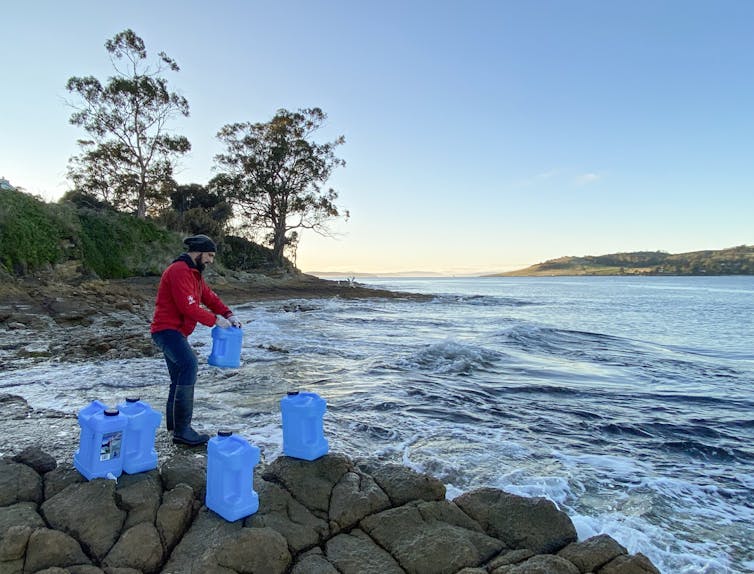
How Does EDNA Sampling Work?
Deoxyribonucleic acid (DNA) is a very special molecule. It acts as the code for all life on Earth, holding the cellular instructions to make everything from a beetle to a human. Because DNA is unique to each species, it’s like a product barcode in a supermarket.
As animals and plants live their lives, they shed fragments of their DNA into their environment through dead skin, hair, saliva, scat, leaves or pollen. These traces make up environmental DNA. There’s enough DNA in water and even air to tell species apart.
The real power of eDNA sampling is how broad a net it casts. With one sample, we can detect anything living, from bacteria to whales, and in potentially every environment with life, from the deep sea to underground caves.
Importantly, this method lets scientists detect species even if we can’t see or capture them. This comes in handy when working with rare or very small species, or when working in environments such as murky water where it is impossible to see or catch them. It will, for example, make it easier to study critically endangered pipefish in estuaries.
To date, much eDNA research has focused on detecting species in water, because it’s relatively easy to collect, concentrate and extract eDNA from liquids. But we now know we can produce species lists based on the eDNA in soil, scat, honey, or even the air.
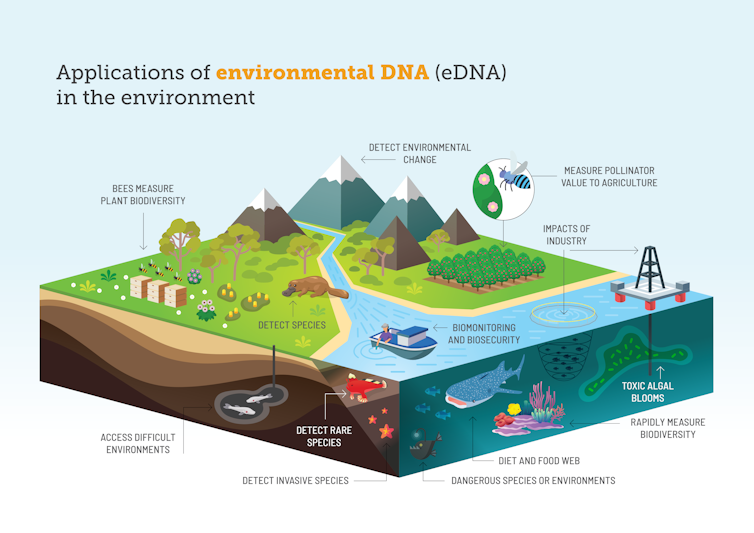
How Do Scientists Actually Measure EDNA?
Typically, you collect samples, perform molecular analysis and interpret results.
Collect samples: Scientists collect a sample from the environment. This can be water, soil, or virtually any environmental substrate which might contain eDNA. We then process the sample to concentrate and stabilise the DNA. You might collect two litres of water with a bucket, filter it and then freeze or chemically stabilise the eDNA coating the filter.
Molecular analysis: The first step in the lab is to purify DNA from a sample. The next step depends on your goal. If you want to detect a single species, you would generally use a technique called quantitative polymerase chain reaction (qPCR), similar to how you test for COVID.
But to detect whole communities of species, you have to use high-throughput DNA sequencing. Where detecting a single species with eDNA takes only a few days days, completing the labwork for species communities can take weeks to months. At the end, you arrive at a long list of thousands or even millions of DNA barcode sequences.
Interpreting results: Single species interpretation is simple. Was DNA from your species of interest present or not? But when the goal is to identify multiple species, scientists use DNA reference libraries to link the DNA barcodes detected in the sample back to individual species.
This works well – but only if we already have the species listed in these libraries. If not, you can’t detect it with eDNA methods. That means eDNA can’t be used to detect new species or those only known from photos and videos.
Why Does EDNA Matter? Look At Marine Parks
Australia boasts one of the world’s largest and most biodiverse networks of marine parks. But as ocean life reels from climate change, overfishing and plastic pollution, it’s certain the oceans of the future will look very different to that of today.
Gauging impact to support evidence-based decisions across such a vast, diverse and remote area poses challenges difficult to solve with standard hands-on survey methods like like diving, video or trawling.
That’s where eDNA methods can help, offering a powerful, non-destructive, cost-effective and quick form of monitoring that can complement other techniques.
eDNA means we can fine-tune monitoring for specific purposes, such as detecting pests, endangered, or dangerous species.
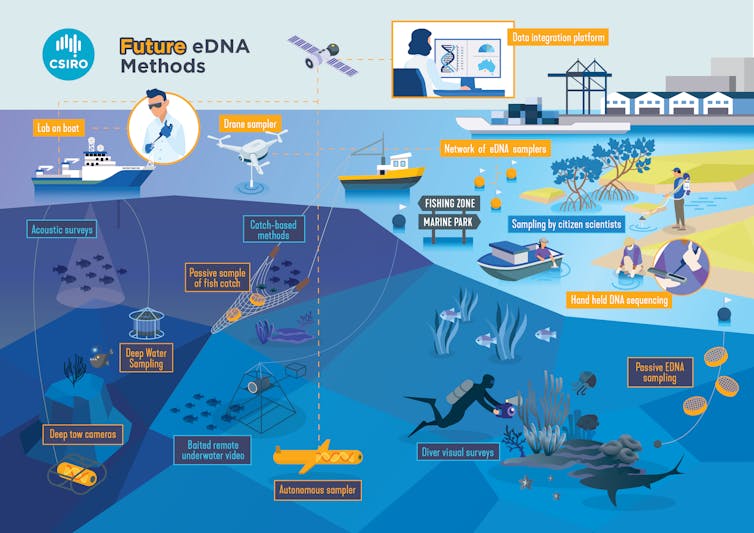
This is just the start. Imagine a future where eDNA data could be collected from the most remote oceans by autonomous vehicles, analysed by the drone or on board a research vessel, and integrated with other monitoring data so marine managers and the public can see near-real time data about the condition of the ocean.
Science fiction? Not any more. ![]()
Maarten De Brauwer, Research fellow, CSIRO and Oliver Berry, Leader, Environomics Future Science Platform, CSIRO
This article is republished from The Conversation under a Creative Commons license. Read the original article.
Music painted on the wall of a Venetian orphanage will be heard again nearly 250 years later

Imagine Lady Gaga or Elton John teaching at an orphanage or homeless shelter, offering daily music lessons.
That’s what took place at Venice’s four Ospedali Grandi, which were charitable institutions that took in the needy – including orphaned and foundling girls – from the 16th century to the turn of the 19th century. Remarkably, all four Ospedali hired some of the greatest musicians and composers of the time, such as Antonio Vivaldi and Nicola Porpora, to provide the young women – known as the “putte” – with a superb music education.
In the summer of 2019, while in Venice on a research trip, I had the opportunity to visit the Ospedale di Santa Maria dei Derelitti, more commonly known as the Ospedaletto, or “Little Hospital,” because it was the smallest of the four Ospedali Grandi.
As a musicologist specializing in the music of early modern Venice, I was especially excited to visit one of the hidden gems of the city: the Ospedaletto’s music room, which was built in the mid-1770s.
I had heard about its beauty and perfect acoustics. So when a colleague and friend, classical singer Liesl Odenweller, suggested we go together, I was delighted. I also secretly hoped Liesl would feel inclined to sing in the space, so I could experience the pure acoustics of the room.
Little did I know that I would encounter music that hasn’t been performed in nearly 250 years.
Clues On The Walls
As we entered the stunning music room, I was immediately struck by its elegance and relatively small size. In my mind, I had envisioned a large concert hall; instead, the space is intimate, ellipse-shaped and richly decorated.
Overshadowed by the more prominent Ospedale della Pietà, not much is known about the music-making that took place for centuries behind the walls of the Ospedaletto. But one of the greatest clues to its venerable history as a music school is literally on one of its walls.

A fresco on the far wall of the room, painted in 1776-77 by Jacopo Guarana, depicts a group of female musicians – likely portraits of some of the putte – at the feet of Apollo, the Greek god of music. Some of them play string instruments; one, gazing toward the viewer, holds a page of sheet music.
Call it a professional quirk, but when I see a music score depicted in a painting, I have to get up close and try to read it. In this case, I was lucky: The music notation was quite legible, and the composer’s name was inscribed in the upper-right corner: “Sig. Anfossi.”

I took several photos of the fresco. I wanted to learn as much as I could about that piece of music painted on the wall.
The sound of Liesl’s singing snapped me out of my music detective mode. As I had hoped, her beautiful soprano voice filled the space with a tone so pure that it sounded almost ethereal. I turned around, but my friend was no longer in the room. Where was her singing coming from?
Liesl, it turns out, was perched in the singing gallery. With the permission of a clerk, she had climbed up to this partially hidden loft and was singing through a grille. It was here that the putte of the Ospedaletto performed in public concerts, their features partially obscured from the prying glances of the male listeners below.

Women Rally Behind Their Beloved Institution
Armed with those clues on the wall, I continued my research in the days following the visit to the Ospedaletto. I learned that the music by “Signor Anfossi” shown in the fresco was drawn from the opera “Antigono,” composed by Pasquale Anfossi (1727-97) on a libretto by Pietro Metastasio. The work premiered in Venice at the Teatro San Benedetto in 1773.
The text of the solo song – known in opera as an aria – is legible in the excerpt on the wall. It reads, “Contro il destin che freme, combatteremo insieme” – “Against quivering destiny, we shall battle together.”
Like many works from the 17th and 18th centuries, the entire opera is lost. I was determined to find out, however, if that particular aria had survived. Sometimes, the “hit tunes” of an opera were copied or printed separately and performed as “arie staccate” – arias that were “detached” from the rest of the work.
Luck was on my side: To my delight, I found a copy of the aria in a library in Montecassino, a small town southeast of Rome. Why was that particular excerpt chosen to be displayed so prominently on the wall?
Like other institutions in Venice, the Ospedaletto faced financial hardship in the 1770s. Evidence suggests that the putte of the Ospedaletto were likely involved in raising the funds for the decoration of the music room. The new hall enabled them to give performances for special guests and benefactors, which brought in substantial donations. Together with Pasquale Anfossi, who was their music teacher from 1773 to 1777, they rallied behind their beloved institution, saving it – at least temporarily – from financial destitution.

“Against quivering destiny, we shall battle together” may well have served as a rallying cry for the putte of the Ospedaletto, who literally “battled together” to preserve their splendid music conservatory.
Incidentally, the putte may also have wanted to honor their teacher, as Pasquale Anfossi, too, is portrayed in Guarana’s fresco, directly behind the young woman holding up his music.
From Wall To Concert Hall
One of the aspects I find most rewarding about the study of older music is the process of discovering a work that has been neglected and unheard for hundreds of years and bringing it back to modern audiences.
Inspired by the Ospedaletto’s music room, Liesl Odenweller and I have embarked on a collaborative project that brings back not only the aria on the wall but also other music from the institution that has gone unheard for centuries. Thanks to a generous grant from the Gladys Krieble Delmas Foundation, the Venice Music Project – the ensemble Liesl co-founded in 2013 – will perform this music in a concert in Venice on Dec. 2, 2023.
Our program will include “Contro il destin” as well as other excerpts from “Antigono” – essentially, all that survives from that opera. In addition, we will include works by Tommaso Traetta (1727-79) and Antonio Sacchini (1730-86) who, like Anfossi, taught the young women, in some cases launching their international music careers.
Because the music of the past was written in a notation that’s different from that used today, it’s necessary to translate and input every mark of the original score – notes, dynamics and other expressive marks – into a music notation software to produce a modern score that can be easily read by today’s musicians.
By performing on period instruments and using a historically informed approach, the musicians of the Venice Music Project and I are excited to revive this remarkably beautiful and meaningful music. Its neglect is certainly not a reflection of its artistic quality but rather likely the result of other composers, such as Vivaldi and Mozart, taking over the spotlight and overshadowing the works of other masters.
This music deserves to be heard – as does the story of the young women of the Ospedaletto.![]()
Marica S. Tacconi, Distinguished Professor of Musicology and Art History, Penn State
This article is republished from The Conversation under a Creative Commons license. Read the original article.
Did this chemical reaction create the building blocks of life on Earth?

How did life begin? How did chemical reactions on the early Earth create complex, self-replicating structures that developed into living things as we know them?
According to one school of thought, before the current era of DNA-based life, there was a kind of molecule called RNA (or ribonucleic acid). RNA – which is still a crucial component of life today – can replicate itself and catalyse other chemical reactions.
But RNA molecules themselves are made from smaller components called ribonucleotides. How would these building blocks have formed on the early Earth, and then combined into RNA?
Chemists like me are trying to recreate the chain of reactions required to form RNA at the dawn of life, but it’s a challenging task. We know whatever chemical reaction created ribonucleotides must have been able to happen in the messy, complicated environment found on our planet billions of years ago.
I have been studying whether “autocatalytic” reactions may have played a part. These are reactions that produce chemicals that encourage the same reaction to happen again, which means they can sustain themselves in a wide range of circumstances.
In our latest work, my colleagues and I have integrated autocatalysis into a well-known chemical pathway for producing the ribonucleotide building blocks, which could have plausibly happened with the simple molecules and complex conditions found on the early Earth.
The Formose Reaction
Autocatalytic reactions play crucial roles in biology, from regulating our heartbeats to forming patterns on seashells. In fact, the replication of life itself, where one cell takes in nutrients and energy from the environment to produce two cells, is a particularly complicated example of autocatalysis.
A chemical reaction called the formose reaction, first discovered in 1861, is one of the best examples of an autocatalytic reaction that could have happened on the early Earth.

In essence, the formose reaction starts with one molecule of a simple compound called glycolaldehyde (made of hydrogen, carbon and oxygen) and ends with two. The mechanism relies on a constant supply of another simple compound called formaldehyde.
A reaction between glycolaldehyde and formaldehyde makes a bigger molecule, splitting off fragments that feed back into the reaction and keep it going. However, once the formaldehyde runs out, the reaction stops, and the products start to degrade from complex sugar molecules into tar.
The formose reaction shares some common ingredients with a well-known chemical pathway to make ribonucleotides, known as the Powner–Sutherland pathway. However, until now no one has tried to connect the two – with good reason.
The formose reaction is notorious for being “unselective”. This means it produces a lot of useless molecules alongside the actual products you want.
An Autocatalytic Twist In The Pathway To Ribonucleotides
In our study, we tried adding another simple molecule called cyanamide to the formose reaction. This makes it possible for some of the molecules made during the reaction to be “siphoned off” to produce ribonucleotides.
The reaction still does not produce a large quantity of ribonucleotide building blocks. However, the ones it does produce are more stable and less likely to degrade.
What’s interesting about our study is the integration of the formose reaction and ribonucleotide production. Previous investigations have studied each separately, which reflects how chemists usually think about making molecules.

Generally speaking, chemists tend to avoid complexity so as to maximise the quantity and purity of a product. However, this reductionist approach can prevent us from investigating dynamic interactions between different chemical pathways.
These interactions, which happen everywhere in the real world outside the lab, are arguably the bridge between chemistry and biology.
Industrial Applications
Autocatalysis also has industrial applications. When you add cyanamide to the formose reaction, another of the products is a compound called 2-aminooxazole, which is used in chemistry research and the production of many pharmaceuticals.
Conventional 2-aminooxazole production often uses cyanamide and glycolaldehyde, the latter of which is expensive. If it can be made using the formose reaction, only a small amount of glycolaldehyde will be needed to kickstart the reaction, cutting costs.
Our lab is currently optimising this procedure in the hope we can manipulate the autocatalytic reaction to make common chemical reactions cheaper and more efficient, and their pharmaceutical products more accessible. Maybe it won’t be as big a deal as the creation of life itself, but we think it could still be worthwhile.![]()
Quoc Phuong Tran, PhD Candidate in Prebiotic Chemistry, UNSW Sydney
This article is republished from The Conversation under a Creative Commons license. Read the original article.
How social media is breathing new life into Bhutan’s unwritten local languages

Dechen, 40, grew up in Thimphu, the capital city of Bhutan. Her native language was Mangdip, also known as Nyenkha, as her parents are originally from central Bhutan. She went to schools in the city, where the curriculum was predominantly taught in Dzongkha, the national language, and English.
In Dechen’s house, everyone spoke Dzongkha. She only spoke her mother tongue when she had guests from her village, who could not understand Dzongkha and during her occasional visits to her village nestled in the mountains. Her mother tongue knowledge was limited.
However, things have now changed.
With 90% of Bhutanese people using social media and social media penetrating all remotes areas in Bhutan, Dechen’s relatives in remote villages are connected on WeChat.
She is in three WeChat groups where people usually communicate through voice messages in their native language. Most WeChat users in rural parts of the country communicate in their oral native language.
“I learn many words. I learnt how to say a lot of things in my own language,” the mother of two now living in Western Australia told me.
Dechen’s story is not isolated. Social media is giving a new lifeline to Bhutan’s native languages, which do not have written script and lack proper documentation. By communicating through voice messages, social media is giving Bhutanese people in both urban and rural areas a new opportunity to use their local language.
Losing Bhutan’s Languages
Bhutan is a tiny Himalayan nation with a population of under 800,000 people. Internet and television was introduced only in 1999 and mobile phones in 2004.
The country has more than 20 local languages, but only Dzongkha has written text and is promoted as the national language.
The country struggles to promote the national language and its usage against English. Today most urban residents, especially the elites, speak English as their primary language.

Many languages – especially minority languages – are vanishing or becoming endangered as younger generations switch to Dzongkha and English.
The medium of instruction in schools is mostly in English; Dzongkha is taught only as grammar and literature. Students are shamed and often punished for using their local languages.
The preservation and promotion of local languages, therefore, depends on the speakers. A language faces extinction when its speakers die out or switch to another language.
Linguist Pema Wangdi has researched languages in Bhutan, and he told me many people are losing their native language.
“When we lose our language, we lose a piece of our national identity,” he told me.

Wangdi has identified there are no longer any speakers of Olekha, an indigenous dialect of Rukha in Wangdu Phodrang.
“The loss of a single language is a loss of a piece of our national linguistic heritage and identity,” he said. “When a language is lost, cultural traditions which are tied to that language such as songs, myths and poetry will be lost forever.”
Other Bhutanese languages – including Tshophu language of Doyaps in Samtse, Monpa language of central Bhutan, and Gongdukha of Mongar – are endangered and at the brink of extinction.
Preservation Of Local Languages
The future of the minority languages are at threat. The Constitution of Bhutan mandates the preservation and promotion of local languages, but there are no official efforts to preserve native languages.
But encouraging people to speak their native languages can have far reaching benefits in preserving and promoting Bhutan’s rich culture and tradition. Language embodies identity, ethnicity and cultural values: a thriving local language would help transfer this intangible wealth to the younger generation.
Social media could be an invaluable tool in this preservation.
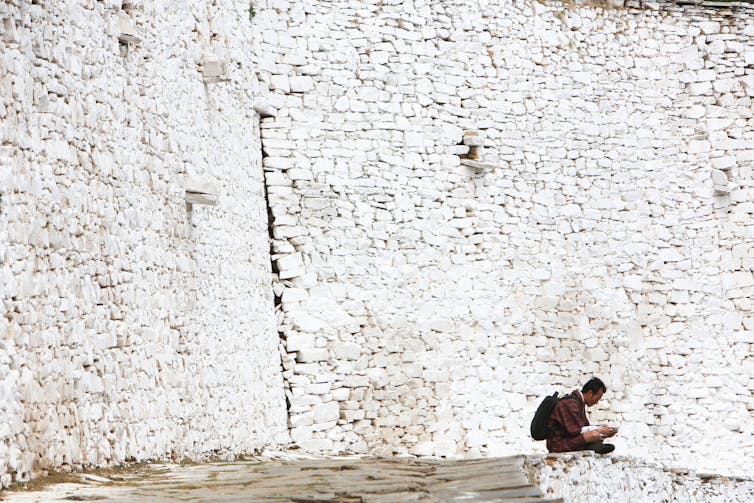
Bhutan could save its languages from becoming extinct with promotion of social media usages and language education could be done on the social media platforms. With both young and old people glued to social media, encouraging more people to use local languages in social media could generate interest among the youth to learn their local languages.
It could also help in documenting the endangered local languages as the older generation can record their voices on WeChat.
Many elder citizens feel strongly about their language and emphasise teaching their mother tongue to the younger generation and their grandchildren. Social media – joining the younger generation on platforms where they feel at home – could be the way forward.![]()
Tashi Dema, PhD Candidate in Language and Politics, University of New England
This article is republished from The Conversation under a Creative Commons license. Read the original article.
Lifesavers Issue Schoolies Safety Message
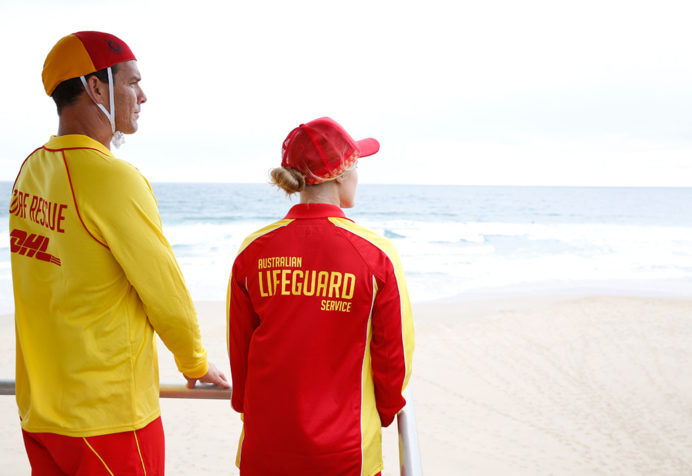 With Schoolies celebrations set to officially kick off on Saturday 18 November, surf lifesavers are reminding potential revellers that alcohol, drugs, and the ocean do not mix.
With Schoolies celebrations set to officially kick off on Saturday 18 November, surf lifesavers are reminding potential revellers that alcohol, drugs, and the ocean do not mix.- Only swim at a patrolled beach, between the red and yellow flags
- Don’t swim under the influence of alcohol or drugs
- Never swim at night
- Ask a surf lifesaver or lifeguard for advice
- Look after your mates, and know where your group is while in the water
- Call triple-zero (000) to report an in-water emergency
Traineeship Opportunities: Work & Learn Locally With Council Or Hundreds Of Other Local Businesses
Now that the school year is drawing to a close, and not everyone wants to go to university ever, or even straight away, it's time to look around and think about what you may want to do next.
Local Traineeships are a great way to continue your Lifelong Learning and are often advertised on platforms like Seek - including those currently available and listed at: www.seek.com.au/traineeship-jobs/in-North-Shore-&-Northern-Beaches-Sydney-NSW
The great aspect of working and learning locally is you are not going to spend up to a day each commuting to and from a place of work; wouldn't you rather have that time going for a swim each morning or afternoon? and it's a lot cheaper than having to swap buses or find funds for a car and running it.
TAFE NSW is working with councils across the state to train administrative staff, upskilling their knowledge of business practices and helping to deliver important services and facilities to local communities.
 At Temora Shire Council, trainees Jake Schulz and Karis Reardon are working in different areas of the council, learning important skills on the job, and gaining formal qualifications through their studies at TAFE NSW.
At Temora Shire Council, trainees Jake Schulz and Karis Reardon are working in different areas of the council, learning important skills on the job, and gaining formal qualifications through their studies at TAFE NSW.
Jake, 19, is studying a Certificate III in Business Administration while working in a customer service role with council’s Pinnacle Community Services team, helping to streamline hands-on services to care for the aged.
“It’s very fulfilling because I’m working closely as a frontline contact person with the elderly and helping them can make their day,” he said.
“The traineeship is a perfect way to gain knowledge on the job and through TAFE NSW, and I’ve learned so much – both in skills for work and life.”
Karis, also 19, is working with the council’s customer service team and says her traineeship is a great blend of learning practical and academic skills while being paid to work in her home town.
“I’m getting great experience in customer service, balanced with other administrative skills and getting Certificate III qualifications with TAFE NSW will help with lots of opportunities in the future,” she said.
TAFE NSW Head Teacher of Business Services, Daphne Tyndall said the traineeship program was an example of how vocational education helps communities, employers and workers.
“By working with councils, we’re helping to meet those important skills needs in local government and at the same time, ensuring participants can get the formal qualifications needed to progress their careers while they’re earning and learning on the job,” she said.
“Council has always offered annual traineeships which includes supporting our trainees with paid time they need to attend class and complete assessments,” said General Manager Ms Melissa Boxall.
“We’ve found it a successful way to retain staff both in Council and locally, in an environment where we often lose our young people to regional and bigger cities for further studies and career opportunities. We also notice that they are more likely to return to our Shire with further qualifications if they’ve started their career here, we have a number of returnee staff.”
“We’d recommend any business taking a similar approach and are happy to guide them through the process,” concluded Ms Boxall.
Karis and Jake, who are both using their traineeships to earn money in a gap year before attending university, have thanked the council and TAFE NSW for the opportunity to earn and learn, saying the skills they’re learning now will help set them up for exciting careers.
Local Council Opportunities
In June 2023 the local council accepted the tender of Novaskill for a Provision of an Apprenticeship and Traineeship Program. The Contract Commencement Date is 3 November 2023, allowing a duration of Contract for 2 years with 3 further 12-month options to extend.
The program is designed to allow engagement of a Group Training Organisation to employ up to 25 apprentices and trainees per year and deliver the program management.
This week a full-time Early Childhood Traineeship - Northern Beaches Council based at Brookvale has been advertised.
Novaskill has partnered with Northern Beaches Council to offer multiple Early Childcare Traineeship opportunities including on-the-job training with ongoing mentoring and support to help you achieve your career goals and unleash your true potential.
You'll complete a Certificate III Early Childhood Education over 18 months through a combination of formal training with a Registered Training Organisation and practical on-the-job experience at one of Northern Beaches Council’s childcare centres.
Council's webpage on their opportunities for Traineeships / Apprenticeships states:
Kick-start your career with a traineeship / apprenticeship at Northern Beaches Council.
We offer experiences in Childcare, Property, Finance, Youth & Community Development, Bushcare & Biodiversity, Traffic & Transport, Information Technology, Library Services and more.
Trainee and Apprenticeship roles are advertised throughout the year through our partner; Novaskill. Below are some of our regular opportunities:
- Civil Construction Apprenticeship
- Early Childhood Educator Traineeship
- Customer Service Officer Traineeship
Please refer to the Novaskill vacancies site for a full list of opportunities currently on offer.
Work Experience
Council has a wide a variety of jobs where you can gain experience whether you are from a school, university, TAFE or private organisations. We run this pre-Christmas so if you have something in mind you'd like to find out more about for 2024, and try out through a hands-on work experience week, you can ask what opportunities there are and get organised.
How to apply for work experience with the council
Send a short application to council@northernbeaches.nsw.gov.au marked 'Work Experience' and include:
- Start date and length of the program you’re proposing
- Area of Council where you’d like to be placed eg marketing, child care, engineering, customer service, finance, carpentry, property management etc
- Insurance documents
- If you’re a student, include the name of your school or university, who will provide insurance documents. If you’re not a student, please arrange your own insurance cover.
Find out more
You’ll probably have questions about how to take advantage of these entry level employment opportunities with Northern Beaches Council.
Please call their Human Resources Team on 1300 434 434 to establish your next steps.
TAFE Digital Helps San Remo Mum Of Six Pursue Dream Career In Conservation: Online Study Options In Every Industry/Interest
If you have already commenced work or not worked for a while and be wondering how to get into the field you really want to pursue even if you have started off down another track, it's worth knowing TAFE NSW has a system set up to support just that.
One example we'd share is how TAFE Digital is arming a Central Coast mum-of-six with the skills and experience to pursue her passion and join the booming conservation industry.
Laurie Salt, 39, has children ranging in age from two to 21 and has faced a barrage of operations for both cervical and colon cancer in recent years.
But she hasn’t let her challenges distract from her dream of working in conservation, this month completing her Certificate III in Conservation and Ecosystem Management at TAFE Digital.
TAFE Digital offers a wide range of nationally recognised, online study options, across a range of modern industries. You can study online and enjoy flexible learning to fit your lifestyle, with TAFE's online short courses, certificates, diplomas, and degrees. Visit: https://www.tafensw.edu.au/digital
 Laurie said with her two youngest children entering daycare from next year, she will finally be able to start her conservation career – aged 39.
Laurie said with her two youngest children entering daycare from next year, she will finally be able to start her conservation career – aged 39.
“I’ve been raising the kids all these years and this is finally my time for a career,” Ms Salt said. “I’ve always loved wildlife, plants and the outdoors, and I’m passionate about conservation and bush regeneration.”
She said studying with TAFE Digital allowed her to balance her course work with her busy lifestyle, completing assignments where and when it best suited her.
“I didn’t think I’d be able to do it but because of the way the course was structured and how supportive my teacher was, it just suited me,” Ms Salt said. “My teacher would respond almost immediately to any queries I had and explain things in a way I could understand.
“The work experience component was amazing too. I was able to go to a local property and spray weeds, replant plants, erect wooden nesting boxes and learn about soil science.”
It’s been a difficult road for the San Remo mum, who underwent two operations after discovering she had cervical cancer last Christmas, and facing more surgery in the coming months after doctors found cancerous polyps in her colon. Undeterred, she now plans to enrol in the Diploma of Conservation and Ecosystem Management in 2024 while working in the field.
TAFE Digital Conservation and Ecosystem Management teacher Abraham Mijares Urrutia, who has almost 40 years’ experience in the conservation field, said Ms Salt was part of a growing band of learners using the courses to secure work in the conservation field or work on their own environmental projects.
He said conservation was a growing industry, with a range of potential job outcomes for TAFE NSW graduates, including ranger, bush regenerator, forestry workers, biodiversity officer, catchment officer and Landcare coordinator.
“It really is an exciting time to enter the industry, especially with the growing awareness around global warming and climate change,” Mr Mijares Urrutia said.
Both the Certificate II, III and Diploma of Conservation and Ecosystem Management are being offered fee-free at TAFE NSW, subject to conditions.
Troye Sivan’s Rush Wins Big At The 2023 ARIA Awards
- International sensation Troye Sivan takes home the most ARIA Awards in 2023 with a total of four: Song of the Year Presented by YouTube, Best Solo Artist, Engineer – Best Engineered Release (Styalz Fuego), Producer – Best Produced Release presented by Neumann (Styalz Fuego)
- Genesis Owusu wins three ARIA Awards with Album of the Year, Best Hip Hop/Rap Release, Best Independent Release presented by PPCA.
- G Flip and Forest Claudette win two ARIA Awards
- Kylie Minogue wins Best Pop Release for Padam Padam
- Jet inducted into the Hall Of Fame
-ARIAs-9369.jpg?timestamp=1700095827843)
Celebrating 50 Years Of Hip Hop Live At The 2023 ARIA Awards
The LEGO Group Opens The World’s Largest LEGO® Store
Sydney, November 14, 2023:
The LEGO Group, in partnership with Alquemie Group, today unveiled the world’s largest LEGO® store.
Situated at Sydney Arcade, overlooking Pitt Street Mall in the heart of Sydney, the impressive 900sqm store spans two levels to create a new record for the largest LEGO store globally.
The landmark store includes the first LEGO Minifigure Factory in Australia, plus custom built large format brick features which draw inspiration from local icons and architecture, such as:
Sydney Harbour Bridge: with 549,378 bricks and taking 3,630 hours to build, this model draws inspiration from the 1920s and 30s when the original bridge was constructed. Signature features include iconic animals such as ‘Bridget’ one of the many white cats who used to live on the bridge during the 50s, ‘Jerry Chip Seagull’ and ‘Alf’ the native pink galah - in addition to ‘Erika’ the rope holder and ‘Johnny’ the worker reaching for a sneaky cupcake. Sydney Opera House Mosaic: including 303,719 bricks and taking 1,058 hours to build, with a special ‘mystery brick’ for brick fans to try and locate!
Rainbow Gum Tree: with 183,394 bricks and taking 1,271 hours to build, this incredible model stretches from the lower floor to second floor of the building and features all native Australian animals.
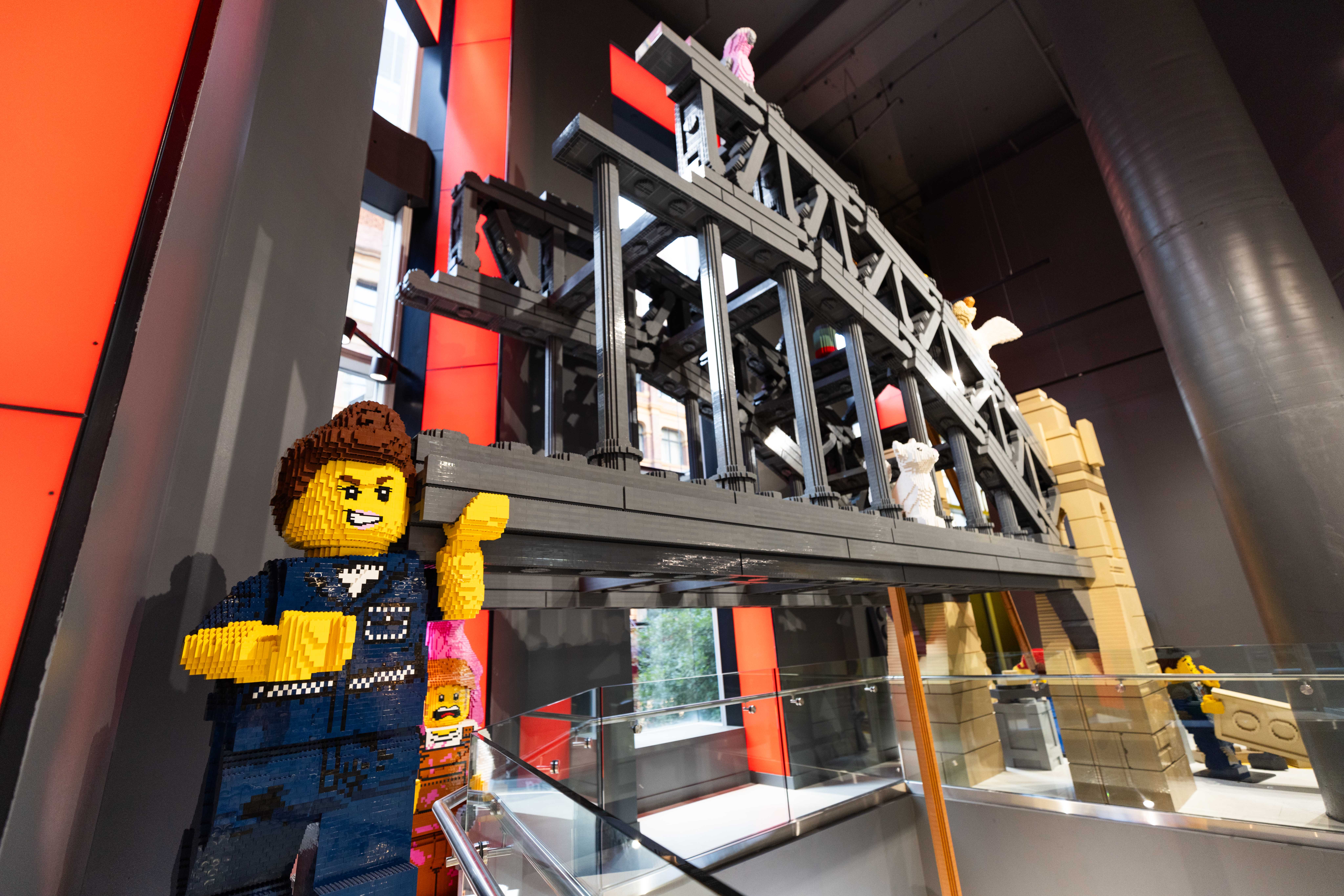

Troy Taylor, Vice President and General Manager, LEGO Australia and New Zealand comments: “It’s a great privilege to open the world’s largest LEGO Store in Sydney. “With immersive features, creative play experiences and playful nods to culture, Sydney's new store will give LEGO fans of all ages the chance to discover a wide range of LEGO products and exciting digital and physical experiences.
“We hope the new store contributes to the LEGO Group’s global mission of inspiring and developing the builders of tomorrow, whilst creating special memories for every fan who visits.”
Richard Facioni, Executive Chairman, Alquemie Group, adds: “This world class retail offering creates a new landmark for local families and LEGO fans from around the world. “We invite fans to step into a world beyond their imagination, including brick-built playful nods to Australian culture and inspiring, interactive experiences.”
The world’s largest LEGO Store also features leading LEGO retail experiences:
- Minifigure Factory: Customers can create and customise their own LEGO Minifigure and then watch it being printed in the store.
- Storytelling Table: LEGO fans can go behind-the-scenes of the LEGO design process with a new storytelling table including interactive areas that allow access ‘behind-the scenes’ through interviews and videos displayed on screens;
- Pick and Build Wall: an enormous signature brick experience where visitors select the exact LEGO brick elements required to create personalised builds;
- Hands-on play opportunities: including a LEGO play wall and free LEGO build challenges and in-store events every month;
- Brick Specialists: whether visitors are picking out a gift, looking for the latest set or bringing a LEGO fan in for a special treat, Brick Specialists can help find the perfect LEGO set.
The new LEGO Store Sydney is located at Sydney Arcade, overlooking Pitt Street Mall.
Photos supplied.
About the LEGO Group
At the LEGO Group, our mission is to inspire and develop the builders of tomorrow through the power of play. The LEGO System in Play, with our foundation in LEGO bricks, allows children and fans to build and rebuild anything they can imagine.
The LEGO Group was founded in Billund, Denmark in 1932 by Ole Kirk Kristiansen, its name derived from the two Danish words “LEg GOdt”, which means “Play Well”. Today, the LEGO Group remains a family-owned company headquartered in Billund. Our products are now sold in more than 130 countries worldwide.
For more news from the LEGO Group, information about our financial performance and responsibility engagement, please visit www.LEGO.com/aboutus.
About Alquemie Group
Alquemie Group is a retail and consumer investment platform managed by ACTA Capital. It's unique operating model leverages their collective expertise and shared services to accelerate the growth potential of its business and to create a leading portfolio of globally recognised brands. The Alquemie portfolio currently includes LEGO® Certified Stores, General Pants, National Geographic Wear (a partnership with the Walt Disney Company), Ginger & Smart, SurfStitch and Pumpkin Patch, with a pipeline of additional investments planned.
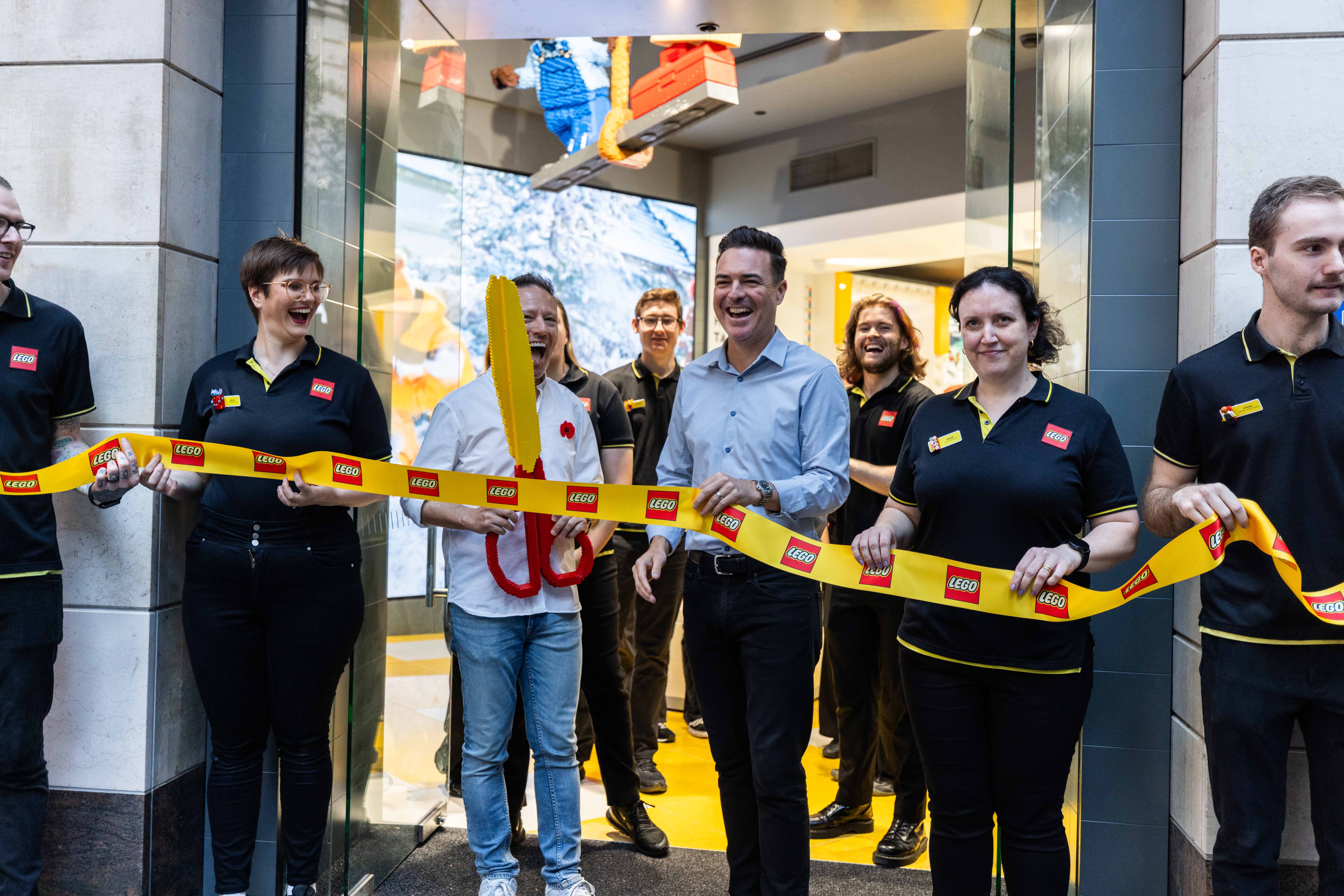

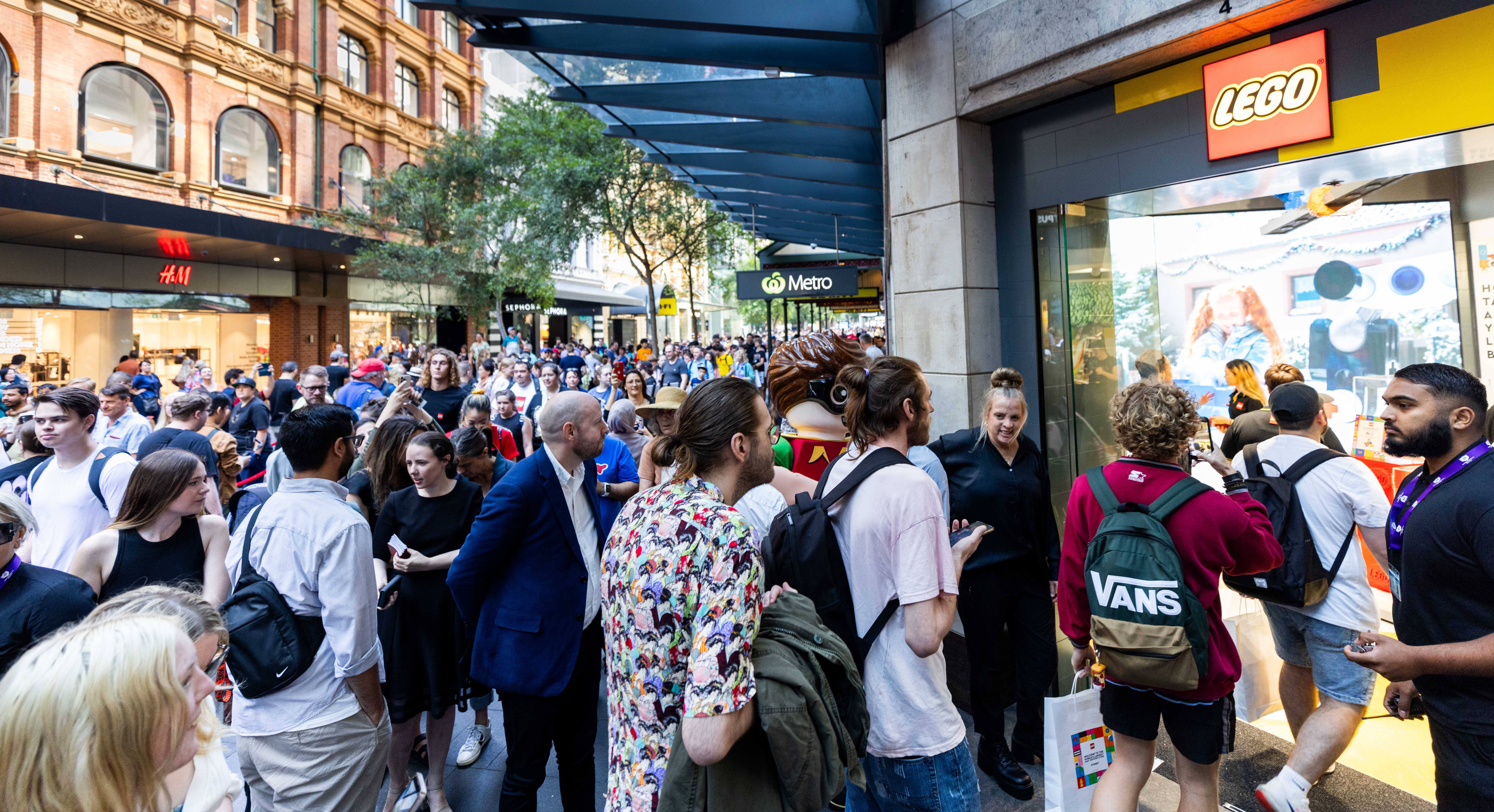
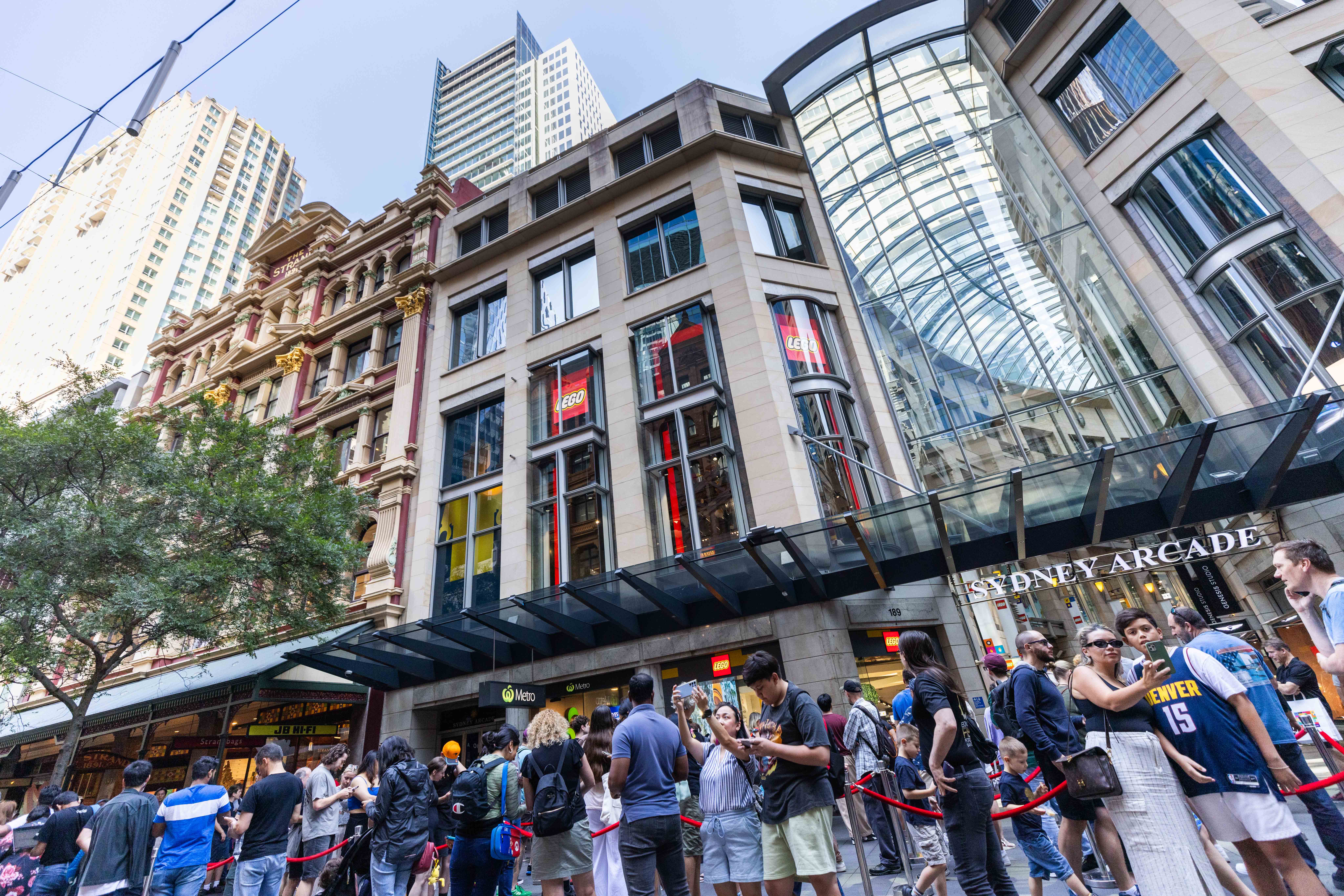


Australian Sailing On The Lookout For #NextGen Foiling Stars
November 14 2023
The fast paced and exciting world of foiling has started to make its mark on the world of Olympic Sailing.
The iQFOiL is set to make its debut as the equipment for the windsurfing class at the Paris Olympic Games, with Grae Morris having earned Australia a nation quota at the recent Allianz Sailing World Championships in The Hague.
The fledgling foiling board regularly attracts over 400 competitors at youth international competitions and over 200 in the open competitions.
Meanwhile the Wing Foil is fast becoming one of the most sought-after water sports across the globe and has started to make inroads on the racing scene.
Australian Sailing has a strategic objective to build depth in the women’s iQFOiL class and to start building a talent pool in the wing foil class. While speculative around Olympic class status for the wing, for Australia it also serves as a respectable foiling pathway class in terms of safety, performance, and cost.
In early 2024 Australian Sailing will be running our inaugural #NextGen Foil program, which will identify and assist sailors interested in transitioning to the foiling board classes. The program will be delivered in Brisbane in conjunction with the Queensland Academy of Sport.
We are on the lookout for female sailors who have an interest in developing their skills in the classes with a view on competing at the highest level in the future.
We are also after male sailors or current foilers who are interested in joining the wing program.
Prerequisites for the program are:
- 1. Commitment to the program
- 2. Skilled sailor and good racer
- 3. Risk taker and highflyer
- 4. Quick decision maker
- 5. Curious learner
The yearly program will be run by the QAS at the Royal Queensland Yacht Squadron with regular structured sessions throughout the year. Initial camps will be run in January 2024 as an initiation to foiling and the program, with the potential for regional camps aligned to other youth sailing initiatives.
High performing sailors throughout the program may have the opportunity to integrate into regular QAS training when an identified level of performance is achieved.
This is an exciting opportunity to fast track female foilers and male wing foilers into the performance pathway and enhance Australia’s coaching capability in the foiling board classes to support our medal prospects for 2028 and a home games in Brisbane in 2032.
Please compete the Expression of Interest form to begin our journey today: https://www.sailing.org.au/surveys/5238/

Focus: Australian Government Photographers
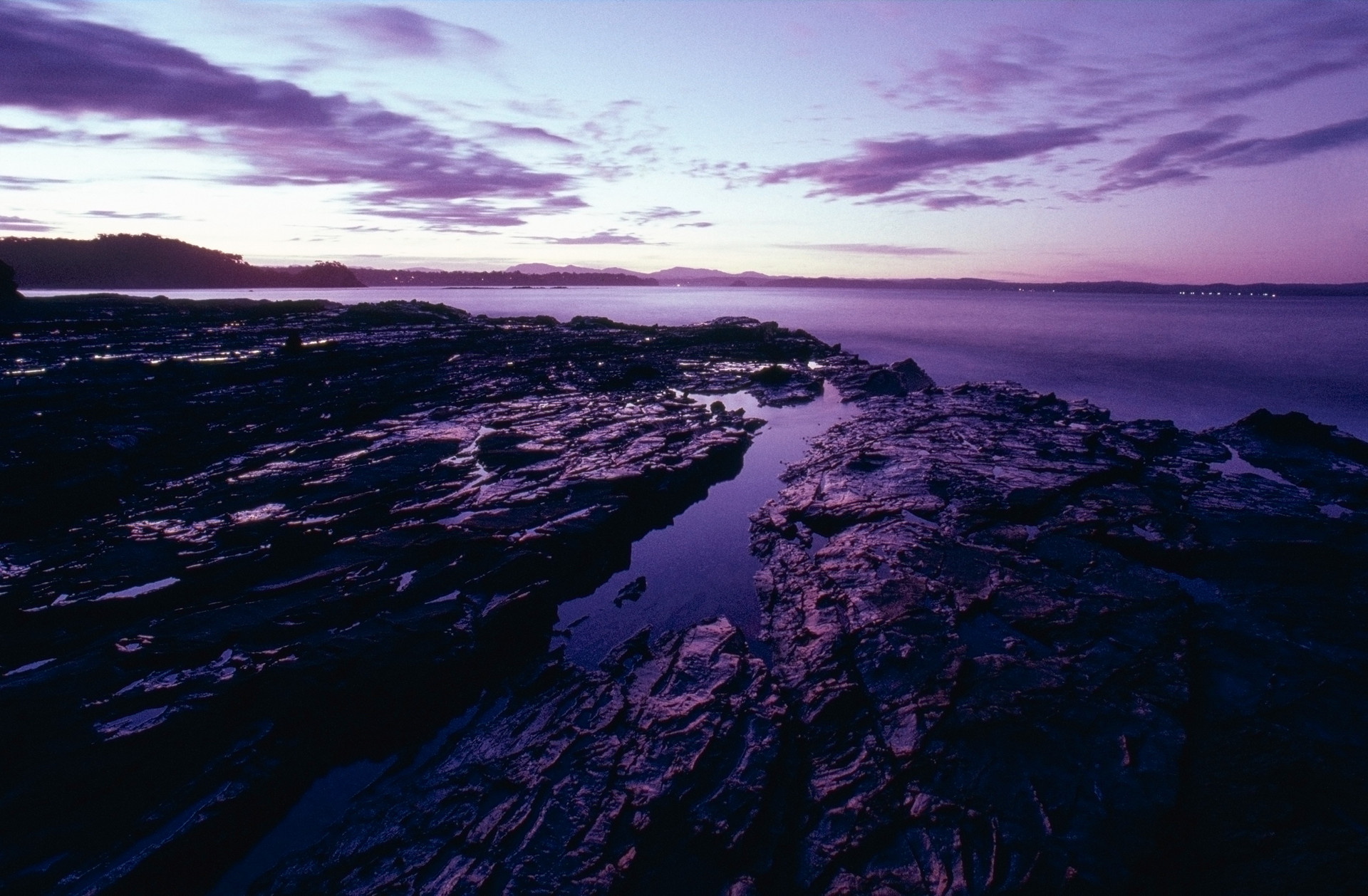
Manly Junior Class NSW - Round 1 Regatta
- Round 1 will be hosted by Royal Prince Alfred Yacht Club (RPAYC) on 25 & 26 November 2023.
- Round 2 will be hosted by Hornsby Ku-ring-gai Sailing Club (HKSC) on 10 & 11 February 2024.
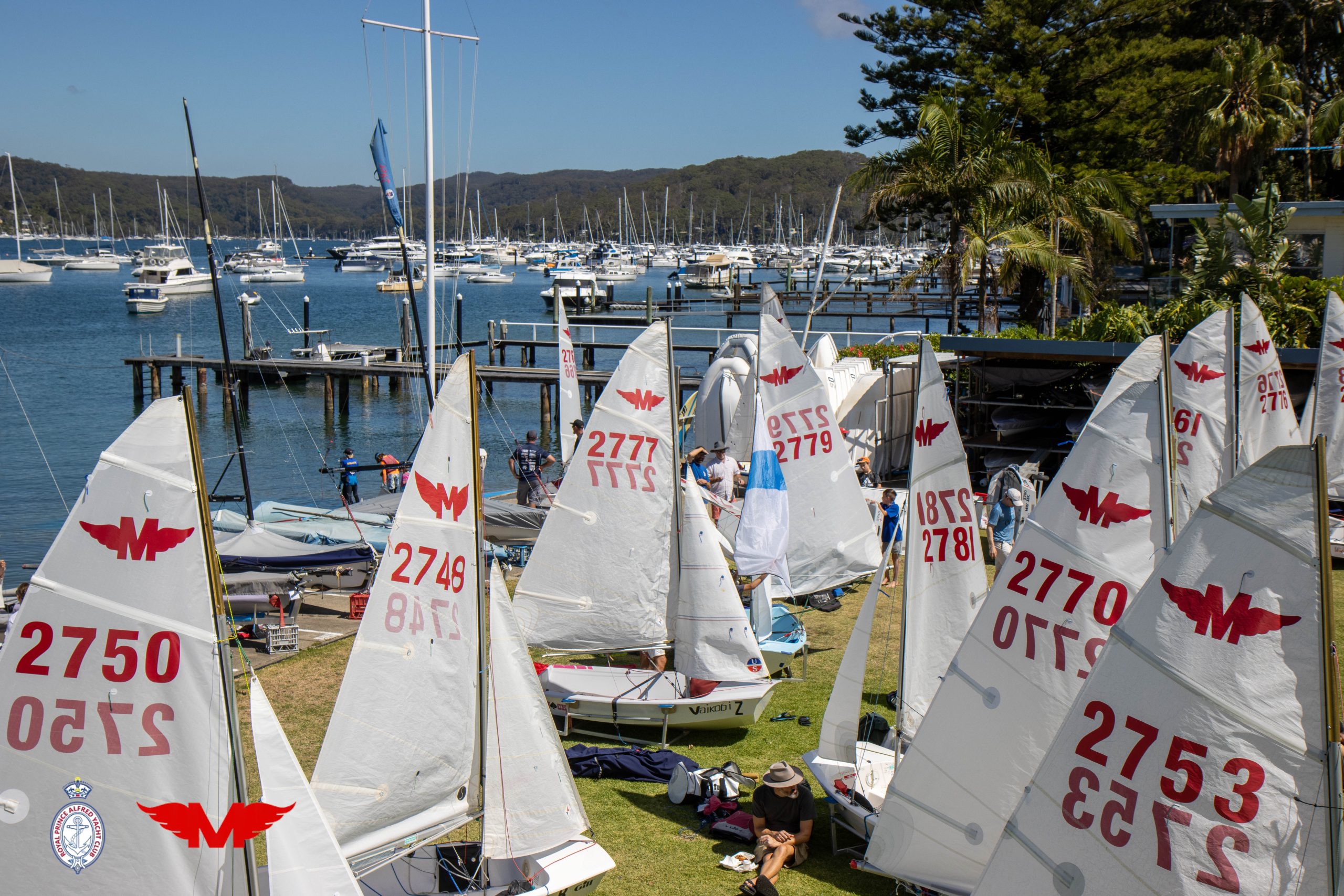
Will A New Aged Care Act Deliver?
Residential Aged Care Quality Indicators—Annual Report 2022–23
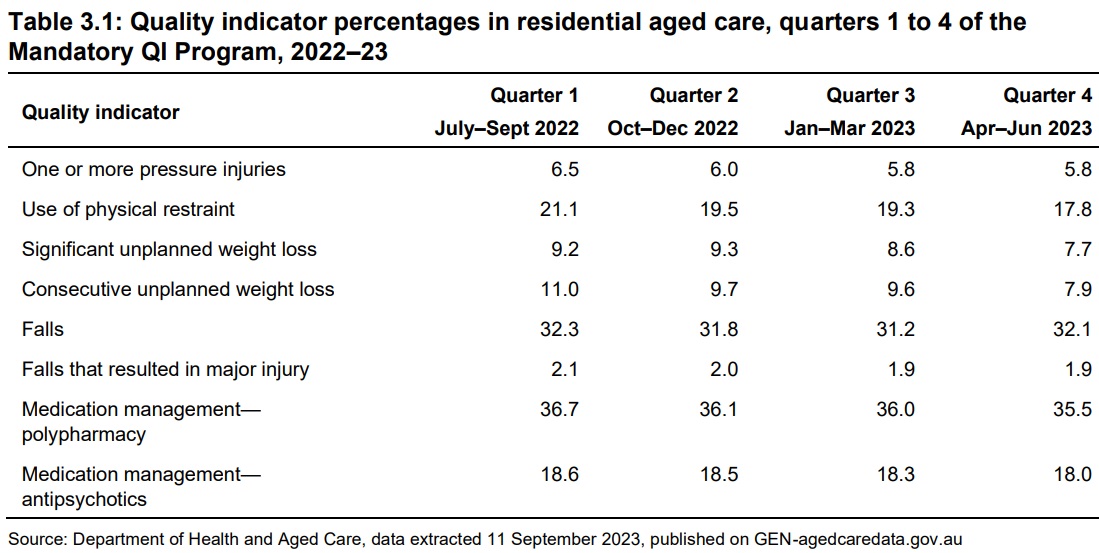
- physical restraints were at 21.1 per cent in Q1; in Q4 they were down to 17.8 per cent
- significant unplanned weight loss was at 9.2 per cent in Q1; Q4 7.7 per cent
- consecutive unplanned weight loss in Q1 11 per cent; Q4 a drop to 7.9 per cent
- residents prescribed multiple medications in Q1 36.7 per cent; Q4 35.5 per cent
- residents prescribed antipsychotics in Q1 18.6 per cent; by Q4 18 per cent
- residents who recorded a fall in Q1 32.3 per cent; Q4 32.1 per cent
- falls that resulted in major injury in Q1 2.1 per cent; Q4 1.9 per cent.
- activities of daily living
- incontinence care
- hospitalisations
- workforce
- consumer experience
- quality of life.
Legal Cannabis Too Risky A Proposition To Entertain: AMA
Thank You & Farewell To National Seniors Australia's Chief Advocate
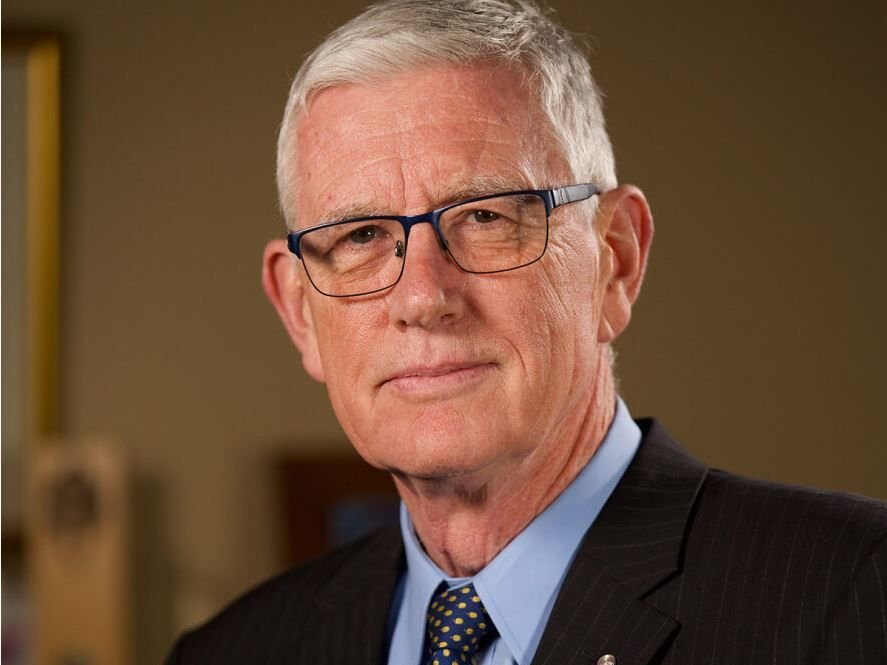
- Retaining the energy supplement for new Age Pension recipients
- Opposing the proposal to scrap franking credit cash refunds
- Securing a regulated price for electricity together with basic consumer protections
- Reducing the Pension Loans Scheme rate to 3.95% (now Home Equity Access Scheme) and making it available to everyone of pension age
- Retaining the pension age at 67 years-old instead of the proposed 70 years-old
- Reducing deeming rates for pensioners and other payment recipients
- Campaigning government to reduce the home care wait list by 25 percent in twelve months by releasing tens of thousands of home care packages
- Increasing the income test threshold for the Commonwealth Seniors Health Card to give more self-funded retirees access to concessions.
Eyewash, irreverence and a Bruce Springsteen concert: on the road with a pioneering performance poet

The Tour is Pi O’s verse diary about a small group of Australian poets who take their wares on the road in North America in the mid-1980s, sponsored by the Literature Board and the Guggenheim Foundation. This came to be known as “The Dirty T-Shirt Tour”, because Pi O’s dress and personal hygiene were questioned by the other members of the group, including the tour organiser.
According to Pi O’s account, the motivating factors in this singling out were race and snobbery, or race-snobbery – compounded by a sneering attitude towards performance poetry, of which Pi O was a pioneer.
Review: The Tour – Pi O (Giramondo)
Even before leaving Australia, Pi O is conflicted:
so what’s a nice Anarchist Greek Poet like me doing (going
to the States) on Guggenheim money????
It’s a question that needed asking.
When i told Jas about it,
he said it was a two-prong problem: If you…. don’t
make it, all you’re doing, is catering to an Elite i.e. Bohemians… etc
an’ if you do, then you’ve SOLD OUT! Damned if you do
and damned if you don’t.AMERICA: You’re becoming a headache!
Hope Ronald Reagan dies before i get there!
This is not Pi O’s only pre-tour concern. He needs to apply for a passport, which, when it arrives, does so in an envelope that contains
a pamphlet from the Australian Tourist Commission
entitled: MAKING FRIENDS FOR AUSTRALIA.
I don’t think The Tour nominates the year of the tour for which it is named, but the pamphlet and its contents are straight out of 1984. The propaganda is astonishing:
… it listed all the things i could tell the Americans
e.g. the kinds of facts one absolutely ((((((needs)))))) to know;
that there are 136 million sheep in Australia and 95 million head of
cattle; And on the touchy Question of our 1.2% of
the population (that just happen to be BLACK) i was to say (assuming
anyone was listening) that the “transition from Tribal past
to political and social equality was accelerating”.
Following the result of the Voice referendum on October 15, one suspects that offering such self-appraisals while overseas will be met with derision. The notion that Australians should ((((((trumpet)))))) untruthfulness remains offensive.
To misquote a line from Seinfeld: “that eyewash just ain’t making it”.
Page And Stage
Pi O is also worried about the exchange rate. The Australian dollar, floated in 1983, is performing badly against the greenback (it drops “to an all-time low … from 67.45c to 64.1)”, a circumstance with which those travelling from Australia to the United States in 2023 will be familiar.
There are other striking historical coincidences between then and now. Before leaving his beloved Melbourne, first for Sydney and Wellington, and then onwards to Los Angeles, Pi O attends a Bruce Springsteen concert, coming to the realisation that
Ronald Reagan
may have sent Bruce & the Boys over to placate us (over
New Zealand’s anti-Uranium policy and our resistance to the MX
missile project) – Who knows?! – (I wouldn’t put it
past ‘em!)

Bruce Springsteen is rumoured to be touring Australia soon. Will he be here as an emissary of Joe Biden’s, sent to placate us over AUKUS? It seems unlikely, ridiculous even, but, as we are all aware, conspiracy theories trip easily from the tongue.
In that vein, I’d like to know what Pi O thinks of Taylor Swift’s impending tour, or if not thinks exactly, then what fun and truth he could make of it. It’s a question of soft power, certainly, but also of Pi O’s catapulting energy.
Which brings me to “page” and “stage” poetry, and the extent to which a distinction might obtain, or be thought to persist.
It’s clear that for Pi O, the “page” poets with whom he was on tour in the mid-1980s are largely bores. Their poetry is “lousy”, he tells us. On more than one occasion, he is called upon to “wake up” their unfortunate audiences with one of his “magic” performances. Rather cartoonishly, Pi O comes on and saves the day.
But the portrayal of the other poets is unsatisfactory. Not knowing their identity allows Pi O to position them as privileged Anglo-Australians. They are not just bores and boring poets, it is being asserted, but casual and even overt racists. Strong accusations, but done rather weakly. Why not tell us who they are?
Claims of boring poetry prove ironic given how much dull, lineated prose The Tour contains. The following is representative:
On the wharf, there were
lots of street stalls, selling bags, beads, chic
paintings, and SAN FRANCISCO T-shirts.
I bought some badges with pictures of “cats” on them
to send back to Olga, in Melbourne (Karen’s friend).
There are many sections like this one and they contrast poorly with quotations from Pi O’s “actual” poems – that is, the ones we’re told he reads at the readings.
Ockers
Australia
[in the 1970s] had the
“Libido” of a gang-bang
the
brains of a “Bunyip”
&
“the finesse of a rugby-team
booze Up”
it
lived on:
tomato sauce,
the “Sporting Globe”, terrace houses,
galvanized-iron
bushfires
&
a cyclone.
Here Pi O’s wit, talent and spiky irreverence are obvious. “Ockers” works on the page, just as surely as it would in performance. The poem is rich with the more conventional qualities of poetry – sound patterning, rhythm, compression, enjambment – and its visual arrangement on the page teaches us how to read, which is to say, “hear” it. In short, the formal qualities of the poem carry the sardonic commentary; it’s a triumph.
On the basis of these quoted poems and fragments, one hopes for another Selected Poems, preferably with an accompanying record. (Pi O spends much time and money while on the tour buying poetry records; I’d buy his.)
Happenings
Pi O’s self-acclaim is amusing, but not unserious. For instance, when he hands out his “Famous Poet” cards, which read
i wish to hell
i was born 100 years
from now
to read myself
we assume that he means it, but mostly doesn’t. There are few occasions to laugh out loud when reading poetry, but this is one.
Pi O establishes himself as entertainer, raconteur, performer, of which the anarchism and reflexive anti-Americanism and anti-capitalism are part and parcel. He is “ogre” and “villain” to his fellow touring poets, he suggests, but a hero to those who “get it”.
It’s a simplistic, binary world: whose side are you on? Are you down with it, man? Such bromides are commonplace in our adversarial political system, but when poetry goes there without its formal qualities, it gets dull rather quickly.
Guess what, it says to readers who are already converted to the cause: racism is bad! Poorly read poems are … also bad. Naughty naughty capitalism! It isn’t that these sentiments are wrong, but one senses they are being prosecuted in an insulated cell; their urgency is elsewhere.
Australia “has her madness and her weather still”, as Auden writes of Ireland in his great poem, “In Memory of W.B. Yeats”. The poem continues with these famous lines:
For poetry makes nothing happen: it survives
In the valley of its making where executives
Would never want to tamper, flows on south
From ranches of isolation and the busy griefs,
Raw towns that we believe and die in; it survives,
A way of happening, a mouth.
That seems right, and it seems to validate Pi O’s commitment to poetry’s oral traditions. Poetry readings, book launches, slam poetry, performance poetry: events are happening all around us, in small and larger venues, affording opportunities to work on our snobbery. Mine remains a work in progress. (“My name is Craig Billingham, and I’m a page poet. Boring? How very dare you.”)
If you know an executive, and preferably an executive with children, or in fact any person whom you suspect has not recently or ever engaged with poetry, why not make arrangements to go along?
Correction: an earlier version of this article mistakenly said Bruce Springsteen had toured Australia earlier this year.![]()
Craig Billingham, Lecturer, Creative Writing, UNSW Sydney
This article is republished from The Conversation under a Creative Commons license. Read the original article.
Focus: Australian Government Photographers
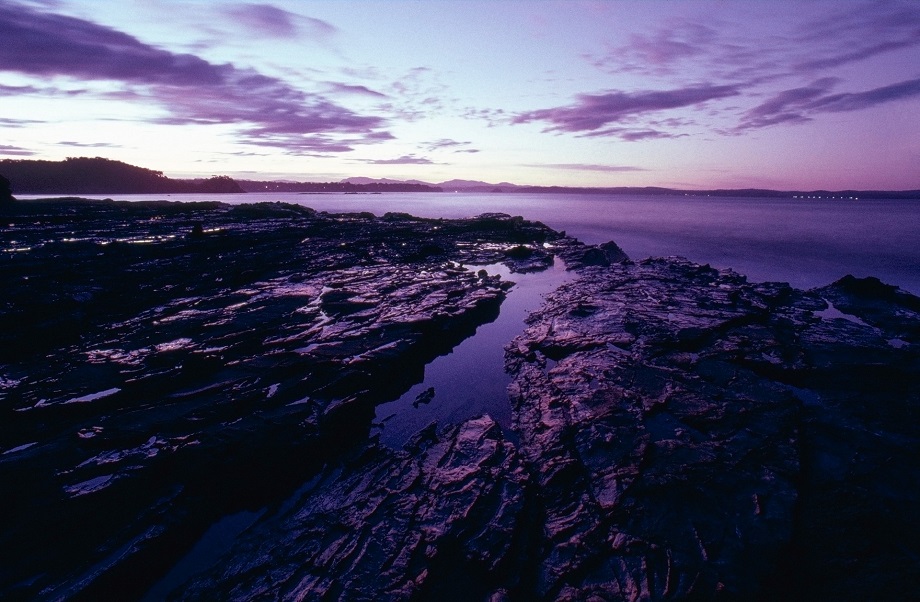
Review Of Energy Accounts Payment Assistance (EAPA) Reform; Have Your Say

National Apology And Recognition For Thalidomide Survivors And Their Families
$135m For Rural And Remote Aged Care Services
Survey About The 15% Aged Care Pay Rise Now Open
- Has it helped to attract and retain more workers to aged care?
- Does it make you want to stay working in the sector?
- Do you feel more valued and rewarded for the work you do?

Ecotherapy Walks Available In Warriewood - Narrabeen
- Connect with nature to feel grounded and calm
- Increase your ability to access creative thinking to help with important decision making
- Understand the science – calming the nervous system and accessing the brains prefrontal cortex
- Connecting to place and understanding that we are ‘a part’ of the earth not ‘apart’ from it
- Mindful connection to the earth helps reduce feelings of anxiety, stress, fear, and depression
- Mindful connection promotes feelings of joy, creativity, strength, and resilience
- Totally free and easily accessible form of (self-guided) therapy to increase wellbeing
41 US states are suing Meta for getting teens hooked on social media. Here’s what to expect next

In the United States, 41 states have filed lawsuits against Meta for allegedly driving social media addiction in its young users (under the age of 18), amid growing concerns about the negative effects of platforms.
The lawsuits allege Meta has been harvesting young users’ data, deploying features to promote compulsive use of both Facebook and Instagram, and misleading the public about the negative effects of these features.
What might we expect to happen next? And are there potential consequences for Australia?
Leveraging Whistleblower Revelations
The most significant suit, filed in a federal court in California, involves 33 states. The claim is based on breaches of state consumer protection statutes and common law principles regarding deceptive, unfair or unconscionable conduct, and federal privacy statutory provisions and regulations (collectively “COPPA”) which specifically protect children.
This co-ordinated action is reminiscent of other class actions in the US and United Kingdom by Rohingya refugees against Facebook for its role in enabling hate speech against their community in Myanmar.
These cases rely in part on revelations made by former Meta employee Frances Haugen in 2021 about the role Facebook’s algorithms play in facilitating harms on the platform. Haugen’s testimony suggests algorithms deployed across Facebook and Instagram were designed to increase content sharing, and therefore profits, using data harvested from users over many years.
These algorithms play a crucial role in determining what kind of content viewers are exposed to, how long they engage with it, and the likelihood of them sharing it.
According to Haugen, Meta made changes to its algorithms in 2018 to prioritise meaningful social interactions. These changes, she said, impacted how content was viewed on the news feed, leading to increased sharing of negative content such as hate speech.
Concerns Over Algorithms And Content
The California case is notable for the specific allegations around strategies used to keep young people interacting with Facebook and Instagram. For instance, the plaintiffs have elaborated on the impact of the “infinite scroll” feature introduced in 2016.
This feature prevents users from viewing a single post in isolation. Instead it provides a continuous stream of content without a natural endpoint. Haugen described this as being similar to giving users small dopamine hits. It leaves them wanting more and less likely to exercise self-control.
The plaintiffs in the California case claim this feature encourages users, and especially young users, to compulsively use the platforms – negatively affecting their wellbeing and mental health.
They say the recommendation algorithms used by Meta periodically present users with harmful materials. These include “content related to eating disorders, violent content, content encouraging negative self-perception and body image issues, [and] bullying content”.
They also allege features such as “variable reward schedules” are implemented to encourage compulsive use by young people. This causes further physical and mental harm (such as from a lack of sleep).
Consequences For Australia
In the US, federal laws substantially restrict liability of online intermediaries such as Meta for content shared by users.
In contrast, Australia’s Online Safety Act empowers the eSafety Commissioner to compel social media platforms and other online intermediaries to remove problematic material from circulation. This includes material relating to cyberbullying of children, cyberabuse of adults, image-based abuse and abhorrent violent material.
The Federal Court can impose significant penalties for violations of the Online Safety Act. But this doesn’t cover all the harmful content on social media, such as some linked to eating disorders and negative self-image.
Addressing young users’ compulsive social media use is a different challenge altogether. Some measures against this are possible. For example, if the US deception allegations are proven, any evidence that this extends to Australian users may ground an action against Meta for misleading or deceptive conduct (or false or misleading representations) under the Australian Consumer Law.
Last year, A$60 million in civil penalties was awarded against Google LLC for false or misleading representations in 2017-2018. A smaller A$20 million penalty was awarded against two of Meta’s subsidiaries in 2023.
Penalties under the Australian Consumer Law have increased since the Google case, likely due to the deep pockets of platforms. Options for courts awarding penalties include 30% of a platform’s turnover, or three times the value of the benefit to the offending entity.
However, platforms are in a stronger position where conduct isn’t misleading, false or deceptive, but is merely “manipulative” or “unfair”. For instance, the infinite scroll feature is unlikely to be considered misleading or deceptive under Australian law.
Australia also has no legislative equivalent to COPPA. Australia’s law of unconscionable conduct requires such a high level of harsh or oppressive conduct that it’s extremely difficult to prove.
One recent unconscionable conduct case brought by a problem gambler based on the addictive design of electronic poker machines failed in the Federal Court.
Shortcomings in the current law have, in part, led to calls for a new prohibition on unfair trading practices. Pressure is also mounting to reform the ineffective and under-enforced Privacy Act.
We Need Collaboration And Innovation
There are still many gaps in Australian law required to protect consumers, especially children, against harms posed by social media platforms. But domestic law can only go so far in protecting people using a medium that operates (mostly) seamlessly across borders.
As such, international law scholars have suggested more creative approaches in the context of online hate speech. One suggestion has been to make platforms accountable for their actions under the laws of the country where they are headquartered, for enabling crimes that have taken place in other jurisdictions.
In 2021, the world welcomed a US district court’s order for Facebook to disclose various materials to The Gambia relating to hate speech against the Rohingya community in Myanmar.
In doing so, the court strengthened The Gambia’s claims in a pending action before the International Court of Justice. This action claims the Myanmar government had, through its genocidal actions against the Rohingya people, breached its obligations under the Genocide Convention – and that hate speech amplified on Facebook enabled the violence.
As society grapples with the implications of mass data collection and profit-maximising algorithms, protecting individuals will require international co-operation and a re-evaluation of legal frameworks.![]()
Kayleen Manwaring, Senior Research Fellow, Allens Hub for Technology, Law & Innovation, and Senior Lecturer, School of Private & Commercial Law, UNSW Sydney and Siddharth Narrain, Lecturer in Law, University of Adelaide
This article is republished from The Conversation under a Creative Commons license. Read the original article.
What is the PanaNatra line of painkillers and can herbal products effectively relieve pain?
Nial Wheate, University of Sydney and Joanna Harnett, University of SydneyIn an era where chronic pain affects millions worldwide, the search for effective and safe pain relief has never been greater.
PanaNatra is a line of herbal products from Haleon, the makers of Panadol. Haleon claims the three PanaNatra’s products, made from plant extracts, help manage and provide relief from mild joint aches, mild muscle pain, and mild pain affecting sleep.
They contain different combinations of four plants:
- Boswellia serrata (contained in the joint and muscle products)
- Curcuma longa (in the joint and muscle products)
- Piper nigrum (just in the joint product)
- Withania somnifera (just in the sleep product).
These products are “listed medicines” in Australia. This means the ingredients are considered broadly low risk, have been used in traditional medicine, and are manufactured to a high standard. But the manufacturer has not provided evidence to the government regulator that they work.
So can herbal ingredients effectively and safely relieve different types of pain?
What Does The Evidence Say?
Let’s consider the evidence for the four main ingredients.
Boswellia serrata
Indian Frankincense (Boswellia serrata) has been described in traditional Indian Ayurveda texts since the 1st century AD. Key active compounds derived from the gum resin of the tree called boswellic acids are thought to have anti-inflammatory effects.

The Boswellia serrata dry concentrate extract (Rhuleave K) used in the Muscle Pain product contains 50 mg of the herb per tablet, whereas the Joint Pain product includes 33.3 mg as a different formulation (Apresflex).
A review of various human clinical trials using a range of formulations of this herb supports its ability to reduce some types of pain and improve function in osteoarthritis. But a key finding of the study was that improvement only begins when Boswellia serrata is used continuously for four weeks and at a dose of at least 100–250 mg per day.
In a clinical trial, 100 mg daily of a Boswellia serrata gum-based product was found to reduce pain and improve physical functions for people with osteoarthritis.
Curcuma longa
Turmeric (Curcuma longa) has been used in Chinese and Indian medicine for at least 2,000 years. It contains a well-known chemical called curcumin, a natural compound used for its anti-inflammatory properties, especially for osteoarthritis.

Turmeric compounds such as curcumin are often combined with Boswellia serrata compounds to improve their anti-inflammatory effects to reduce pain.
A review of 16 different clinical trials found turmeric extracts were effective for knee osteoarthritis.
A similar conclusion was drawn from a review of 11 clinical trials which examined the use of curcuminoids (of which curcumin is one) for one to four months. It found curcuminoids had similar pain-relieving qualities as non-steroidal anti-inflammatory based drugs.
Piper nigrum
Black pepper (Piper nigrum) contains the chemical piperine, which has anti-inflammatory properties.
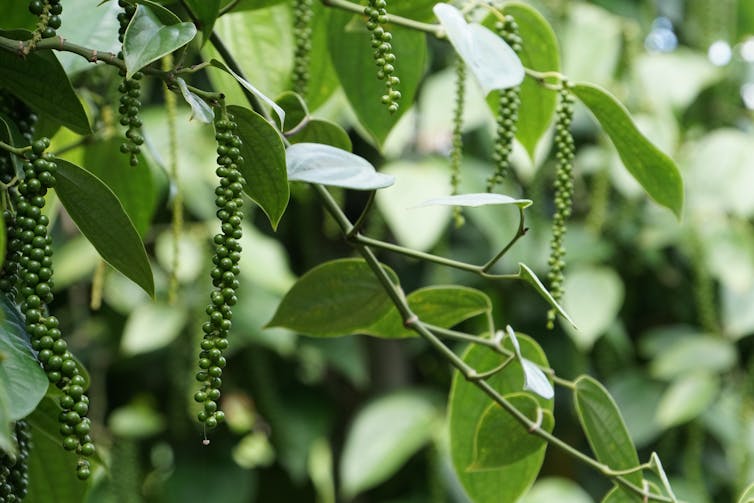
Piper nigrum is often added to curcumin products to improve the absorption of curcumin, as is the case with the PanaNatra Joint Pain product.
For musculoskeletal pain, a preliminary human trial that examined the effects of a 1,000 mg daily dose of Rhuleave K (the extract used in PanaNatra) found it was as effective as paracetamol.
But the study was not placebo-controlled and the dose of paracetamol given (1,000 mg per day) was below the recommended daily intake for pain relief.
Withania somnifera
Withania somnifera (also called Ashwagandha) has been used in traditional Indian Ayurvedic medicine for thousands of years to reduce stress and ease inflammation.
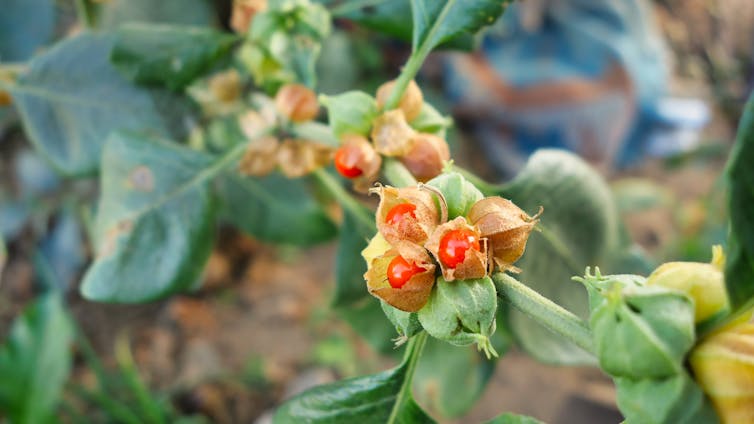
One of the key chemicals appears to be withaferin A which interferes with the inflammatory signalling pathway.
PanaNatra’s Pain and Sleep product contains 300 mg per tablet of a Withania somnifera extract called KSM66.
A human trial found a daily 600 mg dose of Withania somnifera extract improved sleep quality and helped in managing insomnia.
In a separate trial, Withania somnifera was found to improve sleep quality, again when administered at a dose of 600 mg per day.
So What Does This Mean?
Whether, and how well, a herbal medicine works is largely dependent on the formulation (how it’s made and the extract used) and the dose provided. The same herb used in one formulation may result in a different outcome than a different formulation containing the same herb.
It’s also important to note that effectiveness for one type of pain does not mean a product will work for other types of pain.
Overall, similar herb extracts to those that have been included in the PanaNatra products do have some evidence that they work for pain and sleep. Whether they work for you will depend on a number of factors including the effectiveness of the PanaNatra formulation, how much you take, and the extent of your pain.
Are They Safe?
PanaNatra needs to be used carefully by some patients.
Overall, there is insufficient human data to recommend any of these herbal ingredients in pregnancy or lactation. In fact there is some evidence that Withania somnifera may be unsafe to use in pregnancy, and other than the amounts commonly found in food, turmeric and its compounds are not considered safe to use in pregnancy either.
The herbs may also impact the effectiveness and safety of other medicines. For example, the blood levels of the cancer drug tamoxifen may be reduced when taken concurrently with turmeric supplements.
Withania somnifera has been associated with drowsiness and cases of liver toxicity.
Curcuma longa products, including formulations containing curcumin and piperine, have also been associated with liver toxicity. As such, Australia’s Therapeutic Goods Administration has proposed adding warning labels to any products that contain those ingredients. But this discussion is ongoing and a decision won’t be made until next year.
Bottom Line
While there is a long history of traditional use of the herbs in the PanaNatra products, there is limited high-quality scientific evidence for the effectiveness and safety for these specific products.
Pregnant and breastfeeding women should not take these products, and you should not exceed the daily dose recommended by the manufacturer.
If you have an underlying health condition, or are taking other medication, before you try them, consult your doctor or pharmacist to check if these products are suitable for you.![]()
Nial Wheate, Associate Professor of the School of Pharmacy, University of Sydney and Joanna Harnett, Lecturer (Complementary Medicines) Sydney Pharmacy School, Faculty of Medicine and Health, University of Sydney
This article is republished from The Conversation under a Creative Commons license. Read the original article.
New Treatment For Advanced Prostate Cancer Added To The PBS
NSW Government To Fast-Track Top-Quality Building Designs
World First Trial Of Mobile Cardiac Treatment Could Save Lives
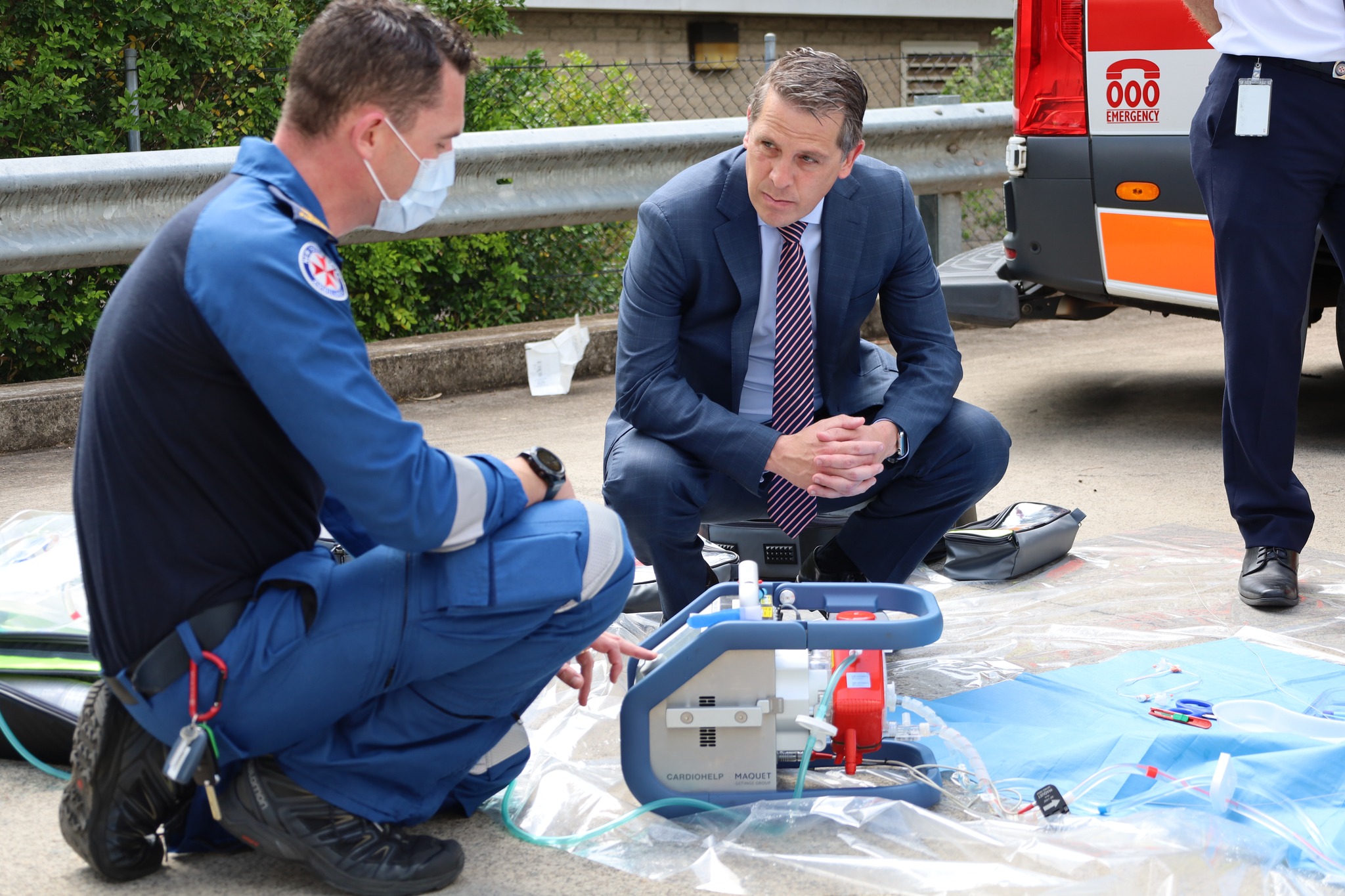
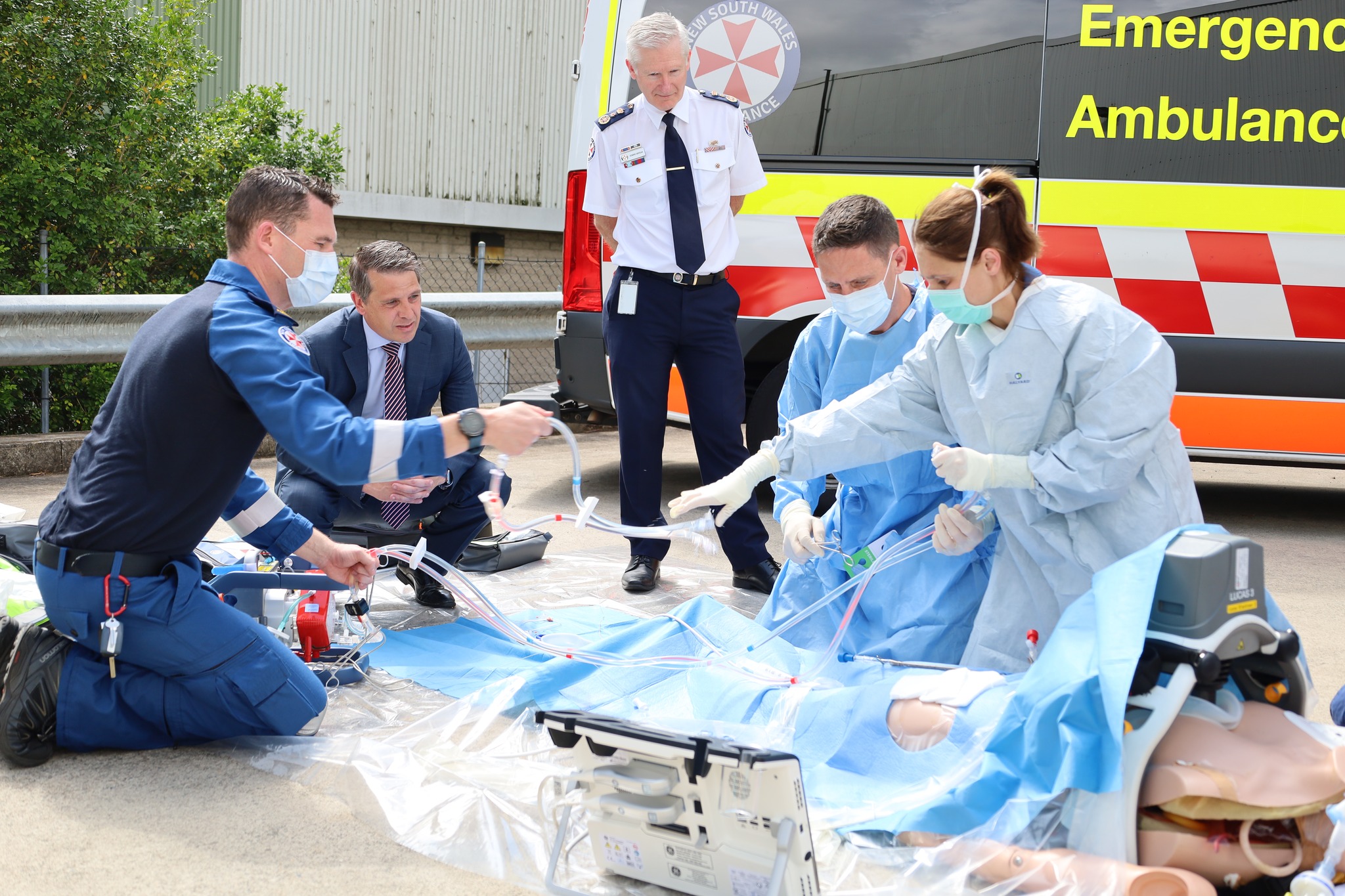
‘I was told to return to work as soon as I regained consciousness.’ Why only a third of assaulted nurses report it to police

Violence against nurses is pervasive. They are more likely to experience physical violence than any other health-care professionals. Violence against nurses occurs in the context of violence against women, with 87.5% of Australia’s nursing workforce identifying as women.
Nurses report being punched, hit, struck, having objects or body fluids thrown at them, being kicked, grabbed, spat on, threatened, pushed, slapped, strangled, scratched, bitten, or sexually assaulted by patients. These actions are assault, which is a crime. In recent years Western Australia, Queensland, South Australia and Northern Territory have implemented tougher penalties for those who assault nurses on the job as a deterrent.
But nurses don’t feel empowered or supported to report these crimes and patients are not being held accountable for their actions. Harsher penalties alone aren’t enough to protect nurses.
Unhelpful Responses From Employers And Police
We surveyed 275 nurses as part of our research. About 83% had been assaulted by patients. Around a third of the nurses in our study reported experiencing more than one form of assault.
But only about one in three assaulted nurses report attacks to the police. Nurses say the support they receive from their employers and police is generally poor, and they feel discouraged from proceeding with the reports they do make. Nurses said:
I felt like the decision was taken away from me and my management didn’t do anything in support of me.
I did not pursue charges as [there was] pressure from police to drop charges and no further support from my department in doing so.

Assaults Still Seen As ‘Part Of The Job’
Nurses in our study spoke about how they see assaults as “part of the job”. As one said:
I was told to return to work as soon as I regained consciousness […] I had to look after the same patient because ‘there aren’t enough staff to replace you, and this is part of nursing […] There is only four hours left of your shift. Then you can go home and sleep it off’.
Another nurse said assaults were common:
[…] this sort of treatment from patients happens often and no one reports it. There’s this sort of culture that you just move on and get over it […] I have been physically and sexually assaulted a few times over the last year but not reported to police as I feel like I’m wasting time and resources and my claim isn’t important enough.
This self-limiting culture appears to be longstanding, and reinforced by substandard responses from their employer and police.
Nurses Don’t Report Based On Misconceptions
In our research nurses thought patients who are intoxicated or have a mental illness wouldn’t satisfy the requirement of a guilty mind (mens rea) required for conviction. Or that, they have to be physically hurt for assaults to be seen as an offence.
But patients who are intoxicated or have mental illness can be held accountable.
In legal terms, neither intoxication or mental illness equate to a lack of capacity to know what is right or wrong. And to say someone cannot be held responsible for their actions due to mental illness, can be seen as stigmatising or unjust. It is not up to a nurse, employer or police to decide a person’s mental capacity. Every person is to be presumed of “sound mind” unless proven otherwise during prosecution.
Another misconception is that nurses have to be physically hurt for assaults to be reported. As one nurse said:
I didn’t think that it was worth reporting it to the police as there was no visible harm done to me.
Harms from assault can be physical, emotional or psychosocial (impact on one’s thought and how they interact with others). However, assault is not characterised by its impact, but rather the act itself. A patient can be guilty of assault if they physically attack a nurse or if they threaten to do so.
Benefits Of Reporting To The Police
Laws help set standards of what is right or wrong in society. To enforce the law, nurses must first report and make a statement to the police, so charges can be laid against a patient who commits violence. Police can then present this evidence to a prosecutor, who makes a decision if there is sufficient evidence for conviction.
Reporting to the police could have far-reaching impacts including:
- enforcing a culture of respect and safety, improved staff retention and wellbeing
- helping patients learn their rights to seek health care must be balanced with nurses’ rights to a safe workplace
- setting a consistent standard of acceptable behaviours in society that includes health-care settings.
Many nurses have been assaulted by patients, but only few are reporting to the police. Employers and authorities must work together to empower and support nurses to report assaults. It is through this collective effort that we can hold patients to account, and ultimately keep nurses safe from harm. ![]()
C.J. Cabilan, Adjunct Lecturer, The University of Queensland
This article is republished from The Conversation under a Creative Commons license. Read the original article.
Does screen use really impact our thinking skills? Our analysis suggests it could
Michoel Moshel, Macquarie University; Jennifer Batchelor, Macquarie University; Joanne Bennett, Australian Catholic University, and Wayne Warburton, Macquarie UniversityScreens have become seamlessly integrated into our daily lives, serving as indispensable tools for work, education and leisure. But while they enrich our lives in countless ways, we often fail to consider the potential impact of screen time on our cognitive abilities.
In a new meta-analysis of dozens of earlier studies, we’ve found a clear link between disordered screen use and lower cognitive functioning.
The findings suggest we should exercise caution before advocating for more screen time, and before introducing screens into even more aspects of daily life.
Young People’s Screen Time Is Increasing
In 2020, a UNSW Gonski Institute for Education report noted a concerning statistic: about 84% of Australian educators believe digital technologies are distracting in a learning environment.
And according to the ABC, a recent Beyond Blue survey of Australian teachers identified excessive screen time as the second-most significant challenge for young people, just behind mental health issues.
Despite mounting concerns, more than half of Australian schools have embraced a “bring your own device” policy. Students are spending more time online than ever before and starting at increasingly younger ages. A 2021 report by Common Sense Media estimated tweens spend an average of 5 hours and 33 minutes using screen-based entertainment each day, while teenagers devote a whopping 8 hours and 39 minutes.
A surge in screen use has led to some individuals, including children, adolescents and adults, developing screen-related addictions. One example is gaming disorder, for which 2–3% of people meet the criteria.
What Is ‘Disordered Screen Use’?
The impact of screens on our cognitive abilities – that is, our thinking skills such as attention, memory, language and problem-solving – has sparked much debate.
On one hand, some researchers and reporters claim screen use can have negative effects, such as health problems, shortened attention spans and hindered development.
On the other, schools are increasingly adopting technology to boost student engagement. Tech companies are also marketing their products as tools to help you enhance your problem-solving and memory skills.
Our recent study sought to understand the potential cognitive consequences of “disordered screen-related behaviours”. This is a broad category of problematic behaviours that may include screen dependency, and persisting with screen use even when it’s harmful.
We conducted a meta-analysis of 34 studies that explored various forms of screen use (including gaming, internet browsing, smartphone use and social media use) and compared the cognitive performance of individuals with disordered screen use to those without it.
Our findings paint a concerning picture.
Differences In Cognitive Function
Across these rigorously peer-reviewed studies, individuals with disordered screen use consistently demonstrated significantly poorer cognitive performance compared to others.
The most affected cognitive domain was attention, and specifically sustained attention, which is the ability to maintain focus on an unchanging stimulus for an extended period.
The second-most notable difference was in their “executive functioning” – particularly in impulse control, which is the ability to control one’s automatic responses.
Interestingly, the type of screen activity didn’t make a difference in the results. The trend also wasn’t confined to children, but was observed across all age groups.
Two Ways To Interpret The Results
Why do people with disordered screen-related behaviours have poorer cognitive functioning?
The first explanation is that disordered screen use actually leads to poorer cognitive function, including poorer attention skills (but we’ll need more experimental and longitudinal studies to establish causality).
If this is the case, it may be the result of being constantly bombarded by algorithms and features designed to capture our attention. By diverting our focus outward, screen use may weaken one’s intrinsic ability to concentrate over time.
Crucially, impaired attention also makes it harder to disengage from addictive behaviours, and would therefore make it harder to recognise when screen use has become a problem.
The second explanation is that people who already have poorer cognitive functioning (such as less inhibitory control) are more likely to engage in disordered screen use.
This could be a result of the plethora of addictive cues designed to keep us glued to our screens. Being bombarded by these could make it harder to pull the brakes on screen use.
Although the literature doesn’t seem to favour this explanation – and does seem to suggest that cognitive functioning is impaired as a result of disordered screen use – it’s still a possibility we can’t rule out.
Attention is the bedrock of everyday tasks. People with weakened attention may struggle to keep up in less stimulating environments, such as a static workplace or classroom. They may find themselves turning to a screen as a result.
Similarly, people with less inhibitory control would also find it more challenging to moderate their screen use. This could be what drives them towards problematic screen-related behaviours in the first place.
Who Should Shoulder The Responsibility?
Research indicates people with impaired cognitive functioning usually aren’t as well equipped to moderate their own screen time.
Many users with disordered screen use are young, with mainly males engaging in internet gaming and mainly females engaging in social media use. Neurodiverse people are also at greater risk.
Tech companies are driven by the goal of capturing our attention. For instance, Netflix chief executive Reed Hastings acknowledged the company’s most formidable competitor was sleep.
At the same time, researchers find themselves struggling to keep up with the pace of technological innovation. A potential path forward is to encourage open-access data policies from tech companies, so researchers can delve deeper into the study of screen use and its effect on individuals. ![]()
Michoel Moshel, PhD/Masters Clinical Neuropsychology Candidate, Macquarie University; Jennifer Batchelor, Associate Professor, School of Psychological Sciences, Macquarie University; Joanne Bennett, Lecturer, Australian Catholic University, and Wayne Warburton, Associate Professor, Macquarie University
This article is republished from The Conversation under a Creative Commons license. Read the original article.
Infrastructure review recommends culling 82 planned projects
Michelle Grattan, University of CanberraThe Albanese government’s infrastructure review has recommended 82 projects should be cancelled, after finding the $120 billion program unsustainable in its current form.
Construction has not started on these projects. The review recommends the savings be used to provide “headroom” in the program which is facing a large cost overrun.
The review recommended 100 projects, not yet under construction, should go ahead, while a further 56, also unstarted, should proceed but on the basis that identified risks are addressed satisfactorily.
Thirty six projects, not under construction, should complete planning, detailed costings, and rescoping, with the allocated funding used for “headroom”, the review says.
The government says it accepts all the review’s recommendations in principle and will announce details on Thursday.
The review estimates a $32.8 billion cost blowout in the program, of which an estimated $14.2 billion is on projects not yet under construction.
The report says the ten-year pipeline of projects “cannot be delivered within the $120 billion allocation, even with current contributions from jurisdictions”.
“The Australian Government cannot afford within the current program settings, to meet the identified cost pressures, nor add any new projects for delivery to the pipeline in the next ten years, without significant changes taking immediate effect,” the report says.
Some projects “do not demonstrate merit, lack any national strategic rationale and do not meet the Australian Government’s national investment priorities.
"In many cases, these projects are also at high risk of further cost pressures and/or delays. A number of projects were allocated a commitment of Australian Government funding too early in their planning process and before detailed planning and credible design and costing were undertaken.”
The review says the federal government can cease or pause federal funding to projects, to create “headroom for reallocation to merit-based projects, to fund construction once planning, design and detailed costings are complete or to relieve some of the estimated cost pressures on current projects”.
The government says it will not cut the overall size of the A$120 billion program. It is committing extra funding for a number of projects.
The government has been in discussions with the states and territories over the revamping of the program, with the Queensland government – which faces an election next year – warning against cuts to its state.
Among the projects the government says it is maintaining are the Melbourne Airport Rail Link, the Milton Ulladulla Bypass, the Singleton Bypass, the Muswellbrook Bypass and the Tasman Bridge Upgrade.![]()
Michelle Grattan, Professorial Fellow, University of Canberra
This article is republished from The Conversation under a Creative Commons license. Read the original article.
Shining a light on injustice: how an inquiry fought for LGBTIQ recognition
Justin Ellis, University of Newcastle and Nicole L. Asquith, University of TasmaniaThe New South Wales Special Commission of Inquiry into LGBTIQ hate crimes has held its final public sitting in Sydney today.
The special commission investigated unsolved suspected hate crime deaths of LGBTIQ people (or people who were presumed to be LGBTIQ) in NSW between 1970 and 2010.
In his closing remarks, Justice John Sackar reiterated that the objective was “to provide some recognition of the truth” for LGBTIQ victims in cases where “the response of the community, of society, [and] of its institutions to these deaths was sadly lacking”.
The inquiry has revealed new leads in decades-old cold cases, and importantly, been dogged in its pursuit of justice for victims and their families.
Months Of Hearings, Piles Of Evidence
Launched by the NSW government in April 2022, the special commission had extensive powers to compel witnesses to give evidence and to compel the production of more than 150,000 documents.
The deaths of 32 people have been examined in 17 public, and 48 private hearings.
The special commission was driven by a need to clarify aspects of previous investigations by the NSW Police Force, including Strike Forces Parrabell, Macnamir, and Neiwand.
This was recommended by a NSW parliamentary inquiry into gay and transgender hate crimes between 1970 and 2010.
Research published by ACON, a community health organisation, was integral in the inquiry.
Breakthroughs In Decades-Old Cases
The special commission has uncovered a range of issues with some of the initial investigations. These included lack of investigation, forensic testing issues, and problems with the Strike Force inquiries undertaken by NSW Police Force.
But it has also made several breakthroughs. Justice Sackar noted two of these in his closing remarks.
One is in relation to the death of Crispin Dye, who died on Christmas Day in 1993 after being assaulted two days earlier.
In the 30 years since 1993, almost none of the exhibits collected by the NSW Police Force at that time had been subjected to forensic testing. This included his bloodstained clothing.
The special commission arranged for such testing to occur, and which led to two major developments.
It unearthed a match to a DNA profile taken from a 2002 crime scene. This resulted in the identification of an unknown (but now deceased) man and revealed possible avenues of inquiry into him and his associates.
The second case mentioned was that of Ernest Head, who was murdered in his home in Summer Hill in 1976. His body was found naked, having been stabbed 35 times.
The Special Commission arranged for re-analysis of palmprints and certain other exhibits in relation to Head’s case, which resulted in the identification of a known (but now deceased) man, thought to be involved in Head’s death.
The man in question had never previously been identified as a possible person of interest in relation to this unsolved homicide.
Victims Front And Centre
The special commission received and reviewed information provided by more than 130 members of the public and has clarified ambiguities over unsolved suspected hate crime deaths of LGBTIQ people in NSW.
In addition to the cases noted above, it has generated new leads in cold cases that may provide comfort to family and friends who continue to seek answers about what happened to their loved ones.
In shining a light on everything that is known or could be found out about what happened in these cases, Justice Sackar stated in his closing remarks:
Many voiceless people have been given a voice. Recommendations will be made. Improvements in processes and procedures should follow. There is scope for people of goodwill – of whom there are many in this arena – to come together, if they so choose, and work towards a better future.
As such, the special commission has emphasised the importance of the pursuit of justice, even decades after crimes have been committed.
State Commission, National Significance
At a time when LGBTIQ individuals and communities in Australia and globally are experiencing a resurgence of online and in-person hate, the Commission’s findings are likely to have national ramifications.
Given the indifference towards violence and hostility directed at LGBTIQ people in NSW over the 40 year period examined by the special commission, it is timely that other Australian jurisdictions consider whether they also need to address these issues.
The special commission is a timely reminder of the necessity for LGBTIQ individuals and communities to remain vigilant, for police to better respond and listen to victims’ and witnesses’ experiences, and for governments to actively prioritise inclusion.
The final report from the special commission will be handed to the NSW Governor by 15 December 2023.![]()
Justin Ellis, Senior Lecturer in Criminology at the University of Newcastle, University of Newcastle and Nicole L. Asquith, Director, Tasmanian Institute of Law Enforcement Studies, University of Tasmania
This article is republished from The Conversation under a Creative Commons license. Read the original article.
Major cyberattack on Australian ports suggests sabotage by a ‘foreign state actor’

A serious cyberattack has disrupted operations at several of Australia’s largest ports, causing delays and congestion. Late on Friday, port operator DP World detected an IT breach that affected critical systems used to coordinate shipping activity.
DP World is one of Australia’s largest port operators, handling approximately 40% of the nation’s container trade across terminals in Brisbane, Sydney, Melbourne and Fremantle.
DP World reacted quickly to contain the breach, including shutting down access to their port networks on land, to prevent further unauthorised access. This means they essentially “pulled the plug” on their internet connection to limit possible further harm.
DP World senior director Blake Tierney said it is still possible to unload containers from ships, but the trucks that transport the containers cannot drive in or out of the terminals. This is a precaution when the full extent of a data breach is not known.
The latest media reports suggest cargo could be stranded at the ports for several days.
Australian Federal Police and the Australian Cyber Security Centre are investigating the source and nature of the attack, deemed a “nationally significant incident” by federal cybersecurity coordinator Darren Goldie.
Is There Evidence Of This Being A Malicious Attack?
The timing, scale and impact of the disruption do suggest this was a targeted attack.
It occurred on a Friday night, when most staff were off duty and less likely to notice or respond to the incident. The target was a major port operator that handles a significant share of Australia’s trade and commerce. Such an attack can have serious consequences for Australia’s economy, security and sovereignty.
The identity and motive of the attackers are not yet known, but the skills needed to mount such an attack suggest a foreign state actor trying to undermine Australia’s national security or economic interests.
In recent years, cyberattacks on ports and shipping have become more common. For instance, in February 2022, several European ports were hit by a cyberattack that disrupted oil terminals. In another incident early this year, a ransomware attack on maritime software impacted more than 1,000 ships. Also in January 2023, the Port of Lisbon was targeted by a ransomware attack which threatened the release of port data.
These incidents highlight the vulnerability of the maritime industry to cyber threats and the need for increased cybersecurity measures.
How Might The Attack Have Happened?
So far, the details have not been disclosed. But based on what we know about similar cases, it is possible the attack took advantage of vulnerabilities in DP World’s system. These vulnerabilities are normally closed by applying a “patch” in the same way your browser needs updating every week or two to keep it safe from being hacked.
Once hackers gained access, the breach likely pivoted to infiltrate the operational systems that directly manage port activities. Failing to isolate and secure these control networks allowed the incident to impact operations.
It is also possible access was gained via a phishing email or a malicious link. Such an attack may have tricked an employee or a contractor into opening an attachment or clicking on a link that installed malware or ransomware on the network.
Now What?
DP World is working urgently to rebuild affected systems from backups. However, resetting port management networks is a complicated process that could take days or weeks. Until the operator’s core systems are securely restored, cargo flows may face ongoing delays.
The Australian government is closely involved in managing the situation, providing support and advice to DP World and other affected parties through the Critical Infrastructure Centre and the Trusted Information Sharing Network. These government agencies are equipped to provide timely support in times of crisis.
How Can We Prevent Future Attacks?
The DP World cyberattack is a clear warning of the risks to the essential transportation services that power Australia’s trade and commerce.
Ports are difficult targets. To cause such a disruption, the attackers would have to be highly skilled and plan ahead. The fact ports have been successfully hacked more than once in recent times suggests threats from cybercriminals are steadily increasing.
For companies such as DP World, it’s important to continuously monitor networks in real time, promptly install security updates and keep critical systems separated from each other.
Dedicated, well-resourced cybersecurity personnel, employee training and incident response plans are key to improving preparedness.
Ports should closely coordinate with government counterparts and industry partners on intelligence sharing and cybersecurity best practices. Cyberthreats evolve so quickly, always being prepared for the latest one is a significant challenge.
For a seamless flow of goods, we need to be constantly vigilant of potential threats to our supply chain infrastructure. This latest attack is an urgent reminder that cyber resilience must be a top priority.![]()
David Tuffley, Senior Lecturer in Applied Ethics & CyberSecurity, Griffith University
This article is republished from The Conversation under a Creative Commons license. Read the original article.
TV can be educational but social media likely harms mental health: what 70 years of research tells us about children and screens

Ask any parent and it’s likely they’ll tell you they’re worried about their kids’ screen time. A 2021 poll found it was Australian parents’ number one health concern for their kids – ahead of cyberbullying and unhealthy diets. But how worried should parents be?
The information that’s out there can be confusing. Some psychologists have compared it to smoking (amid concerns about “secondhand screen time”), while others are telling us not to worry too much about kids and screens.
Academics are also confused. As The Lancet noted in 2019, researchers’ understanding of the benefits, risks and harms of the digital landscape is “sorely lacking”.
In our new research, we wanted to give parents, policymakers and researchers a comprehensive summary of the best evidence on the influence of screens on children’s physical and psychological health, education and development.
What We Did
Meta-analyses are one of the best forms of evidence because they summarise the findings of lots of research all at once.
This can give us a much better view of what is happening than just looking at a single study of one group of people. So we gathered all meta-analyses conducted in English on any form of screen time in children, regardless of the outcome.
We found 217 meta-analyses, with almost half published in just the last two years. These meta-analyses represent the findings from 2,451 individual studies and have a combined sample size of more than 1.9 million children and adolescents up to 18 years. The individual studies were done between 1954 and 2021 and the meta-analyses were done between 1982 and 2022.

The Good News
We found some things that should reassure parents.
The overall size of the influence of screens across the outcomes (for example, depression, body weight, literacy and sleep) in children were small.
Almost all of the results had correlations less than 0.2, which is about the same as the correlation between height and intelligence. That doesn’t mean the effect for an individual child will always be that small, just that on average, the relationship is small.
How Kids Use Screens Matters
We also found it’s not the screen itself that really matters but what’s on it and the way kids use it.
Television is a form of screen time that has worried parents for more than half a century. We did find general television viewing was associated with poorer academic performance and literacy skills. Our study did not give us time limits, but found a linear relationship. That is, the more TV a child watched, the poorer their literacy skills were.
But if the program was educational or if the child was watching with a parent, we found there was a benefit to their literacy. This is probably because it gives parents an opportunity to talk about things in the show (“I think Bluey is feeling dissapointed”) or ask questions (“what is Bingo drawing?”) which develops language skills.
The Not So Good News

We did find some forms of screen time are consistently associated with harm and had no evidence of benefits.
Chief among these was social media, which was associated with depression, anxiety and risk taking. Again, our research found a relationship between the more time a child spent on social media, the more likely they were to have a mental health issue.
This is similar to the advice released this year from the US Surgeon General. This noted while social media could provide community and connections for young people (particularly from marginalised groups), it could also harm their mental health.
What Does It Mean?
As other education experts have noted, “screen time” is a bit of a useless term.
Nobody thinks facetiming Nanna and scrolling TikTok are equivalent, but both would fall into the category of “recreational screen time” in the Australian guidelines.
So, a key message from our study is to focus less on an unachievable time limit, and instead focus on what kids are actually doing on screens. Try to steer them towards educational apps, TV programs and video games.
But it can’t be education all the time – kids also need time for recreation. And if you watch with your child, it can also have benefits.
Don’t Forget To Be Active
Regardless of what screen-based activities you choose to allow, remember most screen time is sedentary. Long periods of sitting aren’t great for kids (or adults!), so breaking up these periods with movement is still important.
Ultimately, the most important factor for child development is quality parenting. Being present, spending quality time and creating a caring environment are what really make a difference for children. You matter more to your child’s mental and physical health than the screen.![]()
Taren Sanders, Research Fellow, Institute for Positive Psychology and Education, Australian Catholic University; Chris Lonsdale, Deputy Provost, Australian Catholic University; Michael Noetel, Senior Lecturer in Psychology, The University of Queensland, and Philip D Parker, Pro-vice-chancellor Research, Australian Catholic University
This article is republished from The Conversation under a Creative Commons license. Read the original article.
Insecure renting ages you faster than owning a home, unemployment or obesity. Better housing policy can change this
Amy Clair, University of Essex; Emma Baker, University of Adelaide, and Meena Kumari, University of EssexPeople’s experiences of private rental housing are linked to faster biological ageing, our recent research finds.
While chronological ageing happens at the same speed for everyone, biological ageing varies greatly. It depends on the lives we lead and the risks we’re exposed to. Biological age reflects the gradually accumulating damage to cells and tissues in the body.
Our research explored associations between pace of ageing and many aspects of housing and other social determinants of health. Our strongest finding about housing was that people living in a privately rented home tended to age faster than those who owned their home outright. Every year of private renting was associated with an extra 2.4 weeks of ageing on average.
Our findings also suggest being a private renter has a greater effect on biological age than being unemployed (adding about 1.4 weeks of ageing per year), obesity (about 1 week), or being a former smoker (about 1.1 weeks).
The insecurity of private renting appears to be the key factor in its biological ageing effect. The good news is that policies that improve housing security can redress this.
How Do We Measure Biological Age?
Faster ageing is associated with poorer health. Outcomes include poorer physical and cognitive function and a higher risk of chronic illness and even early death.
To measure ageing, we use an indicator of DNA methylation. This is an epigenetic process – a way in which the environment can affect how our genes are expressed. By analysing the locations of DNA methylation across a person’s DNA, we can estimate their pace of biological ageing.
It’s hard to get the data for this sort of analysis. We needed blood samples that have gone through complex processing to estimate biological ageing, as well as survey data on many aspects of people’s lives. We controlled for income and health behaviours, among other things.
The data we used describe the British population, but our findings are directly transferable to Australians. Given the increasing numbers of renters in Australia, many in insecure housing, our findings are directly relevant to our current housing debate.
The experiences of private renting are similar in Britain and Australia. Short tenancy agreements (12 months on average in Australia) mean insecurity is a feature of private renting in both nations.
No-fault/no-grounds/no-cause evictions in some states further undermine renters’ security. Even renters who do everything right can be evicted at short notice.
Insecure Housing Is Bad For Your Health
We found no negative effects for people renting social housing. In both Britain and Australia, social renters have far greater security of tenure than private renters. This suggests it is not renting itself that is related to faster ageing, but specifically the insecurity of private renting.
These findings are important for Australian housing policy. The social housing sector – managed by state or community providers – has shrunk. Today less than 4% of households are in social housing.
Governments have edged away from publicly provided social housing. They prefer to subsidise renters in the private sector.
The role of private rental housing has also changed in both countries. Rather than being a form of housing in which a relatively small number of people live in for a short time while studying or starting their career, more people are living in privately rented homes for longer. As access to both social housing and home ownership becomes harder, many will probably rent for life.
This means more people are exposed to housing insecurity and the negative health impacts for longer.
What Does This Mean For Policy?
Public debate and health messaging often focus on individual behaviours and characteristics such as smoking and obesity. Our research emphasises how important housing is for people’s health. It’s also an area where policy changes can make a big difference.
The insecurity of private renting in Australia and Britain is not inherent to private renting itself. It’s a result of policy choices that:
- emphasise housing as an asset
- minimise the state’s role in providing or regulating housing
- do little to protect renters.
This approach can change, and the appetite for change appears to be increasing. There are efforts to end no-fault/no-grounds evictions in both Australia and Britain.
State governments have talked about ending no-grounds evictions. New South Wales has yet to do anything about it. Despite reforms in other states, they still permit no-grounds evictions when fixed-term leases end.
Scotland has adopted a new model of tenancy that does not permit no-fault evictions with few exceptions – to allow landlords to sell the property, for example. The UK government has been talking about ending such evictions since 2019, but progress has been slow.
However, there are glimmers of hope. The Australian government is paying more attention to renters’ needs. South Australia is working to end no-grounds evictions for both fixed and periodic tenancies. In NSW, the new government has promised to end such evictions.
In the UK, the Renters (Reform) Bill finally had its second reading on October 23.
Private renting can work better for tenants, but shouldn’t be the only option for people who don’t own their homes. Our finding that renting social housing was no different to outright ownership lends weight to calls for greater support for social housing. Housing should be good for everyone’s health, whether or not they own their home.![]()
Amy Clair, Lecturer, Australian Centre for Housing Research, University of Adelaide, and Research Associate, ESRC Research Centre on Micro-Social Change, University of Essex; Emma Baker, Professor of Housing Research, University of Adelaide, and Meena Kumari, Professor of Biological and Social Epidemiology,, University of Essex
This article is republished from The Conversation under a Creative Commons license. Read the original article.
Chemotherapy Day Unit Now Available At Hornsby Hospital
- refurbishment and expansion of psychiatric emergency care centre
- refurbishment and expansion of the Medical Assessment Unit (MAU)
- outpatient ambulatory care services, including the provision of a day chemotherapy unit, renal dialysis unit and haemodialysis unit.
- expansion of BreastScreen NSW
- expansion of oral health services at Hornsby Hospital.
- integration of community health services
- a rooftop helipad.
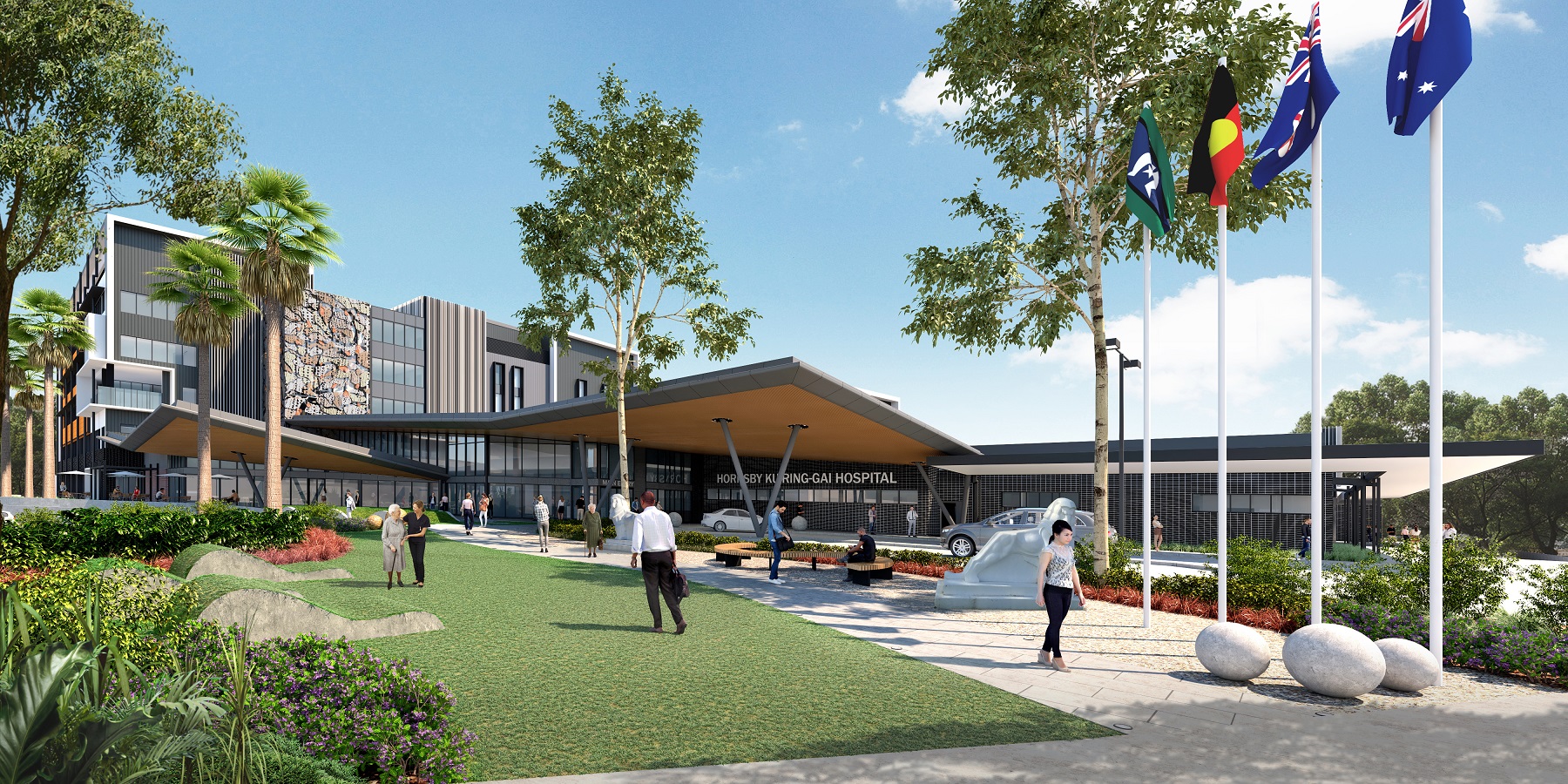
Ammonia For Fertilisers Without The Giant Carbon Footprint: UNSW
Rats Have An Imagination: New Research
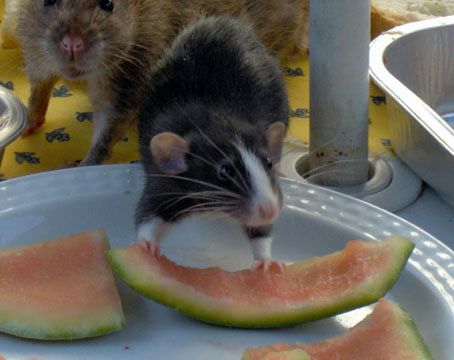 As humans, we live in our thoughts: from pondering what to make for dinner to daydreaming about our last beach vacation. Now, researchers at HHMI's Janelia Research Campus have found that animals also possess an imagination.
As humans, we live in our thoughts: from pondering what to make for dinner to daydreaming about our last beach vacation. Now, researchers at HHMI's Janelia Research Campus have found that animals also possess an imagination.AI Faces Look More Real Than Actual Human Face: ANU Research

Disclaimer: These articles are not intended to provide medical advice, diagnosis or treatment. Views expressed here do not necessarily reflect those of Pittwater Online News or its staff.